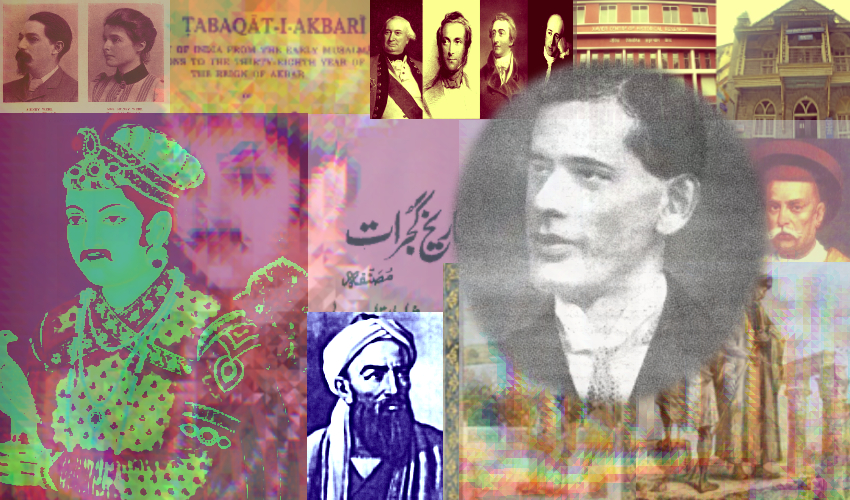
What does the ‘business of history’ entail? So many edifying books, essays and articles, and painstakingly retrieved and translated primary sources that we see and hear of, that are organised and available so that the researchers of today can stand on the shoulders of giants as well as the shoulders of the giants these giants stood on— how did they all come to be? This landmark address by Sir Shafaat Ahmad Khan, at the founding of the stalwart institution that we have come to know today as the Indian History Congress, gives us a sense of this— a holistic sense.
Sir Shafaat was not just a remarkable historian but also a remarkable personality and political figure in the first half of the twentieth century. Besides the bio we have provided at the end, you can read more about his life and career here. Sir Shafaat’s immense address from 1935, provides not just a clear idea of the Indian historyscape of the 1930s—so that we may set aside some moments to appreciate the blood and sweat of archivists, scholars and institution builders who have played a significant role in providing us with the history we treasure so—but also teachings and predictions that can serve, and may hopefully continue to serve, as crucial aids for the historian and history-lover of today.
The address has been plotted into 22 sections that take you through the workings of history as an art and a science— from the “high tradition of selfless and unostentatious research” that accompanies the collation, translation and publication of manuscript material, for instance, to the fact that “History consists, not merely in the organization, collection and examination of material, but also in its interpretation” and that “Interpretation is the core of history”.
Here below is an outline of the vast study that Sir Shafaat’s address comprises:
– the work done by the Maharashtra School of historians and the fact that “the National consciousness which found vigorous expression in the brilliant achievements of some of our foremost leaders” and “the supremacy of Maharashtra in the national movement of modern India” could be traced to this;
– he compares the work done by historians in India and abroad and their different approaches;
– historical biases and prejudices that creep in—prompted by culture (especially with regard to understanding the conflict as well as synthesis between cultures)—and objective standards they should be gauged against (the “archive method of history” without “prejudices” or “passions” but “a keen and earnest desire to seek the truth”);
– historical research being undertaken by agencies of the (British) Indian central government as well as those of princely states;
– the urgent need for coordination among various agencies and bodies;
– gaps in research and new ideas and fields that need to be explored (eg. not just a focus on political history but the histories of village organisations, religious towns and connected ideas and movements, economic history, art history etc.);
– the role of the All India Modern History Congress (which became the Indian History Congress)— especially the necessity of avoiding “history in tabloid form” and to be wary of spending an inappropriate amount of resource and energy in “tracing a particular plot”;
– the state of historical work on the pre-Mughal and Mughal period; the importance of context, and the need to differentiate between eulogies produced by courtiers and actual history (eg. by employing “effective correctives” via the accounts of private citizens and foreign travellers); the importance of Farmans among primary sources of history and so much other manuscript material in vernacular, which require publication and translation; the listing of voids in historical knowledge during these periods (eg. the Arab conquest of Sindh, the history of Muhammad Ghori and early Slave Kings of Delhi, the administration of Balban, Qutbuddin Aibek, Jalāluddin Firuz Khilji, Sayyid and Lodi dynasties, Humayun, a serious attempt to effect a partial separation between religion and administration during Akbar’s reign, procedure at Mughal courts, the functions of the Kotwãl, the Diwan, the Bakhshi and the Subedār, revenue administration under Sher Shah and Akbar, the relative merits of the Zamindāri and Raiyatwãri systems, Indian art, religion and social movements during the Moghul period, military history, architecture) that need to be filled with more intensive research and the role institutions can play in this;
– histories of the smaller kingdoms: Eg. the Sharqi dynasty of Jaunpur (a culture-state like medieval Brussels or Florence), the dynasties of Malwa and Gujarat, Kashmir, the medieval kingdoms of Bengal, the Bahmani Empire and its off-shoots, histories of architecture in many princely states, a new history of Rājputāna (the causes of the decay of the Rajput States in the 18th century);
– the period of British Indian history stands “in marked contrast with that traversed so far”, due to “a mass of voluminous and prolific material, which it would be difficult to parallel in other countries”. “The reason for it is to be found in the fact that the Directors of the Company being six thousand miles away from the scene of operation were most suspicious of any departure from the minute and vexatious restrictions which they imposed on their factors.”; the histories of successive Governor Generals; the direction for further research outlined;
– The Mutiny and After: “The post-Mutiny period is too recent, and too much involved in controversies which are still going on, to be capable of dispassionate and balanced treatment. Important documents are not yet accessible; the minutes of the Governor-General’s councils must remain hermetically sealed till after a century, while the secrets of the India Office records must be closely preserved and jealously guarded for some time.”; the study of “institutions and constitutions”; tracing the relation of the Provincial to the Central Government throughout Indian history; the policy adopted by various provincial governments towards self-governing bodies within their jurisdiction; the work of the Bramho Samaj, the Arya Samaj, the Servants of India Society, etc., “still awaits historians of the ‘requisite training and breadth of view. The work should not be undertaken from a sectional point of view, but should be studied in its bearings on the spiritual growth and the intellectual progress of the people of India as a whole”; “We need competent and comprehensive histories dealing with the evolution of the present constitution, not in a spirit of gross adulation or blind partisanship, but in a spirit of steadfast, honest inquiry, conducted not with a view to any personal or political aims, but solely with the object of objective and scientific study.”
– an impartial investigation of history: “I dread the prospect of a long line of histories of India written by Muslims, Mahrattas, Sikhs, Bengalis and Pathans, each from his own point of view, denouncing things, measures and governments with which such writers are in disagreement, in a language of license, with the rancour and vigour of professional scribblers. Such a contingency has not yet arisen. I pray and hope that it will never arise, for if once the flood-gates of sectional histories are let loose, it would be quite impossible to dam them. The danger must be guarded against with all the strength at our command, in order that our national histories may be free from the incubus of fanaticism.”
– the collation and publication of manuscripts material (especially from families who have inherited such from their ancestors); the need for a manuscripts commission to undertake work of an ‘all-India character’;
– the documents at the Peshwa’s Daftar in Poona to be open to all students of history;
– the need for expert archivists, trained in the methods, under the auspices of universities;
– the need for a revised edition of Elliot and Dowson’s History of India as told by its own Historians
– a list of problems with universities and their teaching of history and contribution to historical research (“Have the present Universities succeeded in organizing and stimulating research on a scale which would justify our regarding them as nurseries of learning and culture? Have they given evidence of the creative energy and brilliant leadership which even a third-rate German University has frequently shown? What progress has actually taken place in the adaptation of our Universities to the complex problems with which India will be faced in the immediate future? To what extent, if any, have the numerous problems of history referred to in this address been solved by them?”); a list of reforms suggested to address such problems;
– emphasizing the function of the Congress: “the exchange of views among scholars, the lack of which has been severely felt by many historians, will be frequent and effective, and the experience gained by researchers in other fields will be available to all, in a way which has never been possible so far”; “to give an impetus to research on an all-India basis, in a systematic and organized form, on a permanent basis, through a strong and effective organization”; Most importantly: “The All India Modern History Congress knows no politics; it will not serve the interest either of our national life and thought propagandists who paint the glories of their country’s past in a flamboyant language and consider Western influence and European culture primarily responsible for the low position which their country occupies in the society of autonomous communities, nor will it support writers who, obsessed with prejudice and racial pride, have completely ignored those features of which have maintained and preserved the continuity of our cultural life, and the stability and permanence of our indigenous institutions”; Also: “The Congress is not the forum for the dissemination of theories of racial supremacy or political predominance, and nothing can be or is more fatal to the healthy formation of sound opinion on the history of India than the manipulation and distortion of facts of history to serve the ends of political parties in the country. It is exclusively intended for scholars of history, and to the brotherhood of historians the controversies of the day make no appeal”;
– a new Indian nationalism and where Indian historical research and interpretation fits into this: “no Indian historian should ignore the broad generalisations which should underlie Indian historical research as a whole… We must not divide ourselves into watertight compartment classes of Mahratta, Sikh, Muslim, and Bengali historians. While the subject may be concerned only with a small period of Indian History, every Indian historian should aim at a conception of united India. This is the noblest and truest legacy of fifty years of rapid progress. We are not merely Mahrattas and Muslims, we are also part of a larger whole, and it is our duty as historians to emphasise this point, and bring home to the young the spiritual energy and intellectual force which impelled many of our national heroes to work, not merely for the limited and circumscribed sphere in which they moved and breathed, but also for the general progress and improvement of our Motherland.”
– further: “While history is the record of truth, and nothing but the truth, it deals with the human organism, with its passions and prejudices, its sub-conscious impulses and lofty ideals. It is a record of human activity, and is instinct with life. We deal, not with fossils, but with the achievements of persons who have left imperishable monuments of their glory in the Indian Society of to-day. The present is linked up with the past by the strongest forces in the world. It is the sacred duty of historians of India to attempt the interpretation of her annals in a way that is in harmony with the basic conception of her common nationality. This does not and ought not to involve importation of our modern theories into the solid mass of material concerning small and limited periods of history. All that it implies is that, the spirit in which we undertake this task must be entirely different from that which has unfortunately disfigured some writings, both Indian and English.”
Manan Ahmed Asif, whose recommendation this address is, writes of it in the afterword of his book The Loss of Hindustan – The Invention of India. Here are excerpts from the same:
“One of the most searing examples of a historian confronting a despairing unfolding reality is the address given by Shafa’at Ahmad Khan at the inauguration of the first national gathering of Hindustani historians…
“Shafa’at Ahmad Khan, in his inaugural presidential address to the assembled historians, cautioned that ‘history has not yet attained the status of an exact science,’ that it was neither Euclidean nor Newtonian, and, in fact, ‘the Hegelian conception of history, when applied to the concrete facts of Indian development, will make moral shipwreck of most traditions and ideals.’ Shafa’at Ahmad Khan, was less convinced that European sciences, or even colonial rule, would be the necessary salve for healing the subcontinent into an utopia. In fact, he saw grave dangers ahead, based on the recent histories of ‘perverted sectionalism,’ as he put it. These histories were creating ‘a gross prejudice,’ one that historians could not ignore or fail to confront.
“He spoke about the great moral calamity facing the subcontinent and how quickly the narratives of separation would move from books to the market: ‘I have been watching the onset of this disease for some years and I can no longer remain silent. It has a far-reaching effect on the future of our entire political structure, for the ideas that take root in the formative and impressionable years of youth are difficult to dislodge, and the prejudices of worthless history text-books are imported into the Council Chamber, the market place and the public platform.’ With the future of the political structure at stake, Shafa’at Ahmad Khan asked his fellow historians to ‘decide on the launching of a campaign that will clear up the miasma of suspicion, insinuation and downright untruth, which is served up as history to the virile and hardy youth of India.’ He wanted historians to reject any ‘fixed idea’ (namely, Muslim outsider-ness to the subcontinent) and not to ‘devote years to the elaboration of our curious prejudices and sub-conscious impulses.’ Instead, he argued that the Indian historian ought to take the ‘slow but difficult task of conscientious and honest investigation of elusive material.’ He imagined a critical role for the gathered historians. He asked them to function as a guild, to ‘perform the function of an Academy and regulate the standards [of historical writing] with strenuous vigilance and scrupulous honesty…
“Yet, across the subcontinent we now confront a crisis of the past, with an explicit understanding of difference as destiny. The majorities of the subcontinent have accumulated power to govern, and they have condemned the minorities to be marginalized or to be expunged. The majoritarians believe that this current state of exception, where one’s religion and linguistic heritage determine belonging and exclusion in Pakistan, India, and Bangladesh, is the rule. The majoritarian Sunni or Hindutva projects ask that we, as historians, consider them inevitable and immutable. Yet, this cannot stand. It is instructive for us to reengage with the urgency with which Shafa’at Ahmad Khan laid out the collective intellectual project facing the colonized historian, in 1935. While we face differently articulated versions in majoritarian readings of the medieval, we ought to recognize the same sense of despair, the same urgency to take collective action in the face of majoritarian claims on the past.”
And this, too, is a key reason why this critical, if lengthy, address must be read.
Manan Ahmed Asif, Associate Professor at Columbia University, is a historian of South Asia and the littoral western Indian Ocean world from 1000-1800 CE. His areas of specialization include intellectual history in South and Southeast Asia; critical philosophy of history, colonial and anti-colonial thought. He is interested in how modern and pre-modern historical narratives create understandings of places, communities, and intellectual genealogies for their readers. He has written the books The Loss of Hindustan: The Invention of India, A Book of Conquest: The Chachnama and Muslim Origins in South Asia and Where the Wild Frontiers Are: Pakistan and the American Imagination. He is also the founder of the blog Chapati Mystery which explores “the histories and cultures of Hindustan”, and co-founder of Columbia’s Group for Experimental Methods in Humanistic Research. You can read more about him and his work here.

Your Excellency, Raja Sahib of Bhor, Ladies and Gentlemen,
I am deeply grateful to you for the honour you have conferred upon me by asking me to preside over the deliberations of the All India Modern History Congress. I feel that I am the least worthy of this honour, as the little work that I have attempted, in a limited field of Indian History, does not entitle me to the presidentship of a body, wherein are gathered together all the brilliant intellects of a wonderfully virile and progressive province, where intellect and character are so happily blended and poised, that it is difficult to mark off a scholar from a man of action. Maharashtra has always struck me as preeminently the territory wherein the noblest and choicest gifts of mind have served the highest and truest ends of prudent statesmanship and far-sighted reforms. The names of Rânadé and Tilak conjure up visions of intellectual giants who did not lay aside their pens in the vigorous and strenuous pursuit of political and social endeavour. One could go farther back and recall scholarly Peshwas and their learned advisers laying aside for a moment—but only for a brief though exciting interlude—their sustained and laborious researches into abstruse studies, and planning either the conquest of my own home-land, the Rohilkhand division in the United Provinces, or the administration of a mighty province is North India. I do not indulge in a vein of mock modesty when I state that I find myself singularly disqualified for the onerous responsibility which your kindness and indulgence have laid on my shoulders. As you have been kind enough to confer this honour on me, I will try to discharge my obligations to the best of my limited ability.

Ladies and Gentlemen, The All India Modern History Congress owes its birth to the foresight and energy of a band of brilliant scholars in Maharashtra, who conceived the idea of organizing a body that will serve as the focus of Indian historical research, by which the unconnected and uncoordinated researches, which are being prosecuted in different parts of India, will be systematised and duly arranged. It will be an authoritative organ of historical scholarship, imbued with the principles which have made history in the West almost an exact science, and guided by canons which are acknowledged to be essential for the objective and scientific study of this subject. The object is one with which every scholar will sympathise, and I have no doubt whatsoever that this lusty baby, fondled with the paternal care and affection, which only the Maharashtra people know how to bestow, will develop into a powerful and vigorous individual, with a tremendous capacity for hard and laborious work, and a graceful plasticity, characteristic of the true child of Maharashtra, capable alike of assimilating new material and initiating new enterprises. The need for such a body had long been felt, and historians in the north, no less than in the south of India, had constantly pressed for the establishment of such an institution. In my own province, researches are carried on by the Universities of Lucknow, Allahabad, Benares, Agra and Aligarh and there are some very promising students in these Universities, with a record of original work which will compare favourably with that conducted in other parts of India. In Bengal, the Calcutta Historical Society, the Asiatic Society of Bengal, and the Universities of Calcutta and Dacca, have published works of an exceedingly high order, throwing new light on some of the most obscure and gloomy recesses of our national story. Madras has not lagged behind, and the Universities and the Societies there have vied with each other in the production of monographs which are of the highest value for the study of South Indian History. In the Punjab, thanks to the wide and tactful guidance of a highly cultured and scholarly Governor, Sir Edward Maclagan, the Punjab Historical Society has published a series of monographs of the highest value to the students of the history of Northern India, and the Punjab University has organized inquiries into problems which have abiding value and interest to the Punjabees. These achievements, however, pale into insignificance in comparison with the great and lasting work which the Maharashtra school of historians has accomplished. The Maratha intellect, keen as a Sheffield blade, and as practical as a commercial traveller, found the greatest and purest expression of its ideals and aspirations, its traditions and achievements, in the systematic and orderly arrangement of the sources of its national history, the solid and painstaking researches conducted with German thoroughness, and inspired by burning enthusiasm for the glorious annal of their forefathers. It was not the work of Dry-as-Dusts, burning midnight oil over unfamiliar and scraggy material, and wading wearily through a mass of incongruous lumber. It was a work of piety and devotion, which knit up every fibre of national life, and served as inspiration to a generation that threatened to forget the clamant and insistent demands of tradition, in its eager desire to swallow the varied fare of western culture which had been temptingly placed before it. The work done by the historical school of Maharashtra is a land-mark in our National History. To it may be traced the National consciousness which found vigorous expression in the brilliant achievements of some of our foremost leaders – Tilak and Rânadé – and from it were derived the basic conceptions which changed the entire outlook of India as a whole. History on this, as on other occasions, served as a beacon to many a brilliant youth, and the supremacy of Maharashtra in the national movement of modern India was a clear and decisive sign of the signal triumph of the pioneers of the Maharashtra renaissance. The only true test of ability in a man is action, taken in its widest sense, and the Maharashtra School succeeded precisely because it combined an infinite capacity for taking pains with a peculiar aptitude for action. Into the dry bones oř history, and the musty worm-eaten parchments, was infused a life which has changed the structure of Indian thought and action. The work done by the Bharat Itihas Samshodhak Mandal has elicited warm praise from every historical scholar, and no student of seventeenth, eighteenth or nineteenth century Indian history can afford to ignore it. It is of supreme value to students of modern Indian history, and India owes a debt of gratitude to the men who have worked unostentatiously, for a number of years, and placed the history of the Mahratta people on a secure and firm basis. Mention may be made, in this connection, of the researches conducted by the Bombay branch of the Royal Asiatic Society, the Historical Research Institute of St. Xavier’s College, and the works of Hodiwälä, Modi and others.
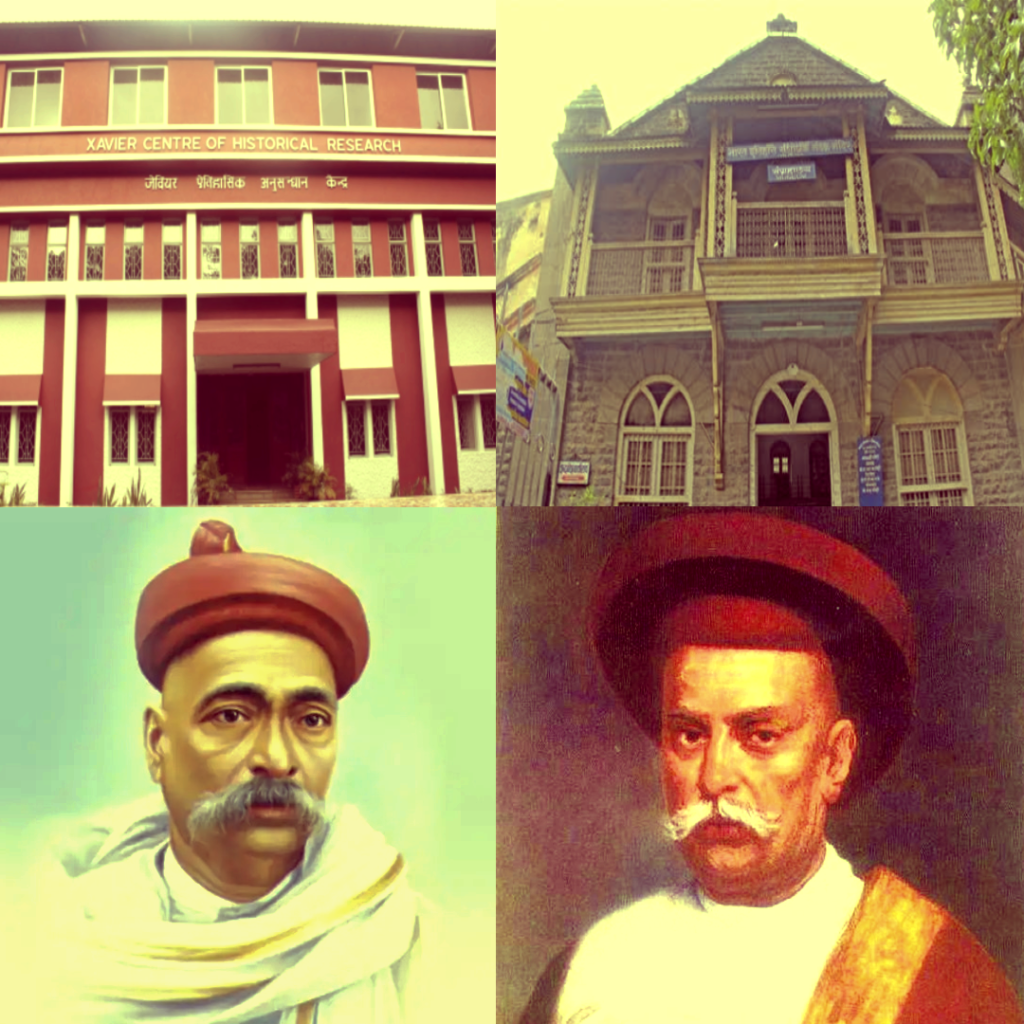
Top L to R: Historical Research Institute of St. Xavier’s College; Bharat Itihas Samshodhak Mandal
Bottom L to R: Bal Gangadhar Tilak; Mahadev Govind Ranade
I have given this brief survey to show that a great deal of research work is being carried on in different parts of India on various periods of Indian history. Necessarily, it is a work of varying degrees of importance. In some cases, where supervision and guidance have been effectively exercised, the results have been excellent. It can compare favourably with the products of some of the best and most authoritative treatises in Germany or England. The data have been carefully sifted, conclusions have been tentatively drawn, and the apparatus of historical criticism has been applied with due regard to the nature of the material and the atmosphere of the period. On the other hand, several works have been published lately, in which racial bias is so palpable and gross, that no historian can approve of them. They are appallingly partisan and partial. I do not think that such cases are peculiar to India. On the contrary, you find examples of it throughout the world, where each new Dictator commandeers Universities and schools and orders the writing of history according to the strictest principles and practice of his theories. I have not read many books on the history of Mexico during the last sixty years, but I imagine that it would be extremely difficult, if not impossible to carry on researches into Mexican history with complete impartiality and publish a history of Porforio Diaz during the volcanic eruption of the Carranza regime. Such ebullitions of national frenzy are not uncommon, but modern India, it must be confessed, has hitherto been singularly free from the insidious pressure which reigning potentates and dictators bring to bear on the historians of their countries. It would be difficult, if not impossible, to find impartial and scientific history in any of the works published in modern Germany or Italy. The danger however is real, and Indian historians must be constantly on their guard against the temptations to which they are peculiarly liable. In the case of European countries, the process of centralisation and unification has levelled down all barriers of provincial and even racial prejudices, and the nation thinks as one man. There government is natural, legitimate and genuinely representative of every phase of national life. Literature, art, education, culture in its widest and most comprehensive sense, are a source, not merely of a creative energy, but of the initiative which even a third-rate power in Europe constantly calls forth. They serve as the most effective instruments for the consolidation of national unity and racial self-consciousness. Society there is more powerful than Government, as society contains, in its varied and variegated strata, elements which are constantly nourishing and vitalising almost every channel of Government. National drama and national festival, which have invariably been regarded as the most potent agencies for the propagation of national spirit and the creation of national unity, occupy a place, in the highly centralised States, whose value and work are justly appreciated by every Government. In India, private agencies and institutions carry on this work perfunctorily, without effective guidance or farsighted supervision. I have not adduced these facts for the purpose of advocating bureaucratic control, nor is it my desire to extend the range of Government over spheres of our national life which have been wisely left to private individuals. These examples have been given solely with a view to showing the great difference between the position of the Indian historian and that occupied by his fellow-investigators in other countries. The history of our motherland may be conceived either as a record of continuous deterioration of intellect and character, with a few happy interludes, or it may be regarded as the orderly, slow development of the Indian people through centuries of confusion and disorder. Neither view would, in my humble opinion, be correct. There are no immutable laws ordaining the development of any people by fixed and regular stages. History has not yet attained the status of an exact science, and human motives and natural forces, which constantly act and react, cannot be calculated in a mathematical form with the precision and rigidity of a Euclidean proposition. The Newtonian equipoise, which some historians take for granted in the fascinating pursuit of mathematical and scientific inquiry, is a clear indication of the necessity of guarding against ideas, imaginatively conceived, by a continued process of make-shift in policy seeking to cover itself by the make-believe of verbiage. This theory of the science of history identifies the real with the ideal and, carried to its logical limits, it will make every stage in our national history the realisation of the highest moral ideal. The Hegelian conception of history, when applied to the concrete facts of Indian development, will make moral shipwreck of our most cherished traditions and ideals, and condemn us to a Pharisaical defence of the most iniquitous acts perpetrated by some of the worst tyrants in some parts of India during the last one thousand years. It surely is not necessary, either for the efficacy of our new-born zeal for “evolutionary history”, or for the application of some fanciful scheme conceived in moments of frenzy, to champion fervently a doctrine which is historically inaccurate and morally indefensible.
What then should be the attitude of historians in India? Should they roll up like a scroll events that have moulded the fate of millions of persons during the last one thousand years, and treat everything that has occurred since as an unfortunate incident in the chequered annals of our country? Are the glories of Akbar and the flowering of our racial self-consciousness in the Konkan valley, in the land of the five rivers, as well as, in the scorching torrid plains of Hindustan and Rajputana, to be relegated to the limbo of oblivion? Can we start with a clean slate and try to construct a Utopia, wherein the Indian world of to-day would be drastically remade? I have put these questions in the boldest and crudest form, in order that the position which Indian historians ought to occupy should be made clear. The historian of India is presented with difficulties which are without a parallel in other countries. We have, at one and the same time, two mighty cultures, existing side by side, working irresistibly, by the sheer force and momentum of their existence, into the very nerve and fibre of their respective adherents. A conflict is inevitable whenever culture is armed with power, and the conflict goes on with complete disregard of the genuine merits of the rival cultures. Clashes occur with startling frenzy and ferocity. The opprobrious expressions regarding the Hindus, which Amir Khusrau uses in his Khazāinul Futuh, can be paralleled by some passages in the writings of many an author in South India. It seems at first, that contact is impossible, and toleration, which has been incorporated in the pattern of our ordinary life, is out of question. Gradually, however, we find emerging a feeling of appreciation, crystallizing ultimately into a synthesis of Hindu and Moslem cultures. This reached its fullest and perfect development in the reign of our national king Akbar the Great. We find a number of Moslems in his reign who had attained considerable proficiency in Sanskrit. Al Beruni led the way and was followed by numerous others. Maulana Izud-dia-Khalid Khani was ordered by Firoz Shah to compile a work on philosophy which he called Dalayal Firoz Shahi. In the reign of Akbar we have Faizi, Abdul Kadir, Nakib Khan, Mulla Shah Muhammad, Mulla Shabri, Sultan Haji, Haji Ibrahim and many others. In Bengal, Muslim savants and rulers devoted their life to the propagation of indigenous culture. The Hindus particularly the Kayasthas, Khatris and Kashmiris, attained a mastery of Persian, and even Arabic, which was hardly inferior to the skill and knowledge displayed by the Muslims in their own languages. The two cultures, as well as the two races coalesced, for all practical purposes, so far as the interests of the State were concerned and we attained a conception of a common nationality which worked with irresistible force in the palmy days of the Mughal Empire. I am not competent to speak of the South, but I believe I am correct in saying that the movement in the South, too, ran pari passu with that in the North. During the strife of cultures as well as of governments it was inevitable that the two races should express their hostility in their writings. History never speaks with two voices; but in the case of some historians there is such a chasm that it is difficult to arrive even at an approximation of truth, if we read only one version. The Muslim historians of the reign of Aurangzib could not, and did not, look on the life and achievements of the great Maharashtra hero, Shivaji, with the same feeling with which he was regarded throughout the length and breadth of the Maharashtra. We must not overlook real difficulties by simply shutting our eyes to them or deliberately ignoring them. We have to admit the fact that it is difficult to assess the real merit of a policy or of a ruler, whether in Northern or Southern India, if we confine our gaze solely to the partial, blurred and, in some cases, perverted accounts of partisan writers. Objective history is impossible if the tales told by credulous, intolerant and fanatical adherents of either side are served up as a sober recital of authenticated and true facts. The same spirit runs through many of the histories written during the mediaeval period of Indian history. Writers who supply accurate data are exceedingly rare, while panegyrists, courtiers, bards and persons intoxicated with religious frenzy abound. The Indian historian must, therefore, guard himself against the risks to which this conflict between the two cultures peculiarly exposes him. The history of Germany, France, England and other organized States is comparatively simple, as the differences that divided the Parisian from the Norman, the Gascon from the Breton, have completely disappeared, and there is only one country with which a French historian is concerned, La Belle France. In Germany, the quarrels between the Guelf and Ghibelline, between the Prussian and the Bavarian, are completely forgotten, and we have now a steam-roller constantly at work, levelling down all provincial, racial and class barriers. In India we have not arrived at a stage when the differences of religion could be completely ignored in our treatment of controversial periods of Indian history. It may be confessed, and I do so quite frankly and without the least hesitation, that the history of the Punjab from 1780 to 1848, the history of the Deccan from 1670 to 1730, the history of Bengal from 1756 onward, the entire administration of Lord Dalhousie, and the whole reign of Emperor Aurangzib, have been written with a certain bias, and there is a close, if not exact, resemblance in spirit and method between the histories of Ireland in the 17th and 18th centuries, and the monographs, brochures and forbidding tomes on those critical and controversial periods of Indian History. There are some European, Hindu, and Muslim historians who have risen above the narrow and limited confines of prejudice and passion and have furnished a wonderful example of impartiality which it behoves every one of us to imitate. Could we not give a lead to the rest of India by purging our minds of the gross prejudice which hampers at every step the orderly progress of an art which, with all its imperfections, is the supreme art for the statesman, the patriot and the student? Should history be tied to the chariot wheels of perverted sectionalism, deriving its strength from a mass of passionate material, which may have been useful during the time it was written, but is now acting as a most serious obstacle to the growing nationalism of India as a whole? Could we not decide on the launching of a campaign that will clear up the miasma of suspicion, insinuation and downright untruth, which is served up as history to the virile and hardy youth of India? Are the foundations of national unity to be undermined by the insidious statements of a third or fourth-rate penny-a-liner, who serves his own ends and lines his pockets by catering to the lowest and basest instincts of racialism, and holds up to ridicule and contempt persons, whether Hindu or Moslem, who are honoured and respected by millions in this land? I have been watching the onset of this disease for some years and I can no longer remain silent. It has a far-reaching effect on the future of our entire political structure, for the ideas that take root in the formative and impressionable years of youth are difficult to dislodge, and the prejudices of worthless history text-books are imported into the Council Chamber, the market place and the public platform. Let me make an appeal, not merely to the professional writer of school text-books, but also to the historical scholar himself, to whatever locality or sect he may belong. While a search for truth must be carried on without the least regard for personalities, and our researches must be conducted in an atmosphere of complete impartiality, Indian historians should aim, not at emphasizing or accentuating differences, but discussing that subject from the point of view solely of research. History is not propaganda, nor is it publicity. It avoids Hollywood and its film fans, its super stars and budding stars etc. It is a cold dispassionate examination of records, conducted in a spirit of severe impartiality and complete neutrality, and a careful deduction of conclusions from the material that has been rigorously sifted. It is essentially the archive method of history that appeals to me and to historians in general. We do not start with a fixed idea and devote years to the elaboration of our curious prejudices and sub-conscious impulses. In objective history there are neither prejudices nor passions, but a keen and earnest desire to seek the truth, and a mind which, braced up for the laborious task, is always open, frank and impartial. This is the attitude of a historical researcher, and I am confident that I am voicing your feelings when I say that this is the object at which Indian historians ought to aim.

L to R: Al Beruni (imaginary rendition); Portrait of Faizi
Let me complete my account of historical societies by mentioning the excellent work done by the Government of India in preserving the antiquities of this country and fostering research. I am not competent to discuss the work of the Archaeological Department, nor does it come within the purview of this Congress. But I feel that the striking work carried on by the Indian Historical Records Commission ought to be gratefully acknowledged by all scholars. It may not be great in bulk, but it is certainly great in promise and greater still in the unique facilities for mutual exchange of views and heart-to-heart discussion, which the meetings of the Indian Historical Records Commission generally provide. As one who has been a member of that body for a number of years, I can say without any hesitation that the inspiration which most of us drew from a concourse of brilliant men, whose names are a household word throughout India, the momentum which such gatherings produced, were of the highest value in fostering a spirit of camaraderie among members of our craft. The Commission has undoubtedly done good work and, if financial stringency had not proved the main obstacle, it would have done much more useful work during the last three years. Mention may also be made of the reports of the Archaeological Department, as well as memoirs published by them at various periods. Some of the memoirs have been written with special knowledge and deserve careful study by students of Muslim art and architecture. Local Governments have not been idle, and both the Bombay and Madras Governments have published very useful calendars and press-lists on the 17th and 18th century. The Madras Records Office was reorganized by Mr. Dodwell with great care and interest, and the publications issued from there have been of the greatest value to students of British Indian History. The Punjab Government has also published selections, while the lists published by the Bengal Government have supplemented, in material particulars, information at our disposal.
I cannot speak of many States from personal knowledge but, as one who toured through and inspected the Libraries and Record Offices of Gwalior, Jodhpur, Udaipur, Indore, Jaipur and Hyderabad Deccan, I can say without hesitation that the material preserved in these States is of the highest value. Some States have developed Record Offices with great care and attention, but it will be very invidious on my part to single them out here. Historical research is, however, considerably hampered in some States, and investigation into the origin and foundation of the new States that have arisen over the debris of old kingdoms or empires is by no means relished by certain rulers. Apart altogether from this aspect, it must be conceded that a number of Indian States have co-operated whole-heartedly in the process, while there are a number of rulers whose devotion to the history, culture, and art of their country is unrivalled in India. The President of the Reception Committee of this Congress is a shining example of the ruler of a State, who combines in his person devotion to culture and fostering care for the material welfare of his subjects. In a movement for the organization of historical research the cooperation of Indian States is absolutely vital.
Ladies and Gentlemen, from this brief analysis of existing Societies it is clear that there is in India a vast amount of unorganized material, and considerable work is being done on important periods of Indian history by Societies and by the provincial and central Governments. I have not mentioned here the labours of private individuals who have carried on their researches without any special aid from organizations. Their number is fairly large and some of them are still happily with us. I may also refer here to the work in Indian History by European savants and scholars. It is a work of special value to us, as it represents the ripe scholarship, the balanced view and dispassionate judgment of a group of men who can truly be called pioneers in their respective fields. A tradition of scholarship was built up by the early English administrators of India, and it was maintained and even enhanced by some who combined rare intellectual gifts and critical acumen with great practical insight and administrative capacity. If we take into account the work of the institutions mentioned above, together with the treatises published by numerous writers, it will be found that the amount of material at our disposal is sufficiently vast. But most of this work is uncoordinated. Each organization is working entirely in its own sphere, and is completely out of touch with the work, the needs and requirements of other bodies. There is not even informal contact with institutions inter se, and this chaotic and confused state of affairs has gone on for a considerable period. In ancient Indian history, the Government of India wisely took the lead, and, under the fostering care of its enlightened guidance helped by the active zeal arid energy of a number of Indian Universities, there is an amount of unity in the organization of this subject which is sadly lacking in modern Indian history. The lack of any co-ordination has rendered it almost impossible for researchers in various periods to keep abreast of the researches of other workers in their own country. In Calcutta alone there are four important organizations carrying on historical research with great ability and zeal, yet there is no co-ordination among these bodies. The Universities are the foundry in which investigations are normally carried on, and it is through them that the young carry on the torch of learning and illumine the dark recesses of the National story throughout the four corners of the world. Strange to say, there is no co-operation even among Indian Universities in the domain of research, and research scholars in different Universities are ploughing their lonely furrow utterly oblivious of the quality or quantity of work conducted by their contemporaries in neighboring institutions. This disorganization has become almost a scandal, and the worker in the field has to create for himself the most rudimentary and elementary material, sometimes with the crudest devices, and prosecute his study in an atmosphere of uncertainty and vagueness. It is only through journals that he comes across workers on his subject in other fields, and then only if he cares to order the journals and accumulate, after considerable trouble and expense, the scattered material. This is not an atmosphere in which research can be profitably prosecuted, nor is the spirit created by discouraging conditions sufficiently strong to resist the tendency towards immature and unsatisfactory work.
Our preoccupation with the purely political history of India is responsible for the most unfortunate conception of Indian Society, and trite and mechanical repetition is often indulged in, for instance, to illustrate the anarchy and confusion in 18th century India. This would have lost a great deal of its force, if some of us had undertaken a systematic study of those fundamental bases of our national life which have acted and are still serving as sustaining pillars of Indian Society. None has seriously undertaken a scientific study of village organization in India in the 18th century, though Punchayat has acted as a most important social unit in our national development. We have had brilliant studies on the history of the English parish; while the history of the English borough has claimed a succession of able and devoted workers, whose industry has changed in a striking degree our crude and bizarre ideas of local self-government which prevailed till that time. I need only mention the honoured names of Mr. and Mrs. Sidney Webb. The German Universities are a bee-hive of industry and research, and German towns have been the subject of solid and painstaking investigations by a growing band of young and enthusiastic workers. They have carried on their work in a spirit of piety and zeal, tempered by a strong dose of sound commonsense and impartiality. England has not lagged behind other countries, and the series published in the Victoria County History represents the profound research, dispassionate judgment and provincial patriotism of some of the ablest historians of England. I have given these two examples to show the importance which historians all over the world attach to what is popularly called local history. I will not deal here with the marvellous work done by the band of economic historians of mediaeval England, Germany and France, nor can I discuss here the vigorous schools founded by these writers. We have only just begun the study of our mediaeval and ancient institutions, and it is only within comparatively recent times that such studies have been prosecuted. There are towns in India which are more sacred and evoke warmer feelings of devotion and piety than any place in any part of the world. Around them cluster sentiments alike of religion and of patriotism, and from them are propagated ideas and movements which have frequently changed the map of India. Yet there are few good histories of such towns. Bombay has, no doubt, produced some able annalists, and the long history of that graceful city has been recorded by a few brilliant writers in a few solid monographs. Calcutta and Madras have also claimed their champions, but the chequered history of Lahore is described in a dull and laborious work, while some of the most important Indian towns have remained unnoticed and unrecorded. Poona stands for the glory and splendour of the Mahratta power. It stands for the supreme part which it has played in many of the most important movements, political and social, of modern times. The intellectual virility of its citizens ought to have been expressed in a monumental work on the rise and growth of their beautiful city. Yet, I have not come across any important work in English tracing the history of this city with the wealth of detail and industry which we expect from its foremost citizens. I need not mention other towns of India. The subject opens up a brilliant vista of an unexplored field which is awaiting an energetic corps of enthusiastic workers. I have indicated briefly only one line of activity in which the energy of many brilliant and promising scholars could be engaged. But there are numerous other spheres which have been insistingly claiming recognition and admission. Economic history is almost a virgin field and the material for the subject is voluminous. The history of art is another fascinating theme for the young researcher, and, though Indian art has been dealt with, of late, by some very competent and scholarly investigators, the field for enquiry and investigation is enormous.
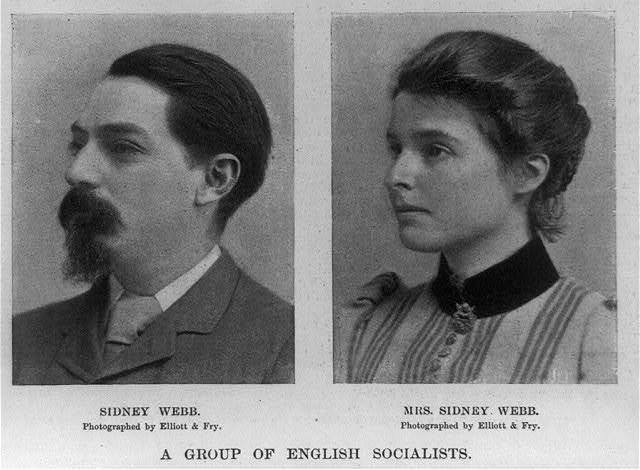
The All India Modern History Congress ought not to confine its activities to the dull and dreary recital of the third-rate intrigues of a worthless minister, nor should its work be restricted to elaborate researches in the vagaries of self-willed and ruthless tyrants. A man may devote his whole life tracing a particular plot. There are gentlemen who have written volumes on the Gun-powder Plot of England. Such works are, no doubt, interesting, but we shall not be justified in regarding them as history. They are simply the result of morbid curiosity and brooding melancholy, and are written to satisfy some peculiar craving of an abnormal individual. The Modern History Congress should not serve history in a tabloid form, and should discourage ephemeral and juvenile productions, the outcome of vanity rather than of industry and research, launched on the crest of a popular wave and backed by the ignorant energy and puerile zeal of third-rate scribblers. The canons of historical research must be applied without the least regard for persons or institutions, if the standards of our noble science are to be scrupulously maintained. Drama is not history, and imagination must be harnessed to the slow but difficult task of conscientious and honest investigation of elusive material and tortuous diplomacy. I have deemed it necessary to utter this warning as I have found, in the course of my wanderings, that infinite harm is being done to the dignity and integrity of our noble art. Nothing is more fatal to the advancement of research than the production of half-baked and crude history, prepared by persons whose zeal is in inverse proportion to their knowledge and judgment. The Congress should perform the function of an Academy and regulate the standards with strenuous vigilance and scrupulous honesty.
Ladies and Gentlemen, I have dealt at some length with the work of this Congress as I feel, and I am sure I am voicing your sentiments in this matter when I say that the progress of historical study in this country will depend, to a large extent, upon the direction and guidance furnished by this body. If we are able to establish our new organization on sound lines, if historical investigators in all parts of India look up to us for advice and guidance, if the work entrusted by this body to persons in whom it reposes confidence is faithfully discharged, we shall have succeeded in changing, in a very short time, our conception of the entire frame-work of Indian historical thought. A very heavy responsibility lies upon us—a responsibility of whose gravity and complexity nobody is more conscious than myself. While the responsibility is great, greater is the opportunity which such a body affords to scholars. What then are the functions of the Congress? Along what lines should its activities be directed, if the work performed by it is to be commensurate with the amount of labour involved therein? What are the main problems upon which our attention should be focused?
These are some of the questions which inevitably arise in any consideration of Indian historical problems. Before the Congress can organize its work and initiate new lines of policy, it ought to be in a position to understand the relative importance of the different epochs into which our history is conveniently divided, and evaluate the material which is the main source for the formulation of our conclusions. I do not wish to discuss here the lines of inquiry which should be undertaken, or the weight of authority and credibility which should be attached to the history written during the period. Such detailed and minute work is best reserved for a monograph or a treatise, and I should be wasting your time if I occupy myself with an elaborate disquisition, on the comparative merits of different historians. I shall, however, be failing in my duty as Chairman of this honourable and august body, if I do not indicate to you the serious gaps and lacunae in the important periods of our history and the methods by which they can be filled. I do this, because I feel that historical scholars should concentrate on a well organized movement for filling in gaps in some of the most important and critical stages of our national history. The sketch, and it is an exceedingly brief sketch, will show that there is an enormous amount of field to be traversed by us. The problems that are awaiting sound solution are so many and varied that it is difficult for any one person to solve them single-handed. Solution must come with co-operation and mutual help expressed through an organization of this kind. The sketch is necessarily brief, and is confined to points which deserve fuller study and investigation by Indian scholars. Again, in dealing with mediaeval India, I have to confine myself to Northern India, as my knowledge of South Indian languages and literature is almost nil, and is derived mainly from authorities printed in the English language, and I am not competent to speak with authority on many of the subjects which have served the starting point of some brilliant inquiries recently instituted in Southern India.
What are the chief points on which Indian scholars should concentrate in order that a correct and impartial view of our country’s growth may be formed? Let me start first with the pre-Moghul period. This is an exceedingly difficult period for we have to rely in many cases on the professional panegyrists of the Sultans, who were commissioned to write history and were bound to praise the monarch who had raised them to the exalted position of historiographers. They are histories written to order and showing, by the exuberance of their language, the pomposity of their style, and withal a sprinkling of metaphors and hyperboles and devices, of alliteration, the utter lack of balance and sound judgment on the most ordinary and commonplace actions of the Emperor. One has only to read the stilted phraseology and appalling metaphors of Amīr Khusrau to be convinced of this statement. He is a typical example of this species of historiographer. He lived long enough to serve under Balban, Kaikobād, Jalāluddin Khilji, Alāuddin Kbilji, Kutbuddin Mubarak Khilji, Khusru Shah and Ghiyãsuddin Tughluq, and bestowed fulsome praise on each and every one of them. Most of you are, no doubt, aware of the works of Khusrau, but if anybody has not read any, I will recommend Professor Habib’s translation of Khazain-ul Futuh. That will give some idea of the flamboyant language used by this writer, and bring home to many persons the difficulty, in some cases the impossibility, of constructing scientific history out of such appalling material. As a general rule, the task of compiling historical records in pre-Moghul India was entrusted to those who were under the patronage of the court, and, as it was their duty to carry out the orders of their sovereigns, it is not surprising that much of the so-called history of the period is “official” history or history written with the specific and avowed object of praising the reigning monarch and extolling his virtues to the skies. Muhammad Ufi, Hasan Nizāmi, Minhājus Siraj, Amīr Khusrau, Ziyauddin Barni, to some extent Shamsi Siraj Afif, and Yahya-bin-Abdullah were all courtiers who basked in the sunshine of royal favour. The “histories” they wrote, if not inspired by the court, were written under its influence and patronage, and there is no dearth of high-flown and exaggerated metaphors and deliberate and calculated examples of suppressio veri. The violent denunciation and unbalanced language of Ziyauddin Barni, regarding the measures and achievements of Kaikobād, Khusrau Shah and Muhammad Tughluq, shake one’s faith both in the sanity and moderation of the man, and in the sound commonsense and judgment of the historian. In order to heighten the contrast in favour of Firoz Tughlak, Ziyauddin Barni sometimes suppresses the benevolent measures of Muhammad Tughluq. If a court historian failed to discharge his duties satisfactorily, if his standard fell short of that set up by his predecessors, he was promptly relegated to the shelf.
Emperor Shah Jahän, who wished to imitate the glory and splendour of Akbar’s reign, wanted another Abul Fazl and called on Muhammad Aminai Qazwini and Tabātabāi to his aid. When they failed to realise his expectations, Abdul Hamid Lahori was appointed. The greatest example of a court historian is, however, furnished by Abul Fazl. He was, not an ordinary historiographer, with a commonplace stock of stilted phrase and appalling melaphors, and plebeian similes, but a brilliant and accomplished administrator well-versed in the practical problems of administration and dowered with a mind of singular plasticity and brilliance. The arrangements made by the great Akbar were on a scale that has rarely been attempted by any other Moghul ruler. The records of all departments were placed at his disposal, and private individuals were requested to reduce their memories and recollections of important measures to writing. The response to this appeal by the Emperor seems to have been fairly successful, and the results of Abul Fazl’s labours were embodied in his monumental work, the Akbar Nāmah and its adjunct, the Ain-i-Akbari. These two works represent an amount of labour and industry which no individual could have accomplished without the help and patronage of the court. It is a noble monument to a gracious monarch and is a mine of information to every student of history. Its treasures have been frequently utilised by modern writers, but the wealth of material which it contains has not yet been effectively tapped. Neither Babar nor Jahāngīr appointed court historians, though Mu’tamad Khan, to a certain extent, performed the functions of a historiographer. Aurangzib appointed Mumahamad Kasim and the first ten years of the Emperor’s regime are recorded in the Alamgir Nāmah. The post of court-historian then fell into desuetude, and we are henceforward forced to rely upon private enterprise.
I have necessarily compressed the material on such a vast subject, as the problem with which we are faced is an essentially practical one. What should be our attitude towards these histories? Are they to be taken at their face value? Should our history be constructed out of these panegyring prose, in which all the arts of accomplished courtiers are lavished on the production of stilted and artificial apologia? Should the political fancies of persons intoxicated with their love of hyperbole and verbosity be deemed a durable and strong foundation for objective history? My answer unhesitatîngly is, Most certainly not. We must use with the greatest caution inspired eulogies of kings who fed, clothed and maintained these courtiers. While we cannot ignore Amir Khusru, or omit to study Qiranus Sadain, Khazain-ul Futuh, Tughluq Nāmah, Nuh Sipihr, Dewal Devi Khizr Khani, we must, remember all along that we are reading chronicles of courtiers containing a small amount of solid matter and a very large amount of romance and imagination. In such works, accuracy is sacrificed to literary finish, and an event is distorted in order that the metaphor may be apt and a sentence may be rounded off with a brilliant phrase. The crude devices of appalling antitheses are mechanically employed, and the effect of elaborate and almost pyramidal piling up of metaphors, similes and hyperboles is almost suffocating. Abul Fazl is, no doubt, an exception. There is a certain fineness of contour about him, not at all gross or coarse, in the setting of silky and gaudy furnishings. The drawbacks of the other writers are made worse by their violent prejudices. The fanaticism which burns, luridly in describing the demolition of temples, or of mosques, and the organisation of a campaign, may repel a beginner at first sight, but the phenomenon is so general, the phraseology employed is so crude and mechanical that one is sometimes forced to put the question, Why does not the past decently bury itself instead of waiting to be admired by the present? History seems to look like Adonis, fully prepared for an unconscionable time in dying. But this will be a wrong impression altogether, as words had ceased to have effect on such writers. They had ceased to arouse curiosity or excite indignation, but were incorporated in the pattern of daily life and intercourse, as the characteristic expression of the tragic muse, expressing itself in high-flown phraseology and rhodomontade. Modern historians must take these factors into account in evaluating the primary sources of the Muslim period; then only will they be able to assess the value of court histories. Had it been possible for us to discard these productions and rely entirely upon the unaided and independent writings of persons who were swayed neither by court frowns and favours, nor by fanatical zeal and prejudice, the task of Indian historians would have been greatly facilitated. But we cannot and ought not to take such a course, as it will deprive us of our main source for the study of that period. We cannot utilise histories written by persons in their private capacity, as their number during the Sultanate period is insignificant. Ibn Batutah and Abdur Razzāk supply very strong and, in some cases, effective correctives to court panegyrists, and Ziauddin Barni’s glaring and violent prejudices are corrected by the comparative impartiality and shrewdness of Ibn Batutah. Razzāk’s account takes note of the conditions of the common people, the customs and traditions of various classes, while the court of Vijayanagar is described in a series of inimitable chapters, which throw considerable light on the achievements of that empire. Unfortunately, there are few other books which could be added to the small list of foreign travellers, and we are forced to rely upon the unbalanced and distorted account of court historians. In the discussion and analysis of court history we must distinguish between histories and histories. There are some works of the highest value to the student and few scholars can afford to ignore them. No student of Moghul India can remain ignorant of Abul Fazl’s masterpiece, while the student of Shah Jahān and Aurangzeb has to study with close and sustained attention the histories written by the court historians. Moreover, during the Moghul period we have works written by private persons, which are of the highest value. Mullah ‘Abdul Kãdir Badauni is not an impartial writer as the style of the book and the temperament and expressions of the historian will show. But he supplies a much needed corrective to the fulsome eulogies and gross flattery of his rival Abul Fazl. Badauni’s style is trenchant, vigorous and clear, and in his history he has struck an entirely new line by castigating some of the innovations of the ruling king, and subjecting them to a barrage of very keen criticism. The Memoirs of Gulbadan Begam, of Jauhar, Bãyazld, Wàqiãti Mushtaqi, Wikaya-i~Asad Beg, Amal-i-Sāleh of Muhammad Salih Kambu, the Muntakhab-ut Tawarikh, the Tabaqati Akbari of Nizāmuddin, Iqbal Nāmah of Mu’tamad Khan, the work of ‘Ārif, Muhammad Qandhari and a large number of Shah Jahān Nāmahs, besides Muntkhabul Lubab, are only a few of a large number of works written in the 16th and 17th centuries. Of Memoirs written by Emperors, I need only mention two. Everyone has read the memoirs of Babar and every student of Moghul history is acquainted with the Tuzaki Jahāngīri.
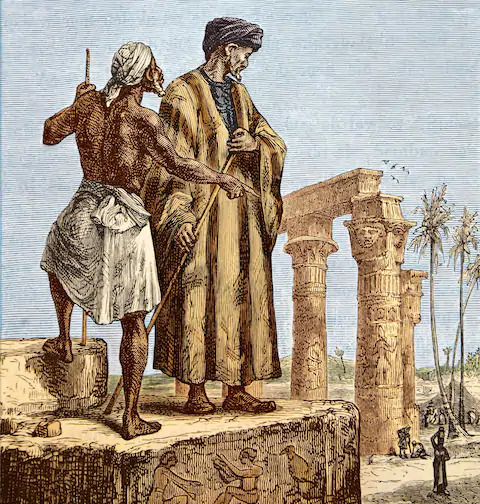
Ibn Battuta, as imagined by 19th century artist Paul Dumouza
There is another class of material in vernacular which should be taken into account in a discussion of the primary sources of Indian history. We have a large collection of Farmans lying scattered throughout the length and breadth of India, which are of the greatest value to the historian. The number of Farmans is exceedingly large but no systematic attempt has so far been made to collect them in a central place. Their value varies, but they are of special importance for the study of Moghul institutions and procedure. The material in the vernaculars is growing rapidly and the information contained therein is supplemented by the wealth and variety of documents which the patient research of some devoted savants has brought to light. Pandit Gauri Shankar Ojha has written valuable works on some Rajput States on the basis of materials collected by him; the Bharat Itihas Samshodhak Mandal of Poona has earned the gratitude of Indian scholars by the devotion and zeal it has displayed in preserving and utilising the material in Marâtbi, while the Royal Asiatic Society of Bengal has published a number of very competent and sound monographs on some of the most obscure periods of mediaeval Indian history. The number of Hindi, Marāthi and Bengali documents that are of importance to the students must be considerable and an organized effort ought to be made to collect them. The manuscript material on the history of Muslim kings of Delhi is fairly large. Leaving aside the provincial kingdoms, it appears, from a work published by Khan Bahadur Zafar Hasan, that, out of 307 works in Persian, only 53 have been printed so far. Of this number, only a small proportion has been translated into English. Besides works in Persian, Arabic and Indian vernaculars, we have accounts published by foreign travellers. Their number is considerable though their value varies. Some are of great importance, while others contain garbled accounts of customs and manners of the people and are prejudiced, partial and misleading.
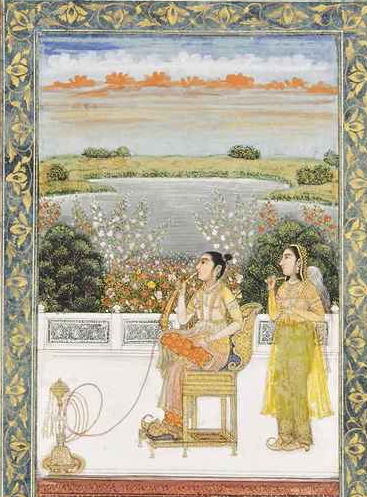
Gulbadan Begam
Ladies and Gentlemen, I am afraid I have wearied you with the dreary recital of works which are known to every student of our historical literature. It is not my object to supply you with a catalogue of books and manuscripts but to point out a few suggestions for research work in India. We have been accustomed to go through familiar works so often that no systematic efforts have been made for increasing the range or depth of our knowledge. The same monotonous and almost mechanical repetition of hackneyed manuscripts, the same trite and commonplace remarks, and precisely the same method and manner! We are so conservative and hide-bound by custom and tradition that it seems difficult to strike a new line, or initiate a new departure. Very few manuscripts have been printed in recent years, while the generation of European scholars represented by Smith, Lane-Poole, Raverty, Grant Duff, Malcolm and Kaye has passed away, leaving few worthy successors to take their place. True, we have a few living in our own times, who are trying to keep up the old tradition. But their number could be counted on the fingers of one’s hand and I feel that India will have to rely entirely upon her own efforts in elucidating the problems of her national growth, and tracing the chequered period of contemporary history. Administration in India has become so complex and complicated that it leaves a person in government service little or no time for the pursuit of literature or of history; and the difficulty has been greatly increased by the increasing tendency towards specialisation. In the History Department of the Allahabad University researches are being carried on in the Tughluq and Moghul periods, while Prof. Habib has worthily maintained the traditions of Aligarh by sustained research in pre-Moghul history. I am not aware of any other University where investigation into this subject is keenly pursued. The Universities of Southern India are wisely confining their activities to periods in which they are specially interested. This, together with the work in the Moslem period published by some learned societies such as the Asiatic Society, is the sum total of our efforts. This is a record of which Indian scholars cannot be very proud. It shows, not actual progress, but definite retrogression, and if this state of affairs continues we shall be in danger of losing what we have acquired after patient effort and ceaseless toil. The Arab conquest of Sind ought to have attracted the attention of a large number of inquirers, as it represents a striking and novel problem to students of the Caliphate, as well as to the scholars of Indian history. Yet the modern works were all published in the nineteenth century and we have the usual authorities starting from Ibn Khurdadb whose Kitābul Masālik wal Mamālik was translated in the Journal Asiatique in 1865, and ending with Major Raverty’s article on The Mihran of Sind and Its Tributaries, published in the Journal of the Asiatic Society of Bengal, in 1892. No period affords greater opportunity for the study alike of the Imperial policy of the great Caliphs and of the organization and administration of India in the 8th and 9th centuries of the Christian era. Mahmūd Ghazni has been more fortunate, for a few monographs have lately appeared, which throw considerable light on a period which had been strangely enough completely ignored by historians. Muhammad Ghori and his brilliant general, however, still await a competent historian and we have not yet pursued systematic researches into the history of earlier Slave Kings of Delhi. Balban attracts greater notice, but even his administration must be pieced together from Barni, Khusrau, Mir Khwand, Firishta and Nizāmuddin Ahmad. Why? Not because there is a lack of sufficient material, but because it has not been carefully organized and the work is haphazard and jejune. The Khilji dynasty has, of late, received some attention and Indian scholars have published valuable monographs on the invasion of the Deccan, and on the administration of Alāuddin Khilji. It is, however, true to say that the full story of Qutbuddin Aibek and his successors, of Jalāluddin Firuz Khilji and even of Alāuddin has yet to be written. What shall we say of the Sayyid and Lodi dynasties? It is practically a blank. It is true that the material for this period is scanty, but the Sayyids, who organised some remarkable and distinctive institutions, have not yet found capable historians. The Lodi dynasty also goes unrecorded, and there is no clear and complete account of this dynasty. Sher Shah struck the imagination of his contemporaries, and we have a few competent articles and monographs on this remarkable man. It may be said of the period as a whole, that scholars have devoted comparatively little attention to the Slave and Lodi dynasties, partly because the material is scanty, and partly owing to the conventional mediocrities who ascended and descended from their thrones, without exciting the interests or evoking admiration of their contemporaries. Yet, there is reason to believe that it was a formative period of Indian history and witnessed the birth of literary and religious movements which had a profound effect on the country. We are on firmer ground when dealing with the Moghul Empire. Babar is a household word in Asia, and his memoirs are on the lips of every student of Moghul history. His fascinating personality has charmed generations of readers, and we have some brilliant monographs on this versatile man. Humayun does not fill the same space, but a full-length biography of Humayun is an urgent necessity. Jauhar supplies us with a wealth of information but we need a detailed and carefully documented account of this ineffective but beloved ruler. Of Akbar I need say little. He has claimed probably the largest number of competent and brilliant scholars, and the India of Akbar is as familiar to us as the India of John Company. The sayings of Akbar, the deeds of his famous marshals and the splendour of his court, are the subject of numerous works in English and the vernaculars. There is little likelihood of any fresh material being gleaned that will materially change our ideas of his character and achievements. The researches of Vincent Smith, Count Noer, Moreland and a host of Indian historians have succeeded in unravelling a tangled and complicated period in which we can legibly trace signs of new ideas and movements, the emergence of a feeling of national unity and a conception of a national Government. In Akbar’s reign religion and administration are not conceived as integral and indissoluble, and a serious attempt is made to effect a partial separation. The movement needs careful study and, though a number of articles and monographs have been published, there is no satisfactory or authoritative account, in English, of the religious, artistic and literary activity of the period.
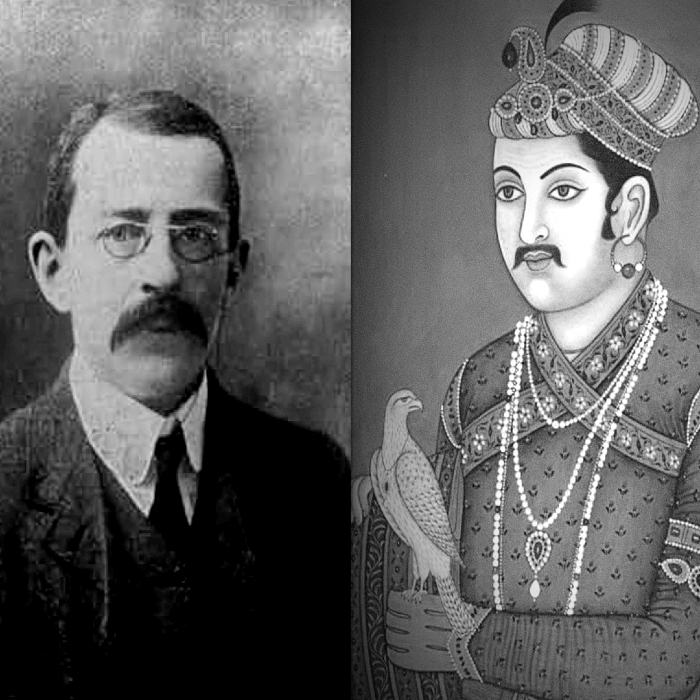
WH Moreland and Akbar
There are, however, certain gaps in our knowledge of the Moghul period which could be filled satisfactorily, if a competent band of historians is organized and systematic research undertaken. The history of Moghul institutions is yet to be written. It is no disparagement of the works of scholars who have published some very useful monographs on this subject to state that Moghul history offers rare opportunities for the students of institutions. We have not yet been able to produce a single good book in English on procedure at the Moghul courts, while the functions of the Kotwãl, the Diwan, the Bakhshi and the Subedār have not yet been thoroughly investigated. Many of these officials were the pivots round whom the administrative machinery revolved, and a carefully documented history of some of the important Moghul offices will be of great value to students of institutions. The history of the judiciary under the Moghuls awaits a skilful researcher. Again, it is commonplace to assert that the most characteristic and brilliant contribution of the Moghul Empire to modern India consisted in the administration of revenue. I am not here to defend or criticise the system of revenue administration inaugurated by Sher Shah and Akbar; nor is it my function as a historian to discuss the relative merits of the Zamindāri and Raiyatwãri systems. I am concerned chiefly with the fact of its introduction and the consequences that flowed irresistibly from it. It was an undertaking of great magnitude and significance, and was introduced in India after careful and elaborate preparation. The material for its study is abundant, and it has been very effectively used by many scholars. The system was greatly modified in the eighteenth century, and completely transformed by the British in Bengal, Bihar and Orissa. The works of Sarkar, Moreland, Ramsbotham, Smith, Firminger and others, have thrown considerable light on the subject, but it will be hazardous to state that no fresh inquiry is needed. We need a good work on the revenue and judicial administration under the Later Moghuls, when the impact of foreign invasions, the impoverishment of the people, and the general insecurity of life produced profound changes in the system. The Moghul secretariat continued to function regularly, and the canons formulated by the wise prudence and keen foresight of the early Moghuls seem to have been rigidly followed in the eighteenth century. The letters of Surman, who went to the court of Farukhsiyar to secure a Farmān for the Company, show that the Moghul secretariat was as vigilant and alert as ever. But the administration had become a huge soulless machine, lacking both initiative and momentum. A good work on Moghul bureaucracy is a great desideratum, and a comparative study of Moghul bureaucracy in the eighteenth century, Byzantine bureaucracy in the eighth and ninth centuries and the French bureaucracy as elaborated and perfected under Louis XIV will repay perusal. A few works have lately been published on Indian Art, Religion and Social movements in India during the Moghul period. I am, however, bound to say that the abundant and extensive material on this subject has not yet been effectively tapped. Moghul and Rajput paintings have received considerable attention of late, and the works of Brown, Dr. Coomarswami and others cannot be commended too highly. However, a visit to any famous library, such as the Rampur Library, will show the rich field that awaits the workers. I may here refer also to the military organization of the Moghuls. On the Mansabdāri system, as well as on the Moghul army, some brilliant articles have been written. But there is no connected history of the Moghul army, while the accounts of battles and campaigns are reproduced from the exaggerated and highly coloured language of the old chroniclers. The problem of the Mansabdāri has not yet been solved, and schools of thought still exist which are not yet agreed on the essential features of this system. There is no work on the administration of Afghanistan by the Moghuls. Kabul was then, as it is now, the stormy petrel of Asia. Yet, the Moghuls maintained their grip on the turbulent inhabitants of the city for more than a century. Was it an ordinary achievement to rule Kabul, manage the trans-border tribes, which then as now despised law and order, and acknowledged no overlordship? I do not know if the Afghan archives have preserved records dealing with the Moghul period, nor am I sure if the Persian Government can point to any important documents throwing light on its relations with the Moghul Empire. Attempts should be made to get transcripts of such records, if they exist, and some of our scholars should bring out an impartial history of the Moghul Empire in Kabul, Kandahar, and its relations with foreign powers. We have many references to foreign powers, in Moghul histories, and ambassadors from some States of central Asia and Persia. But the material has not been woven together into a coherent whole, while the subject itself has not been thoroughly investigated by historians. I would appeal to young Indian scholars to study this period as it will give an insight into the principles of Moghul imperialism.
Moghul architecture has been investigated, in very competent monographs, by the Archaeological Department of the Government of India, and by Fergusson, Vincent Smith and others. He would, however, be a very bold man who would assert that no more light could be thrown on it. I need not discuss here the point raised by Father Hosten, regarding the builders of the Tajmahal at Agra, in an address to the U. P. Historical Society, which I published in the Journal of the U. P. Historical Society, in 1923; nor am I concerned with the barren and futile question whether it was the Italian architects who built the Taj. The arguments on both sides have worn threadbare and no good purpose would be served by reviving the controversy. What is of greater importance to the students of this period is the Taj itself, the beauty of its design, and the perfection of its technique. We have not yet been able to enlist the aid of a scholar who will delve into the records and bring out an authoritative and exact account of this majestic dream in marble. The history of Shah Jahān’s reign has been skilfully described by Dr. Banarasi Prasad Saxena, one of my pupils and a Lecturer in our History Department. There is a large amount of untapped material on the development of the fine arts in the reign of Shah Jahān, and I have a vision of a band of enthusiastic workers united by a common desire to probe further into the glorious development of architecture which found its perfect expression in buildings which are a source alike of wonder and of instruction to humanity. Shah Jahān’s quality as a general has not been effectively brought out, while the comparatively long period of peace and prosperity which his reign enjoyed, the mild and benevolent rule of a man, distinguished alike for piety and purity of his life, and the splendour of his administration, deserved a historian equipped by training and guided by sound judgment. Dr. Saxena is carrying on this work and I hope and believe that he will bring out a supplementary volume on Shah Jahān. Aurangzeb has found a competent biographer in Sir Jadu Nath Sarkar, and the historian of that period is under a debt of gratitude to him for his lifelong researches and contributions to the knowledge of that period. In covering such a long period and dealing with events which are unhappily still a subject of controversy, it was but natural that there should be a little difference on some points by persons who feel strongly on some aspects of that monarch’s activity. Such differences are inevitable when the issues discussed are deemed as vital and are the fibre of the spiritual life of various communities. The historian must, however, pursue his aims with creative purpose and with measured but fearless enterprise. Sir Jadu Nath Sarkar’s works should be supplemented by brochures on the administrative history of the monarch’s reign. Sarkar has already published brilliant monographs on the subject. I hope younger scholars will complete the work initiated by him. The number of Farmāns issued by Aurangzib is enormous, and there are very few districts in my own Province where prominent families which trace their rise to the times of Aurangzeb, do not possess them. Sir Jadu Nath Sarkar has a fine collection of manuscripts which he has gathered together with great difficulty and research. A systematic search of such documents will yield a rich harvest and I hope that the organizers of this Congress will take a hand in this work. The later Moghuls have been studied by William Irvine with a thoroughness and industry which it will be difficult to excel but the record of the degenerate successors of Akbar is not one which is likely to attract a large number of researchers. It is a sordid and dark story of palace intrigues and ruthless invasions from Afghanistan. It is not a story of development, nor does it reveal any striking example of a capable leader, able and willing to restore the fallen grandeur of a brilliant dynasty. The empire was in the throes of anarchy and ministers had arrogated to themselves functions of defacto rulers. It is much more instructive to watch the rise of the great Indian kingdoms that were created on its ruins.

Jadu Nath Sarkar and Aurangzib
Before I go to the post-Aurangzib period of Indian History, let me draw your attention to the need for a detailed account of some of the smaller States whose contribution to the culture and art of India cannot be exaggerated. The history of the Sharqi dynasty of Jaunpur has yet to be written. It was essentially a culture-State like mediaeval Brussels or Florence and the distinctive type of architecture which it developed should be dealt with by competent students. With the exception of the brilliant account of the Sharqi architecture of Jaunpur, published by the Archaeological Department of the Government of India, in 1889, and a few cursory references in official reports, there is no adequate history of this important dynasty. The dynasties of Malwa and Gujarat have also been comparatively neglected, though their contribution to Indian culture was substantial and effective. There has been no addition to the stereotyped authorities for these States. The Arabic History of Gujarat, Tarikh-i-Gujarāt, published in 1908, and slight references to Firishta, Khafi Khan and Nizāmuddin Ahmad’s Tabaqāt-i-Akbari complete the customary list of authorities. The modern works are still represented now, as they were nearly thirty years ago, by Lane-Poole and Thomas and a few extracts from Danvers. Kashmir is in practically the same condition, though the translation of the Rājatarangini by Stein, in 1900, greatly helped Indian scholars. It is only lately that a few more documents have been published on the subject, but it is safe to say that we are still dependent on the old works published about thirty years ago. A few articles in the Journal of the Royal Asiatic Society, July and October 1918, added slightly to our knowledge. But they do not materially add to the information contained in Tarikh-i-Rashidi. The Mediaeval kingdoms of Bengal are in practically the same condition. No modern work of striking originality has appeared and we must have recourse to the commonplace and stereotyped works of Barni, Shams i Siraj Afif, Minhājuddin, and Ghulam Husain Salim. Why? Not because there is a lack of interest among Bengali scholars. Bengal has led the way in every movement and the apathy displayed by scholars of that province, in the mediaeval history of that province, is all the more significant when we compare the brilliant work done by them in other periods of Indian history. The Bahmani Empire and its off-shoots have also been neglected. With the exception of Sir Wolseley Haig and King, there are no modern writers who have dealt adequately with the subject. Some of these kingdoms were great patrons of art and literature and their generous support and encouragement ought to find worthy mention by a competent historian. A full length history of these kingdoms has yet to be written. There are brilliant monographs by Burgess, Fergusson, Cousens, and Theodore Hope on the architecture of Bijāpūr, Cambay, Abmedābād, Broach, and Junāgadh, but no exhaustive study of some of the most important States has yet been prepared. They played the same part in the artistic development of India, as the Italian cities of the fourteenth and fifteenth century played in the development of the Renaissance. The movement seems to have been general and the efforts were not confined to one city or a State. I am not competent to speak of the gaps in our knowledge of the Hindu States in Southern India. But I may be permitted to say that the happiest sign of intellectual development in India is the growth of interest among some of the ablest and most brilliant scholars in the history of their provinces. The foundation of the Bharat Itihas Samshodhak Mandal of Poona, twenty five years ago, gave a remarkable impetus to such investigations and the work it has already accomplished is of the highest value to all students of Indian History. I am not exaggerating when I say that our original conceptions of the seventeenth and eighteenth centuries have been profoundly altered by the work of the Mandal. It has created a band of historians who have already established sound and healthy traditions, and I have no doubt that in years to come it will be able to claim with satisfaction the completion of its work on the high level which it has maintained from its beginning. The History of the Vijayanagar Empire has been treated by Dr. S. Krishnaswami Ayangar with great ability and skill, while Father Heras and his pupils are carrying on the work into many a nook and corner of Southern India. I will not deal here with the States of Rājputāna, nor am I competent to discuss the materials in the vernacular languages of India which lie scattered throughout Northern India. The amount of such material is fairly large, but no attempt has been made in an organized form to weave it into a coherent whole, and construct a scientific history of Rajput States out of authorities sifted and dissected by trained historians. We are still referred to Tod, Smith, and the well-known modern writers, while the Persian histories, Which are dubbed as original sources, can be counted on the fingers of one’s hand. Something is being done at Ajmer and a history of Rājputāna in Hindi has appeared. Much more however needs to be done. Rājputāna ought to allow free access to its valuable records. Tod may have been sufficient and adequate about fifty years ago, but modern research imperatively demands scientific works based on a dispassionate study of documents that have been carefully sifted and arranged. Romance and imagination must yield to hard facts. A new history of Rājputāna is an imperative necessity. It must be purged of the dross of romanticism and sentimentalism and deal strictly and objectively with the history of institutions and administration within the Moghul and pre-Moghul period. The causes of the decay of the Rajput States in the 18th century, the lack of any driving power and energy, their submission to foreign invaders who swooped down on their garden cities like locusts and subdued them without difficulty, these extraordinary phenomena still await a keen historian. Histories of many of these States exist, but there are few existing works against which a charge of exaggeration cannot be brought. Will the Rajput States wake up and co-operate in the inauguration of a joint board including within its range skilful and trained workers, not courtiers, who will be allowed and encouraged to write an impartial and objective account of the periods of their glory and decline?
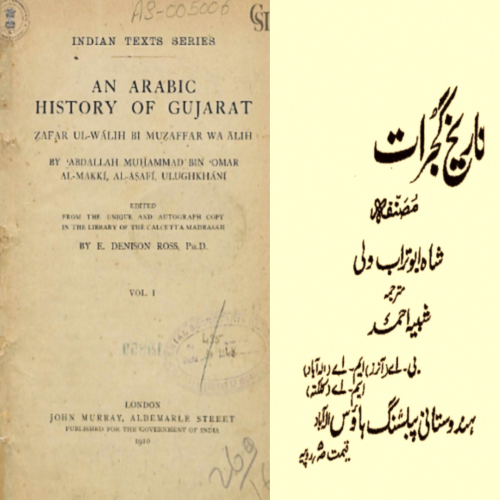
An Arabic History of Gujarat, Tarikh-i-Gujarāt
Ladies and Gentlemen, the gaps in our knowledge are so great that it is only by combined efforts of a large number of trained historians that they can be filled. I will discuss in the later part of my address my constructive proposals for removing this serious blemish in our scholarship, a blemish which is all the more glaring in contrast with the great strides we have made in other branches of knowledge. For the present I need only stress the paramount importance of a sustained campaign for harnessing the energy and enthusiasm of the country to the task of scientific research on these problems.
The period of British Indian history covering the last three centuries is in marked contrast with that traversed so far. While the records of some of the most important dynasties can be gleaned only with great difficulty from the pompous and grandiloquent accounts given in a language of extreme and at times irritating, exaggeration and flattery, the British Indian period confronts the student with a mass of voluminous and prolific material, which it would be difficult to parallel in other countries. The reason for it is to be found in the fact that the Directors of the Company being six thousand miles away from the scene of operation were most suspicious of any departure from the minute and vexatious restrictions which they imposed on their factors. In the east the Government of the factories, and later on of India, was conducted by correspondence which multiplied with alarming rapidity and consumed the energy of some of the finest administrators. Very important consultations were methodically despatched to their masters in the West; the minutes of the meetings were most carefully preserved, and the minutest details of merchandise, bullion and other commercial undertakings were supplied with meticulous care, to the lynx-eyed merchants in Leadenhall Street, We have, as a result of this system, a mass of material which it is difficult for any person to master in his life-time. It is computed by Sir William Foster that the number of documents in the India Office Records Department is about 48,000. To this material should be added State papers and other documents preserved in the Public Records Office, London. Moreover, the amount of pamphlet literature and other manuscript material preserved in the British Museum is enormous. Further research in the Bodleian Library as well as in the private libraries of noblemen and others whose ancestors have played a part in the history of India will considerably add to this list. There are, moreover, voluminous documents preserved in the Archivo da Torre do Tombo and the Bibliotheca Nacional at Lisbon, and the Archives at Goa. The records in the Torre do Tombo are described in Azvedo’s work published at Lisbon in 1905. Figueiredo has given a good account in his Archivo Nacional da Torre do Tombo published at Lisbon in 1922, and Danvers also described the records in his report published in 1892. The archives of the Dutch are preserved at the Rijksarchief at the Hague. Again the French records, which are as voluminous as the Dutch, will be no less indispensable to students of the 18th century Indian history. Besides these sources of primary importance, there are documents of great importance in the Record Department of Madras, Bombay, Bengal and the Punjab, while the Imperial Records Department of the Government of India is replete with a priceless collection of duplicate copies of many essential documents. The Calendar of Persian correspondence which the Department has published has been of considerable value to all students of the period.
From this brief survey it would be clear that the difficulties of the students consist, not so much in the collection of material, as in its selection. The wealth of first-rate material is very great, indeed, and the facilities provided by the great National institutions, such as the British Museum, are conducive to research, and work can be carried on in them without inconvenience and discomfort. The field of British Indian history offers a rich harvest to the students, and I hope and believe, that an ever-increasing number of Indian scholars will devote themselves to the prosecution of studies in subjects which have so far received inadequate attention. I cannot pretend to discuss the enormous mass of material indicated above, nor is it the purpose of this address to serve as a guide to records, or attempt a critical apparatus for a minute examination of sources which have been laid under contribution by various writers. May I be permitted to refer here to my Sources for the History of XVIIth Century British India? Let me deal, therefore, with a few of the problems in British Indian history which have not been adequately dealt with by scholars. The 17th century is a peculiarly difficult period for students of British Indian History, for a grasp of the subject necessitates a minute study, not merely of the British Factories in the East, but also of economic theories current at the time in England, as well as the details, at times tortuous and labyrinthine, of English foreign policy. Charles II’s attitude towards the East India Company must be studied in connection with his negotiations with the Dutch and Louis XIV. We cannot study in isolation, nor is it possible for us to ignore the growing influence and ultimate supremacy of the parliamentary Colbertism of the Whigs, in our treatment of the policy adopted by the Revolution Parliament towards the East India Company. Again, economic theories may seem totally unconnected with the East India Trade in the 17th century, but the fact is that, either they summed up the practices which were observed during the period, or they were slightly in advance of their times, and were later on incorporated as a part of their economic policy by English moneyed classes. The economic theories of Sir Josiah Child in the 17th, and of Adam Smith in the 18th century, illustrate this point completely. What are the chief problems in 17th century British India which Indian students could take up and study? A history of the foreign policy of England, with special reference to its bearings on the East India trade, will amply repay perusal. The subject is an exceedingly difficult one, and S. R, Gardiner has already covered the ground from 1603 upto 1656. But the Public Records Office, and the Colonial Office, have collected together all the important public despatches that had any bearing on the East India Trade. Sir William Foster has given abstracts of some of them in his invaluable series of Court Minutes of the East India Company, but the material on the subject is so rich and varied that I hope some student of Indian history will take up this study in earnest. There is another direction in which efforts should be conducted, and that is in reference to the study of parliamentary policy towards the East India Company from 1689 onwards. Macaulay and Hunter have given fairly detailed accounts of the conflict of the two Companies after the revolution. But the inner history of the rivalry between Child and Papellon has yet to be written. I will not deal with the works of Dr. Balkrishna, Prof. Scott and others on the East India Trade, as everyone knows them and appreciates the labour and industry involved in compiling these elaborate researches. The first half of the 18th century has so far remained comparatively unexplored. Wilson has tried to fill the gap, but the lack of a really sound book on the administration of the Company in Madras and Bombay should no longer be felt. The period was undoubtedly one of confusion and anxiety outside, and of peaceful and quiet developments inside the Company’s territory. Yet Surman’s embassy throws considerable light on the methods of Moghul Government and gives a pen-picture of the country from Calcutta to Delhi, which is most vivid and interesting. A civic history of Madras could be constructed out of the records of municipal Governments, while the peaceful progress of Bombay should find a worthy successor to Lew, Wheeler, and Malabari. We are on firm ground when dealing with the struggle with the French and the rise of Clive. I do not wish to discuss the relative merits or demerits of various works on the Anglo-French Wars in the South, as well as the voluminous material on the life and achievements of Clive. We are not surprised to find writers eulogising everything initiated by or connected with the achievements of the early Governors-General of Bengal. As historians, we must keep the scales even, and avoid rhapsody and lyrical praise, on the one hand, and depreciation of the genuine merit and worth of these men on the other hand. Keeping these considerations strictly in view, we are forced irresistibly to the conclusion that the pendulum has swung to the other extreme, and we are in danger of losing correct perspective of the period 1756 to 1767. The internal history of Bengal during these years has not been adequately investigated, nor have the materials which have recently been published properly utilised. The quarrel, with Mir Kasim and the causes and effects of the dreadful Bengal famine, the lack of any effective administration during this period of violent changes, have been dealt with by many brilliant writers, but it cannot be denied that there is considerable possibility of a divergence of opinion on some of these points. Mir Kasim seems to have been more sinned against than sinning. He was not entirely blameless, and it has to be admitted that, on various occasions, he received provocations which impelled him to resort to retaliation. One of my pupils has been engaged in studying Mir Kasim’s administration and the result of his researches will be published in a book form. The subject needs clarification and further study, and I hope some scholar will choose it for an able monograph. Warren Hastings is another administrator round whom controversy has revolved. We have on the one hand Edmund Burke, one of the noblest and most generous champions of India whom Great Britain has produced. He waged a relentless fight against abuses which he alleged had been perpetrated by Warren Hastings and the Company. On the other hand, a new school of Imperial historians has arisen in the land, a school which indulges in gross laudation and undiluted Jingoism when dealing with the reforms of Hastings. A number of books have been written recently, with a strong and palpable bias in Hastings’s favour, in which his opponents have been subjected to unmerited abuse, while everything attempted by him has been lauded to the skies. I will not discuss the works of Forrest, Roberts, Burke, Francis, Weitzman and a host of others, as the space at my disposal is limited, but content myself with saying that the reforms of Warren Hastings have been greatly over-rated by many writers of the new school. The revenue administration which he attempted to reform was a failure, while his dealings with the Rohillas, the Begams of Oudh, and Chaitsing of Benares, exposed him to charges to which he failed to give a convincing reply. The subject should be studied anew by Indian scholars, in a spirit of inquiry and truth, free from the miasma of Jingoism and Racialism. The excellent introduction by Archdeacon Firminger to the Fifth Report deals with these reforms in detail, but the conclusion which any impartial historian is compelled to adopt is that the essential requisite of an objective history of Warren Hastings is complete freedom from bias. I am bound to say that not a single work on Hastings comes up to the highest standard of scientific history and almost every book published recently is influenced by the controversial spirit. Indian students should study the administrative reforms of Hastings uninfluenced by an inferiority complex or racial antagonism. No Indian scholar has appraised the value of Edmund Burke’s work for India, the sacrifices he made for her cause, or the obloquy and the opposition he encountered in the pursuit of his noble cause. Now that the mist of suspicion and partisanship has disappeared, the time is opportune for a just appraisement of the noble mission to which he dedicated the last years of his brilliant life. Cornwallis still awaits a competent biographer who will be able to weave together his dispatches and minutes and bring out the salient features of his policy. His policy of permanent settlement of land revenue in Bengal can be studied in some very competent and able monographs, but the wider aspects of his administration, the reforms he introduced in the judicial system, his war against Tipu Sultan, the economic and social consequences of his reforms, these are subjects which have been discussed only perfunctorily and cursorily. No recent work on the subject has appeared yet, and the subject deserves a close study by Indian historians. Passing over Shore’s administration, which was devoid of interest, we come to Wellesley. The great pro-consul is familiar to us in his stately periods, Attic eloquence, dispatches and pompous commonplaces. The recent sketch of his administration by Mr. P. E. Roberts supplies a long-felt want. Robert’s judgment is sane and sound, and his writings are free from the prejudice and narrowness displayed by Imperialist historiographers. We lack, however, a full-length history of this period, in which Wellesley’s relations with Oudh, the Nizam and the Ķarnatic, should be sketched with freshness and wealth of detail. The material on the Karnatic is voluminous, for, apart from the documents contained in the reports of the committees appointed by the Parliament in 1773 and at later periods, the Cornwallis papers at the Public Records Office, the Wellesley MSS at the British Museum, the Home Miscellaneous Series (Volumes 285 to 328) at the India Office, together with papers and writings connected with Paul Benfield, supply us with a wealth of material which has not yet been completely utilized. Wellesley’s relations with Oudh and Shah Alam raise problems of sovereignty which are of great interest to students of political theory. When Shah Alam received Lord Lake in his palace, conferred upon him a khiťat and a title, and Lake decided to show him all outward forms of sovereignty which the Emperor was accustomed to, the view of the palace was that the Company had returned to its allegiance to the Moghul Emperor, while Wellesley contended that the Emperor had passed under the protection of the British Government. This would be the common sense view of the transaction, but the conception of sovereignty was so fluid and vague in those stormy days that it is extremely difficult to decide the power or persons in whom it resided. While the person of Shah Alam was acknowledged among the most precious spoils of victory, it was only in 1813 that the Governor-General’s seal ceased to bear the phrase proclaiming the Governor-General the servant of the Emperor. The Nazars were no longer presented in the name of Governor-General. When Emperor Akbar II received Lord Amherst in 1827 in Delhi, the Governor-General and the Emperor entered the Diwan-i-Khas at Delhi from opposite sides at the same moment; they met in front of the throne, exchanged embraces and then took their seats, the Emperor on his throne, the Governor-General on the State chair placed on the right; no Nazar was offered and the Emperor presented the Governor-General with a string of pearls and diamonds. Nine months before the outbreak of the Indian Mutiny, it was decided that the Imperial rank could no longer be recognised after the death of Bahadur Shah. The problem of sovereignty has claimed a large number of brilliant writers. The issues raised by it go to the very root of our life as organized in government. Indian students might well deal with this aspect of a fascinating problem and trace the effects of the impact of the British power on the old dynasties in Rājputāna, as well as the newly formed kingdoms that arose on the ruins of the old. I must now turn aside from a subject which will take me far afield and deal with other gaps that exist in our knowledge. Hasting’s dealings with Indian States have received some attention of late and Dr. Mohan Sinha Mehta’s work marks an interesting departure. It is to be hoped that Indian scholars will follow up these researches by undertaking work on the Pindari War, as well as by a comprehensive work on Hasting’s Wars. Hasting’s diary is often quoted, but the material in the Imperial Records Office, Calcutta, the Home Miscellaneous Series at the India Office and the Bombay Secretariat, is fairly large and will repay perusal. Mr. N. C. Kelkar, the doyen of Mahratta publicists, wrote his brilliant work, Marãthé ani Ingraj, in Marathi, while Mr. Pārasnis’s work on Satara contained, as usual, results of laborious research. The works of Kaye, Fraser, Keene, Munro, Malcolm and Valentia are well-known. There is how-ever no comprehensive work in English incorporating all the relevant materials in the Peshwa’s Daftar and the Records Offices mentioned above. The subject should be treated with both great care and delicacy, as it is likely to arouse controversy owing to the strong and powerful interests which were affected by Hasting’s policy and the comparatively recent occurrence of these Wars. A historian who has to deal with contemporary events is exposed to dangers of a peculiar kind. He has to guard against current prejudice and passion and deal with events in which his own ancestors may have been engaged, with complete impartiality. This is specially the case with events that have led to the subversion of National states, or conquests of kingdoms in which are centred the hopes and aspirations of an oppressed minority which has emerged victorious from a heroic war of independence. In such cases I should say the dangers to our craft in the handling of a controversial subject are so great and real, that unless we are constantly on our guard, we are likely to lower the status and permanently depress the standards of historians. This remark applies both to Indian and English historians of India. There is no authoritative work on the administration of Lord William Bentinck. This is surprising, as Bentinck’s regime formed a land-mark in our history, and the material on the subject is fairly extensive. From 1818 onwards the principal sources of information concerning Indian States, the proceedings of the Government of India, are no longer available, but Parliamentary papers make up for the paucity of our material. They are a store-house of most valuable information. Parliamentary papers dealing with Indian States, published in 1831, 1833, 1849, 1850 and at later dates contain a volume of priceless material. Bentinck’s reforms have not yet found a competent narrator, while the economies effected by him in his administration, the methods adopted for the suppression of Thugee, and his relations with Indian States need to be carefully studied by students. On Thugee there is a fairly large collection, part of which is preserved in the Imperial Records Department. I will deal only cursorily with the rest of the period. The works on the First Afghan War are tainted by controversy ; the amount of controversial literature is fairly extensive, but an intelligible and impartial history has not yet been written. Curzon’s strictures on Ellenborough in his British Government of India, were perhaps responsible for Sir Algernon Law’s volume dealing with Ellenborough’s Indian Administration. The history of the Sikh army has been scientifically studied by Mr. Sitaram Kohli, while the publication of selections from the records of the Sikh government have gone some way toward removing a hiatus in our knowledge of the period. Sikh Wars produced a mass of controversial literature, but the brilliant contribution of Sir John Fortesque, in Volume 13, of the History of the British Army, is of special interest to us. It is an impartial account of an extraordinarily complicated transaction which historians have found extremely difficult to deal with. We have not yet decided whether Chillianwalla was a victory or a defeat for the Company. The Sikh administration remains, however, a mystery to us, and no competent historian has arisen who has been able to prepare a comprehensive history of Sikh rule. Abdul Latîfs History of the Punjab has not yet been superseded, and Cunningham still serves as a text-book. Why? Not because the material is lacking, nor because opportunities for research are few, but because sufficient interest has not yet been created in the Punjab. Nor has a tradition of historical scholarship been established there on the same scale as in this virile and strenuous city. Though the north of India has made a great advance in recent years, we have not yet succeeded in organizing a School of History that will serve as an inspiration to brilliant and enthusiastic scholars. Dalhousie’s masterful personality and vigorous policy are still involved in controversy, and a furious battle has raged in India since his fateful departure from our shore in 1856. We have to rely on the uncritical and laudatory account of Dalhousie by Sir William Lee-Warner who seems to find the facts of Dalhousie’s policy a convenient opportunity for the application of his curious theory of Indian States. Arnold’s work on Dalhousie’s administration, published in 1862, is still the best work. This is a most unsatisfactory state of affairs and shows a lack of interest on the part of students in a subject which is of vital importance to scholars of contemporary India.
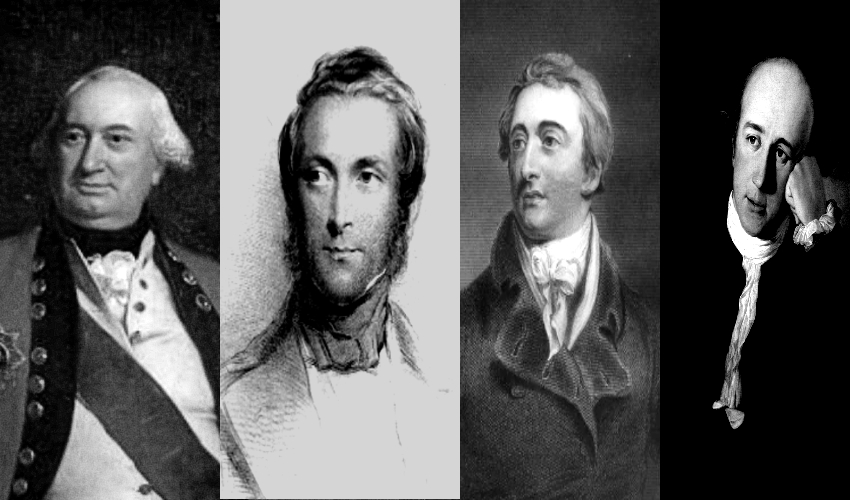
Governor Generals (L to R): Cornwallis, Dalhousie, Bentinck and Hastings
We have a large amount of material on the Indian Mutiny and soldiers have published a large number of memoirs recollections, and pamphlet material, but a life of Tãntya Topi, and of the turbulent Maulvie of Fyzãbãd, are still to be written. The Rani of Jhansi, probably the ablest leader produced by the rebels, has received some notice of late, but the social and other causes of the Mutiny, which Sir John Kaye attempted to discuss in the first volume of his history of the Sepoy War, have yet to be carefully and objectively analysed. In dealing with such a controversial subject, great caution is necessary, particularly at a time when political India has reached the adolescent period and every class and community in India has become politically self-conscious. The post-Mutiny period is too recent, and too much involved in controversies which are still going on, to be capable of dispassionate and balanced treatment. Important documents are not yet accessible; the minutes of the Governor-General’s councils must remain hermetically sealed till after a century, while the secrets of the India Office records must be closely preserved and jealously guarded for some time. The passionate intensity of perfervid enthusiasts is tempered and subdued by time and healed by the softening influence of toleration. For the present, we must be content with tentative and provisional conclusions on problems which are still the subject of controversy, deduced from a mass of conflicting material ranging from state documents, penned in a spirit of partisanship, to recent movements attracting to themselves the classes no less than the masses of the country. There is, however, great scope for the study of institutions and constitutions in India. The relation of the Central Government to Provincial Governments may well be attempted by some students, as the material is fairly extensive and the subject is of exceptional interest to India at the present time. The history of our religious and political organizations is still to be written, and no better service could be done to India than the orderly presentation of a subject in which India as a whole is deeply and vitally interested. The modern social movements which have completely changed the outlook, and materially helped the status of our country in the comity of nations, are merely an expression of the pent-up energy and reservoir of strength which India has invariably put forth at all critical times in her history and at no time is the need for such studies greater. We are on the eve of momentous changes in our National life, and if we are to prepare ourselves for the task in earnest, it behoves us to study the annals of our country in the spirit of students, taking stock of our intellectual resources and giving deep thought to problems which have claimed the active attention of our predecessors. Our researches must be conducted in an atmosphere of research, and not with a view to proving a pet formula, or exploiting it for a political purpose. Viewed from this point of view, the study of Indian constitutional development is worthy of serious study, and I hope that some of you will undertake the task. The theory of Moghul sovereignty has been carefully studied by Dr. Ram Prasad Tripathi of the History Department, Allahabad University, while the essential features of Khilji Imperialism have been investigated by Dr. Ishwari Prasad, also of the History Department, and will be published shortly. Works on other periods of Indian constitutional history are unfortunately very rare, but a large and unexplored field awaits the writer who will trace the relation of the Provincial to the Central Government. Again, the determination of the policy adopted by various provincial Governments towards self-governing bodies within their jurisdiction should be undertaken by competent investigators, while the work of the Bramho Samaj, the Arya Samaj, the Servants of India Society, etc., still awaits historians of the ‘requisite training and breadth of view. The work should not be undertaken from a sectional point of view, but should be studied in its bearings on the spiritual growth and the intellectual progress of the people of India as a whole. History is a great purifier of our emotions and a source of perpetual inspiration to the élite of a country no less than to the masses. Constitutional history has been sketched by a number of writers who have either dealt with it mechanically and without the least regard to the way in which each constitutional scheme has actually worked or they have distorted the plain and unimpeachable facts of mechanism of government to prove their own peculiar views and justify their political prepossessions. We need competent and comprehensive histories dealing with the evolution of the present constitution, not in a spirit of gross adulation or blind partisanship, but in a spirit of steadfast, honest inquiry, conducted not with a view to any personal or political aims, but solely with the object of objective and scientific study. The material is fairly extensive, and a person who wishes to study the evolution of the modern Constitution has sufficient material to occupy him for several years. I hope some student will undertake this task and give us a balanced and dispassionate record of the political structure of Modern India in a scientific and objective spirit.
Ladies and Gentlemen, I have now concluded my survey of the main problems which students of Indian history are called upon to solve. I do not depreciate in the least the noble services which generations of scholars have performed for Indian scholarship, nor do I minimise the great progress which Indian scholars have recently made in the investigation of our history. All that I would like to point out is that the ground we have to cover is fairly extensive, and our task needs the help of a large number of historians, trained in methods that have won recognition in many of the advanced countries of Europe. National prejudices, racial antipathies, and religious differences, will naturally colour our judgment and unconsciously determine our attitude to specific problems. It would be too much to expect from human nature a cold passionless narration of events which have permanently dislocated the entire machinery of our national economy, nor is it in consonance with the plainest and most rudimentary elements of commonsense to expect an objective presentation of a war which has meant the subjugation of a race or country in which we are interested and of which all of us are legitimately proud. The histories of Ireland written by Irish Catholics are in marked contrast with the prejudiced and garbled versions of English historians and the Polish historians of their national kingdom adopt an entirely different method from that of the Prussian historians of the Partition Treaties of Poland. President Masaryk mentions, in his Making of a State, the inspiration he received from the work of the national historian of the Bohemian people, while the history of Greece under Turkish rule deals with the periods of their subjection in a manner which is diametrically opposed to that of then Turkish overlords. These are no doubt aberrations from the norm, and mark a considerable and lamentable decline from the position which history ought always to occupy. But they are an expression of a tendency which, unfortunately, cannot be completely eradicated, though it can be controlled within rational limits.
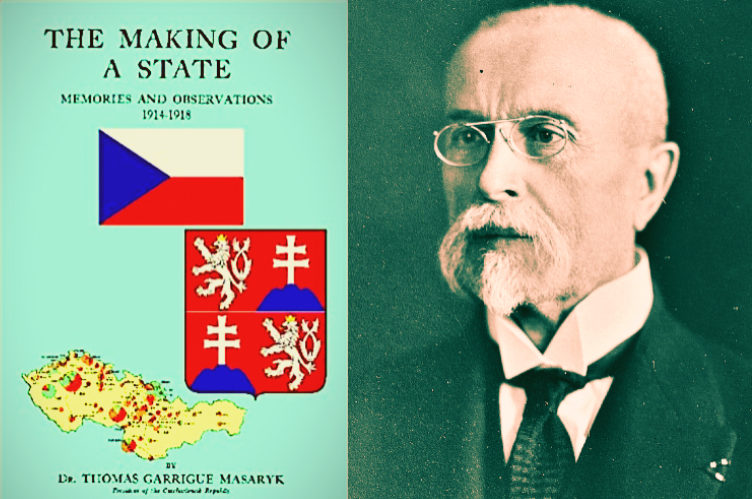
The Making Of A State by President Masaryk
We must take human nature as we find it, and allowance must be made for differences in the race and religion of historians. We ought not to try to set up a standard which would be impossible to keep. We can no more expect the Mahratta to give cordial support to the religious policy of Aurangzeb, than we can expect Muslims to praise the policy and achievements of Banda Bahadur. The histories of the late war, written recently in Germany, England, Soviet Russia and France, are an eloquent testimony to the truth of this statement, and no other material need be added in substantiation of this hypothesis. National antipathies and rivalries have unfortunately acquired greater force among the “nation states” of the present time, than they did in the palmy days of the Holy Roman Empire, or even in the 17th and 18th centuries, and modern “nation states”, particularly of the West, require their own histories and have launched a campaign for purging “false”, “mischievous” or “blurred” history. The histories published in the Soviet regime should be contrasted with the ponderous folios of the earnest, though dull, German professors, published during the Hitler regime. Few American writers have been attracted by the cycle of bloodshed and revolution through which some South American States seem to pass with the pitiless monotony of a Pneumatic drill, yet the “cooked and faked” works which are palmed off as histories of these South American States are as plentiful as blackberries in September. Should Indian historians follow the model of “nationalist writers”, whose avowed aim is to give a thoroughly distorted picture of their nation and glorify some of the worst acts perpetrated by their barbarous ancestors? Most certainly not. It would be disastrous to the growth of a science which has a most brilliant future before it, if its progress is clogged by such excrescences, and the resources—and they are neither mean nor insignificant—are frittered away in the vain task of showing the superiority of one Indian community over another. History knows no barriers of race or religion and Indian historians should imbibe the spirit that inspired the works of some of the most brilliant German historians of the 19th century. Their massiveness, the breadth of their judgment, the clarity of their style and method, made them the pioneers of their science, and they are still a source of instruction and inspiration to numerous students. This does not of course mean that Indian students must purge themselves completely of their national prejudices. If such a thing had been possible I would not have hesitated to recommend it. But as it is impossible, all that I would beg them to do is to control such feelings, not to give expression to them in their writings, and avoid appeals to racial or national prejudices.
I have offered these remarks with the greatest diffidence and in a spirit of humility, as I feel that it may be regarded as the height of presumption on my part to try to advise such an august and honourable body, containing the cream of the intelligentsia who are the genuine representatives of our intellectual aristocracy. I hope you will take the advice in the spirit in which it is tendered. I dread the prospect of a long line of histories of India written by Muslims, Mahrattas, Sikhs, Bengalis and Pathans, each from his own point of view, denouncing things, measures and governments with which such writers are in disagreement, in a language of license, with the rancour and vigour of professional scribblers. Such a contingency has not yet arisen. I pray and hope that it will never arise, for if once the flood-gates of sectional histories are let loose, it would be quite impossible to dam them. The danger must be guarded against with all the strength at our command, in order that our national histories may be free from the incubus of fanaticism.
Ladies and Gentlemen, you will allow me to deal with a few suggestions which I venture to place before you. I do so with great diffidence, as none is more conscious of his limitations than myself, and I am not quite sure if it would be possible or practicable for this honourable body to give effect to them. Yet, I am hopeful that the science to which all of us have devoted considerable attention and care may be placed upon a firm and secure basis. I referred, in the beginning, to the need for the printing of the manuscripts that deal with various periods of Indian history. The number of such MSS [Plural for ‘manuscript’] is fairly large, and an organized attempt should be made for their printing. It has been calculated, by Khān Bahadur Zafar Hasan, that only 53 histories of India in Persian have been published so far. The number of unpublished MSS is not less than 250. Besides the work contained in Mr. Hasan’s report, there are a large number of unpublished works in Persian, in private libraries, which have not yet been catalogued or classified. We ought to make a beginning with the printing and publication of some well known books, such as Wasaya-i-Nizām-ul-mulk the complete prose works of Amïr Khusrau, the Futūhāt-i-Firuz Shahi, the Tarikh-i-Mubarak Shāh (which is being published in the Journal of the Asiatic Society of Bengal), the Dasturul ‘Amal of Raja Rup, the Faiyãzul Qawânïn, Ināyat Nāmah, Tarīkhi-i-Rashidi. The publication of such works is a sine qua non of success. We should follow them up by publishing other histories in Persian. Mediaeval history depends, and must depend to a large extent, upon such histories, as far as Northern India is concerned, for it is only recently that a systematic search has begun for sources in the vernacular languages. The latter should also be taken in hand, and publication of works in Marãthi, Assamese and the different dialects of Rājputāna, can no longer be delayed. The Asiatic Society of Bengal deserves the thanks of all scholars for the encouragement it has given to publication of standard works in history, and I hope other organizations in Northern India will supplement the work of that Society. There is a very large number of Farmāns granted by Moghul Emperors, and a systematic effort ought to be made for their collection. They are of the utmost value to the historian of India, as we can reconstruct from them the actual day-to-day working of the machinery of Government. There are numerous families in Northern India, and even in the South, whose ancestors played a part in the Moghul Empire, who possess some of the most priceless relics of our history, and an effort ought to be made to get transcripts of such documents. The difficulties in some cases are obvious, as the owners sometimes are suspicious of the motives of persons who wish to consult such documents. These prejudices can be overcome, and have been overcome, by tact and prudence, and I have no doubt that in most cases the owners will be only too willing to get copies of such Farmans translated.
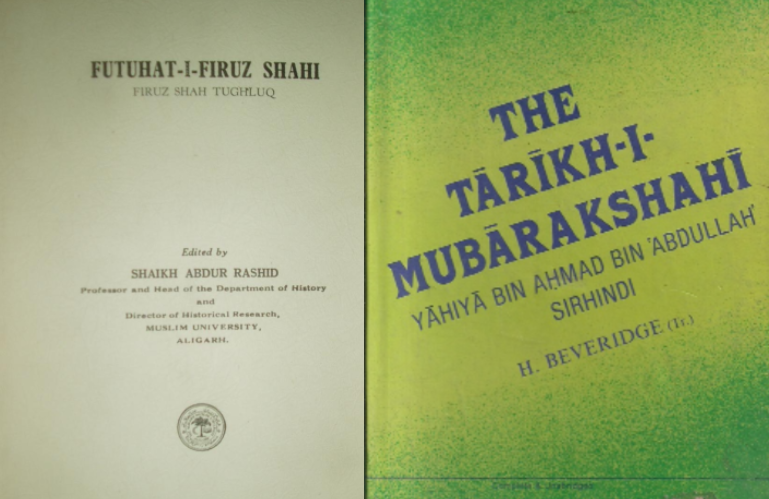
The Futūhāt-i-Firuz Shahi and the Tarikh-i-Mubarak Shāh
I am of the opinion that a work of such magnitude cannot be undertaken by private persons, or even by organizations with limited influence and resources. It will involve a large expenditure and necessitate the employment of several trained workers, who are familiar with the calligraphy of different periods and have had training in the handling of documents. Such men are few and far between. This need not prove an insuperable obstacle, as the services of a number of scholars who are now engaged in historical researches could be requisitioned, and I have no doubt that they will respond to such an appeal with alacrity and zeal. There are, however, other difficulties of a serious character, which it would be impossible to ignore. Funds are necessary, and few persons are able and willing to part with their hard-earned silver in these times of depression. Again, a work of this kind must necessarily be of an All India character, and should be effectively organised from a central place. A large amount of popular propaganda must be undertaken, to convince the people of the need of such work and persuade them to allow these documents being taken. There will undoubtedly be suspicions, in some quarters, of the motives and intentions of investigators who must transcribe some important documents, and obstacles may be placed by suspicious owners who may fear disclosure of their family secrets. May I appeal to the historical societies to organize a joint board for the purpose? Many of these bodies have done brilliant work for the advancement of learning. There are some whose name is a household word in the realm of scholarship. Could they not come together, discuss the details of a central organization, and organize a body that will become the focus of historical research throughout? Is it too much to expect that institutions which have built up our history, through more than a century of sustained efforts, should be willing to maintain the high tradition of selfless and unostentatious research which have inspired a host of workers in the same field? A joint body, containing representatives of leading historical associations, could start work almost immediately, and infuse a new spirit, not only into the teaching of history, but also into the researches carried on nowadays by scholars who are severely handicapped by the paucity of their material? If private organizations cannot help, we must go to the Central Government and request it to take up the schemes after consulting various bodies concerned. Such work has been undertaken by Government in England. In Germany, France and other countries, institutions which deal with the sources of national history are materially helped by the Government. I advocated the establishment of a Historical Manuscripts Commission at a meeting of the Indian Historical Records Commission in 1923. In a paper read before that body, I pointed out the need for such a Commission and stressed its importance to students of historical research. The lapse of time has tended to strengthen that demand. I feel now, as I felt then, that a Historical MSS Commission is a vital necessity, and our progress in historical studies depends to a large extent upon an institution of that kind. I have nothing to add to what I said then. The experience of the serious handicaps which confront almost every student of mediaeval and Moghul history has completely verified the accuracy of that statement. I am of the opinion that the Government of India should give the country a lead in this matter by organizing a small body of highly trained men for this work, The Government has given remarkable impetus to research in ancient Indian History, and the Archaeological Department deserves the thanks of all Indian scholars for what it has accomplished. But the feeling in general is that it has not encouraged researches in modern Indian history to the same extent and with the same generosity. With the exception of a few monographs on the architecture of mediaeval India, and the publication of a few State papers, nothing substantial has been done that corresponds to the efforts put forth in the study of ancient Indian history. I am not saying this in disparagement of their work, nor do I advocate curtailment of the excellent work accomplished by the Archaeological Department. All that I claim is that the time has arrived when the Government of India should make a special grant every year for fostering and organizing research in modern Indian history on a substantial scale. I feel that a beginning should be made by starting the nucleus of a Historical MSS Commission. Such a commission has been of the utmost value to historians in England, and there are few works on Indian and English history published recently which have not utilised manuscripts preserved in the private libraries of England. We should profit by the experience of that country and enlist the aid of Indian States and provincial Governments. A tremendous drive is essential, and I am confident that it will not be lacking. What should be the function of such a commission? On the one hand, it will undertake the publication precis of MSS in public libraries. The amount of material on the subject is fairly extensive, and a great deal remains to be done. It should secure copies of such works, and should get them edited by competent scholars. As one who has had opportunities of visiting the libraries and archives of Rampur, Udaipur, Jaipur, Jodhpur, Indore and Hyderabad States, besides the Khudäbax library of Patna and the collections at Aligarh, I can say without the least hesitation that our knowledge of some of the most important and significant periods of Indian history will be substantially modified if the works preserved in these institutions are made accessible to scholars. Its second important work would consist in the publication of MSS in the possession of private families which possess historical value. Not every MS is worth copying and those documents will be selected which are of general interest to the historians. As the amount of such material is fairly extensive, only precis of important documents could be published. Historians are so well acquainted with the volumes published by the Historical Records Commission in England that I think it is unnecessary to discuss them here.
The Government of the East India Company was in many respects a Government by correspondence, wherein the authorities of the East India Company at Leadenhall insisted on the most minute and detailed account of transactions from their servants in the East. We have, as a result, a magnificent store of records in India and England, containing some of the finest collections of State papers in the world. In no other country are materials regarding the sources of British Indian History so extensive and complete. The work done by Sir William Foster in the Record Department of the India Office cannot be too highly praised, and a generation of Indian scholars trained in England testifies to his enormous industry, unfailing courtesy, and constant help. It is due, to a large extent, to his efforts that the India Office Library has become the laboratory of Indian historians. I wish to place on record the great help and assistance which Sir William has rendered to Indian scholars in England, and I have no hesitation in saying that, but for his advice, much of the work recently published on British Indian history would have remained jejune, fragmentary and unsubstantial. The Record Offices in Madras and Bombay have been well organized and considerable improvements have taken place in recent years. I would recommend the publication of calendars of important documents by these Governments. Both Madras and Bombay Governments have published very useful lists, while in some cases documents have also been published. I suggest that, as far as possible, abstracts of all important documents should be published, in order that the historian may be able to tell at a glance whether a particular document deserves fuller study. The calendars of State Papers in England have revolutionised our conception of English History, and have thrown a flood of light on many important problems. In almost every chapter of Gardiner’s monumental History of England (1603-56), and other works on English history which have been published recently the indebtedness of the authors to the calendars is manifest. Other examples could be quoted. I suggest that a calendar of important documents should be published by these Governments for the convenience of the historical investigators. The Punjab Government have published an excellent series of selections from its records and their example might well be followed by other local Governments. The amount of material pre-served in the Imperial Records Department is extensive, and the Department has published an excellent series known as ‘The Calendar of Persian Correspondence’. But the material presented there is so great that one or two other series dealing with Wellesley and Lord Hastings could have been published. In my province, there is a very large amount of material in the Board of Revenue on the early revenue history of the United Provinces and a few of my students have worked on them. But the absence of a Record Department in the United Provinces has considerably hindered the progress of studies in history. I made a proposal, at a meeting of the Indian Historical Records Commission, in 1922, that a Record Department should be established in the United Provinces. That proposal was accepted by the Commission, but the U. P. Government has not been able to give effect to their recommendation. Let us hope that a Records Department will be established in my province in the immediate future and historical studies will be pursued with industry and enthusiasm which the Hindustanees have invariably shown. It is the meeting place of Hindu and Muslim cultures, and has always occupied, and will, I hope continue to occupy a preeminent place in the sphere of scholarship.
I am afraid it is difficult for me to give an opinion on the Peshwa’s Daftar at Poona, but as the matter came up once or twice before meetings of Indian Historical Records Commission, you will permit me to say a few words. The Daftar has proved a boon to historical scholars throughout India. The growth of interest in the study of Indian History, which is such a happy sign of the national awakening, in India is due to a very large extent to the inspiration which Indian patriots have received from the heroic deeds of our ancestors. It would be presumptuous on my part to offer you advice as to the way in which it ought to be managed. There are persons present here who are immeasurably superior to me in the knowledge of this national reservoir of our past; but, as a question was put to me recently by a prominent scholar, I deem it my duty to refer to it. As a general rule, national collections of the kind presented in the Daftar ought to be thrown open to all students of history, and every facility should be given to researchers in their work. No restrictions should be imposed on the use of documents, provided they are not utilised for raising questions of title, or other administrative issues of a similar kind. They are of general interest to the public and the historian. Subject to this proviso, there ought to be no difficulty in having access to all the papers in the Peshwa’s Daftar, to such persons as are anxious to study them. I may refer here to the need of experts in the Records Offices in India, including the Peshwa’s Daftar.
The work on manuscript records necessitates long and laborious training under skilful and efficient guidance. The number of experts in India trained in the methods and brought up in an atmosphere of historical research, is very limited, and no attention seems to have been paid to their systematic training. The Imperial Records Department has undertaken this work successfully, but this is an age of specialisation and rationalisation and we still lack men with intensive training in methods which have made the English Public Records Office a model for such institutions. The Universities ought to utilise the services of such experts in their Departments of History, as is done in London, and engage them to give courses of lectures to advanced students on the sources of Modern Indian History. One of my teachers, Dr. Hubert Hall, Assistant Keeper of Records in the Public Records Office, London, was also Reader in Palaeography in the University of London, and his inspiring and stimulating lectures lifted the subject to a high plane of strenuous and bracing intellectual exercise, vigorous alike to the teacher and the student. It was an intellectual partnership, in which the student took as active a part as the teacher, and often resulted in a brilliant and luminous monograph. Is it not possible for Indian Universities to utilise the services of Joint Labour Keepers of Records in their provinces and include study of materials as one of the subjects in their syllabuses? Professor Dodwell lectured to students of the Madras University while he was Keeper of Records in Madras. I do not know any other Keeper of Records in India who lectures in Universities, though in England, Germany and other countries Record Offices serve as the corner-stone of historical studies.
In passing, let me refer to the need for a revised edition of Elliot and Dowson’s History of India as told by its own Historians. This is a work of great value and research, and generations of historical scholars have profited by the labours of these distinguished savants. Sir Henry Elliot devoted his brilliant energies and wide influence to the collection of manuscripts and their transcription with great industry and energy and the eight volumes of his history are a mine of most useful information to the student. There are few students of mediaeval India who have not consulted this history, and no work by a modern author has done more to encourage and foster our interest in the period covered by these volumes. It was, however, inevitable that in the transcription of Persian histories, as well as in their translation into English serious errors should creep in. While the translation of some of these volumes is satisfactory, there are others which are quite unreliable. An example of this may be found in the translation of Amir Khusrau’s Khazãinul Futuh. Another serious drawback is the lack of notes and criticisms of the Persian MSS utilised for this work. To students struggling with the difficulties of the Persian style current from the fourteenth to the eighteenth century A. D. the absence of footnotes and other aids to study, is keenly felt. We need a new edition of Elliot’s work in which not only will the translations be completely revised, but also a number of very important works which were not included in the original work, added. Each volume should be entrusted to an expert on the period with which it deals, and there is no reason why the work should not be finished in a comparatively short time. It can be organized only on a basis of co-operative enterprise, and should be free from the idiosyncrasies and personal prejudices of the writers. A general editor should aim at uniformity of method and principles, within the limits prescribed by the nature of the task. A joint undertaking of this kind, produced under the auspices of this august and honorable body, will shed lustre on the achievements of Indian scholarship and show to the Republic of Letters that we have now scholars whose attainments are hardly inferior to those of other countries. I have felt the need of a new edition of Elliot and Dowson for a number of years, and have discussed this question with several scholars during the last five years. I hope the Modern History Congress will give a lead in this matter and organize a strong and influential body to give effect to this suggestion.
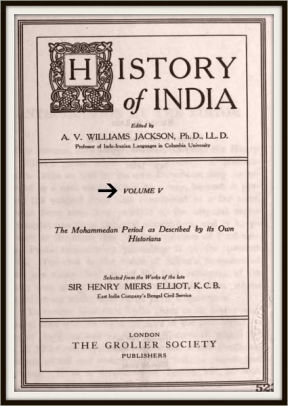
A History of India selected from the works of Sir Henry Elliot
Ladies and Gentlemen, I have been dealing so far with the organization of research by various learned bodies and by the Government of India, but I have left out one of the most important agencies for the purpose. The omission was deliberate, as I wished to deal with this subject at somewhat greater length. The Universities are the repositories of learning and culture, and it is in and through them that research and investigation can be fostered and encouraged. Research is, or ought to be, one of their most important functions, and the encouragement and organization of research should be one of the important tests of their utility and success. There are few persons who dissent from this statement. Have the present Universities succeeded in organizing and stimulating research on a scale which would justify our regarding them as nurseries of learning and culture? Have they given evidence of the creative energy and brilliant leadership which even a third-rate German University has frequently shown? What progress has actually taken place in the adaptation of our Universities to the complex problems with which India will be faced in the immediate future? To what extent, if any, have the numerous problems of history referred to in this address been solved by them? These are some of the questions which an impartial inquirer is bound to put in dealing with research. I am afraid it will be difficult for me to reply to these questions, as this is not a forum for the discussion of such problems and the issues raised therein are too wide to be dealt with in this Congress. I shall therefore confine myself to research in history, and deal with the problem from the point of view solely of research. Until within a comparatively short time, Indian Universities completely neglected Indian history, and there are thousands of students whose knowledge of the history of their own country is extremely meagre. It may be said of a large proportion of such students that they know the history of every country except their own. This state of affairs lasted for a considerable period, and these half-baked and immature products of ill-equipped and insufficiently staffed bodies, with the honorific names of Universities, did nothing to remove the evil. It is only recently that salutary reforms have been introduced, and Indian history has been given its own place and recognition in some Universities. There are still a number of Universities where such instruction is inadequate and unsatisfactory, and the methods of teaching are primitive and crude: cramming of dates, memorising of important events, and learning by rote, are the normal features, not of lectures or instruction in Universities, but of the students in their desperate and pitiful anxiety to pass the examination. This is due, in my humble opinion, to faulty methods of teaching in such bodies, which are the inevitable result of inadequate preparation by the lecturers engaged in teaching the subject. History is regarded as a soft option by almost everyone and a lecturer who cannot teach any other subject properly, is assigned the work, and our national history has consequently received a set-back from which it will take a long time to recover. Indian Universities ought to put their houses in order and organize a joint board for the co-ordination of history teaching throughout India. The crude and primitive methods current in these bodies should be eradicated, and a uniform level should be maintained, in order that a student who wishes to pursue research in a definite line may be thoroughly equipped. Not every person should be advised to take up a study which demands special qualifications. We do not want partisans; we have no room for factious persons who start their studies with the sole desire to explain their fixed ideas. The student should have a sane judgment, an open mind, and a capacity for taking infinite pains with his work. Hunting through the index of a particular work, and piecing such references together, maybe an extremely fine hobby for some individual, but we shall not be justified in regarding it as a substantial or definite contribution to original knowledge. A long and brilliant array of authorities in the footnotes of a folio page is not likely to dazzle a person who has gone through a severe course of intensive study, under most unfavourable circumstance, and window-dressing of this type is more likely to damn and discredit an author than enhance his prestige or increase his fame. A thorough training in the principles and practice of research is a sine qua non of success, and this can be undertaken only in seminars conducted by competent and experienced historians. The seminar system ought to be an integral part of every University subject, and post-graduate students should be grounded in the basic principles of their subject. There is reason to believe that seminars have not yet received sufficient recognition in some Universities, and the feeling is general that even post-graduate students leave the University without a rudimentary knowledge of the main authorities on their subject. I deliberately refrain from specifying such Universities, but I feel that attention should be pointedly drawn to the great need for placing history teaching on a satisfactory and sound basis. The matter ought not to be allowed to drift further, and the cooperation of Indian Universities is vital. The standards and achievements of different Universities necessarily vary. There are institutions which have stimulated research in a manner that has won the unstinted praise of all who have had opportunities of studying their productions. There is a new atmosphere and a new spirit pervading these institutions. A number of works of a high order have lately been published, embodying researches which have been generally recognized as definite contributions to historical knowledge. On the other hand, there are institutions where research is practically unknown. Their chief function is to grant degrees, and this task—not a very difficult or a burdensome task—they have accomplished in a remarkably efficient manner. Degrees of various grades have been conferred, but research in scientific form, of the requisite standard, is conspicuously absent. It would be invidious to mention such bodies, and raise a controversy which will be as unfruitful as it must be barren. The point which is now accepted by all who have had an opportunity of studying this state of affairs for a considerable period, is that the encouragement of and incentive to research has been lost sight of in the desire—a legitimate desire within rational limits—to take a part in the politics of a University. Politics have come to occupy a place in certain institutions which would have been unthinkable about twenty years ago. The energies of teachers are dissipated in a fruitless and barren endeavour to secure seats in the highly prized bodies of these institutions. Administration is far more useful than research, and administration occupies the attention of some persons to an extent which would have been deemed impossible in the pre-Reform period. This is due no doubt to the cumbersome and complicated machinery which the Sadler Commission introduced about fifteen years ago. These remarks are not applicable to every University, nor are they intended to be condemnatory of the work of Universities as a whole. I have merely attempted to describe the general tendencies at work in certain institutions. It is clear that such a state of affairs can be reformed only gradually, by building up a healthy University tradition by raising the standard of research conducted in such institutions, and insisting on research by members of the staff engaged in teaching the subject. A joint board for historical research should be constituted, which should include representatives of Indian Universities and the Government of India, and a programme of historical studies mapped out. It should be spread over a number of years, and each University and learned body should be invited to join such a body. I have been obliged to discuss frankly and without reservation the condition of Universities, as I feel that we cannot allow such a state of affairs to continue for a long time. Signs are not wanting that the outburst of educational activity which was due to the Sadler Commission has spent itself out, and we have now arrived at a stage of stagnation and lassitude which have altered in many important ways the basic principles of that Commission. Research has been forgotten in the alluring pursuit of administration, and research has ceased to be the vital and essential function of these bodies. These remarks are applicable only to some Universities, and are confined to research work in history. I hope that a healthy opinion will be mobilized in these bodies, and work started on lines which have made the great Universities of the West renowned throughout the world.
The organizers of this Congress are to be heartily congratulated on the brilliant execution of a scheme which had been broached by some of the foremost historians, and I have no doubt whatsoever that this body, inaugurated amidst such happy auspices, with the blessings and support of historians all over the world, is destined to play a momentous part in the building up of a vigorous School of Indian Historians. We have not started this organization in a spirit of hostility to any institution. It is not our desire, nor can it be the wish of any one of its members, to start an association with the object of multiplying the long list of sectional and provincial organizations that have played, and are still playing, a brilliant role in the development of historical investigation. Provincial patriotism has a rightful, nay an essential, place in our national life and endeavour, for it is from the warmth and glow of the concrete events that appear every moment and unconsciously mould our outlook, that we reach the sublime heights of an all-India patriotism. I cannot expect a citizen of Poona to develop a conception of Indian patriotism unless he has been bred in and shared the thoughts of those who made Poona famous. They carved a temple of fame and valour which is a source of perennial interest to thousands who undertake the pilgrimage of piety and devotion to this sacred and historic city. Similarly, I cannot conceive a Delhi citizen who is not constantly reminded of the splendour of the Moghal Rule by the daily, almost hourly, sight of monuments of Moghal glory and brilliance. A Sikh cannot become a true Indian patriot unless he has love for sacred Amritsar or historic Lahore. Provincial patriotism is the foundation of National patriotism, and our object in starting this organization is not to kill provincial bodies but to encourage and foster their development and to bring scholars closer together, so that we may be able to launch those undertakings and enterprises which have been deferred for an unconscionably long time. The Modern History Congress aims at organizing the scattered energies and divided work of a number of institutions which have hitherto worked in isolation into a coherent and effective body. It will be the clearing-house of Indian historical research and will organize researches into the various phases of Indian history on an all India basis. While carefully safeguarding the position and status of each organization and each province, it will initiate lines of policy concerning Indian research as a whole and serve as an authoritative organ of Indian historical scholarship. In actual working, it will be a federal body with certain clearly marked and well defined spheres of action, reserved exclusively or almost exclusively for its own legitimate and normal sphere, while provincial organizations will keep up their residuary powers within the ambit to which they have hitherto restricted their efforts. This does not mean that provincial organizations will not be expected to contribute substantially to original knowledge, nor does it imply the existence of an extraordinary body, with dictatorial powers, imposing its decrees on its rebellious subjects. All that it implies is that the exchange of views among scholars, the lack of which has been severely felt by many historians, will be frequent and effective, and the experience gained by researchers in other fields will be available to all, in a way which has never been possible so far. But this is not the only function of the Congress. Its other function is to give an impetus to research on an all-India basis, in a systematic and organized form, on a permanent basis, through a strong and effective organization. Its standards will be higher than have been developed so far, either in the West or in the East, and its normal sphere of activity will be marked by the confidence and support which the world of Indian scholarship will render to it at almost every step. The All India Modern History Congress knows no politics; it will not serve the interest either of our national life and thought propagandists who paint the glories of their country’s past in a flamboyant language and consider Western influence and European culture primarily responsible for the low position which their country occupies in the society of autonomous communities, nor will it support writers who, obsessed with prejudice and racial pride, have completely ignored those features of which have maintained and preserved the continuity of our cultural life, and the stability and permanence of our indigenous institutions. The power of assimilation which our country has shown during the last one thousand years would be quite inexplicable to historians who think that the passage of a law is immediately followed by its general and universal application and fail to take note of a deep gulf that separates the actual from the ideal. The Congress is not the forum for the dissemination of theories of racial supremacy or political predominance, and nothing can be or is more fatal to the healthy formation of sound opinion on the history of India than the manipulation and distortion of facts of history to serve the ends of political parties in the country. It is exclusively intended for scholars of history, and to the brotherhood of historians the controversies of the day make no appeal. Its function is that of a judge who passes judgment on the motives no less than the policy of a particular individual. These, Ladies and Gentlemen, are the functions of the All India Modern History Congress, and it is with reference to these functions that the work and value of this great organization will be assessed. It must be catholic in its sympathies and leave its doors open for subjects which have hitherto received scanty attention.

Ladies and Gentlemen, I have now completed the survey of the needs and requirements of Indian historians. It has, I am afraid, been dreary and wearisome to some of you, but I felt that before an expert body like the present, including as it does, representatives of Universities, learned bodies, and Indian States, this was the proper opportunity for placing before you the difficulties of our craft. To whom should I go, if not to you, for a solution of problems which have perplexed and baffled some of the most brilliant and experienced among us? There is, I admit, a real danger in the microscopic examination of a small and insignificant bit of History. There are persons who devote their lives to the patient examination of records which appeal and can appeal only to an exceedingly small number of historians. There are some pathetic cases of historians being submerged and overwhelmed by the minuteness, insignificance, and the triviality of a voluminous amount of material which they are called upon to handle day after day and month after month. The tracing of a genealogical tree of a fifth-rate ruler of a petty and insignificant State may occupy the life-time of a patient and persistent researcher, but it is not likely to give him either breadth of vision or the freshness of outlook for the completion of his work in an intelligible manner. History does not consist merely in the dissection of tiny bits of facts, out of old parchments, collected together after years of toil, without any principle or significance. This is not history, but a heterogeneous collection of unorganized facts pieced together with soulless and mechanical industry. History consists, not merely in the organization, collection and examination of material, but also in its interpretation. Without a correct interpretation of the mass of material presented to the historian, history will degenerate into a meaningless and barren recitation of a string of unrelated and uncoordinated facts, and will cease either to inspire or instruct. Interpretation is the core of history. Indian historians owe a special duty to their country at this juncture. I do not decry specialised research; I believe in the archive method and have incorporated my researches in archives in more than one work. I feel strongly that the investigations must be thorough and accurate, and I insist on every historian undergoing highly specialised training in the principles and methods of historical research. But I feel equally strongly that, no Indian historian should ignore the broad generalisations which should underlie Indian historical research as a whole. While specialisation in a particular period of Indian History is an indispensable preliminary to the success of a historical treatise, we must keep vividly before us the conception of Indian History as a whole. We must not divide ourselves into watertight compartment classes of Mahratta, Sikh, Muslim, and Bengali historians. While the subject may be concerned only with a small period of Indian History, every Indian historian should aim at a conception of united India. This is the noblest and truest legacy of fifty years of rapid progress. We are not merely Mahrattas and Muslims, we are also part of a larger whole, and it is our duty as historians to emphasise this point, and bring home to the young the spiritual energy and intellectual force which impelled many of our national heroes to work, not merely for the limited and circumscribed sphere in which they moved and breathed, but also for the general progress and improvement of our Motherland. While our historical researches must depend essentially on the nature and variety of material at our disposal, and our conclusions must be deduced logically and calmly from the material itself, they must be inspired by the new sentiments which animate India today. It is the spirit of a common Indian nationality, basing itself on the fundamental unity of the Indian people, and having its origin in the numerous forces, spiritual, intellectual and economic, which have fused various communities and classes, provinces and States, into an organic whole. The emergence of this idea from the welter of anarchy and confusion, which has unhappily marred our development in some centuries, is the happiest sign of the present times and I hope and believe that this conception will be incorporated in the daily pattern of our national life. While history is the record of truth, and nothing but the truth, it deals with the human organism, with its passions and prejudices, its sub-conscious impulses and lofty ideals. It is a record of human activity, and is instinct with life. We deal, not with fossils, but with the achievements of persons who have left imperishable monuments of their glory in the Indian Society of to-day. The present is linked up with the past by the strongest forces in the world. It is the sacred duty of historians of India to attempt the interpretation of her annals in a way that is in harmony with the basic conception of her common nationality. This does not and ought not to involve importation of our modern theories into the solid mass of material concerning small and limited periods of history. All that it implies is that, the spirit in which we undertake this task must be entirely different from that which has unfortunately disfigured some writings, both Indian and English. I hope and believe that a new era has dawned, an era in which India will rise to the height of her greatness, and will show to the world that she is fitted to occupy her rightful place in a position of complete equality with other nations of the world. A great deal depends on the way in which the youth of India is taught history, during the impressionable period of adolescence, as well as on the method and the spirit in which the historians perform their task. We can enable her to reach her full stature by infusing the spirit of Indian nationality into our writings, by avoiding sectional views and prejudices, and popularising the idea of a common nationality. This is a sacred duty, and I hope and believe that it will be performed by us with the zeal and enthusiasm which have always characterised our best and noblest efforts in the past.
Sir Shafaat Ahmad Khan, an eminent historian of pre-independence India, became the Chairman of the Modern Indian History Department, at the University of Allahabad, in 1921. He began the Journal of Indian History under the aegis of the department in 1924. He also taught at the University of Madras and the Aligarh Muslim University and presided over the first All India Modern History Congress, which was to become the Indian History Congress, in 1935. Sir Shafaat had also been a member of the UP Legislative Council, part of the Muslim delegation to the Round Table Conference and India’s high commissioner to South Africa from 1941 to 1944. He was also a member of the 14 member interim cabinet, formed in 1946, to facilitate the transfer of power from the British to the Indians. He is the author of various significant historical works, including John Marshall In India – Notes and Observations in Bengal (1668-1672), Anglo Portuguese negotiations relating to Bombay (1660-1677), Sources for the History of British India in the Seventeenth Century and The East India Trade: In the Seventeenth Century. You can read some of these works here.
| 2500 BC - Present | |

|
2500 BC - Present |
| Tribal History: Looking for the Origins of the Kodavas | |
| 2200 BC to 600 AD | |

|
2200 BC to 600 AD |
| War, Political Violence and Rebellion in Ancient India | |
| 400 BC to 1001 AD | |
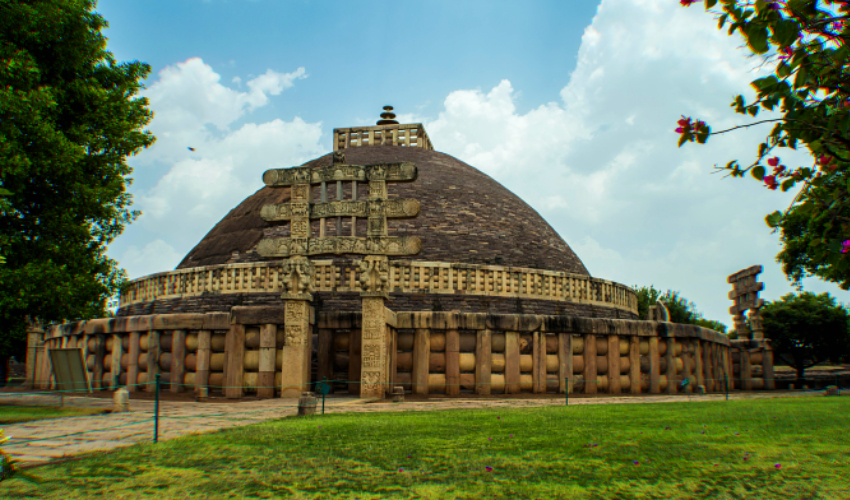
|
400 BC to 1001 AD |
| The Dissent of the ‘Nastika’ in Early India | |
| 600CE-1200CE | |
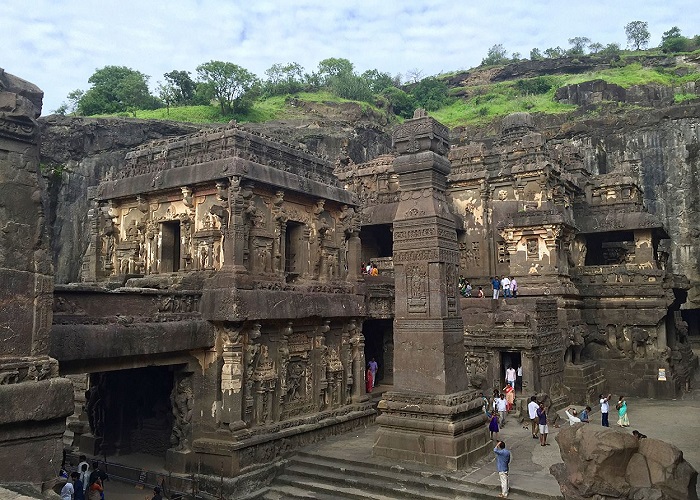
|
600CE-1200CE |
| The Other Side of the Vindhyas: An Alternative History of Power | |
| c. 700 - 1400 AD | |
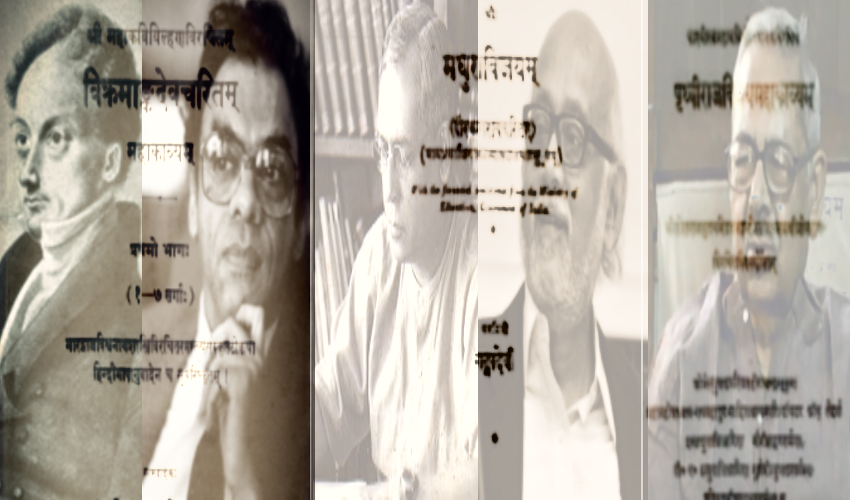
|
c. 700 - 1400 AD |
| A Historian Recommends: Representing the ‘Other’ in Indian History | |
| c. 800 - 900 CE | |
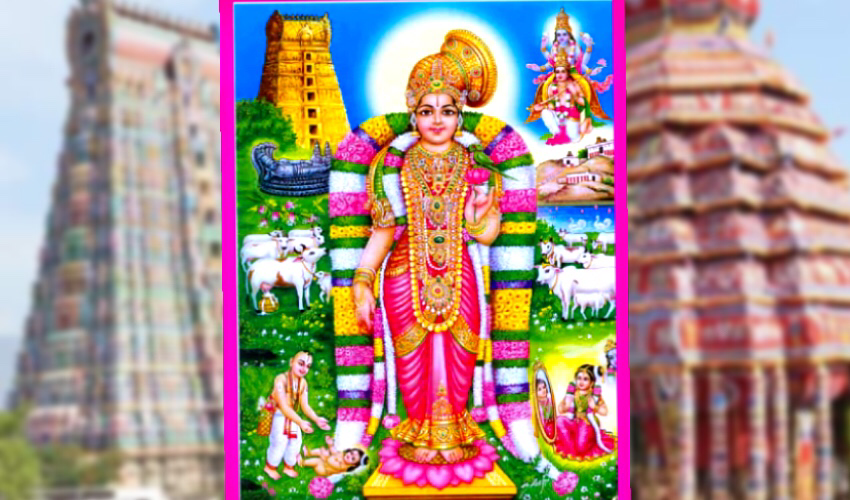
|
c. 800 - 900 CE |
| ‘Drape me in his scent’: Female Sexuality and Devotion in Andal, the Goddess | |
| 1192 | |
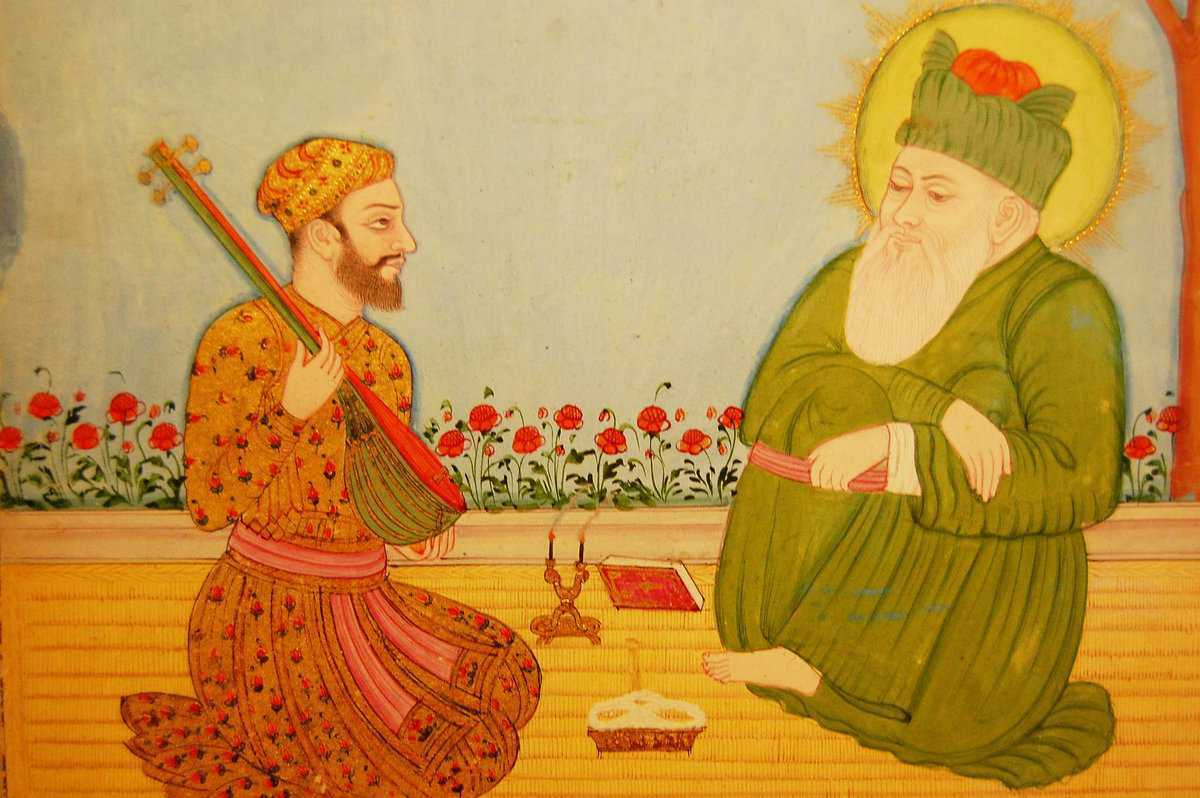
|
1192 |
| Sufi Silsilahs: The Mystic Orders in India | |
| 1200 - 1850 | |

|
1200 - 1850 |
| Temples, deities, and the law. | |
| c. 1500 - 1600 AD | |
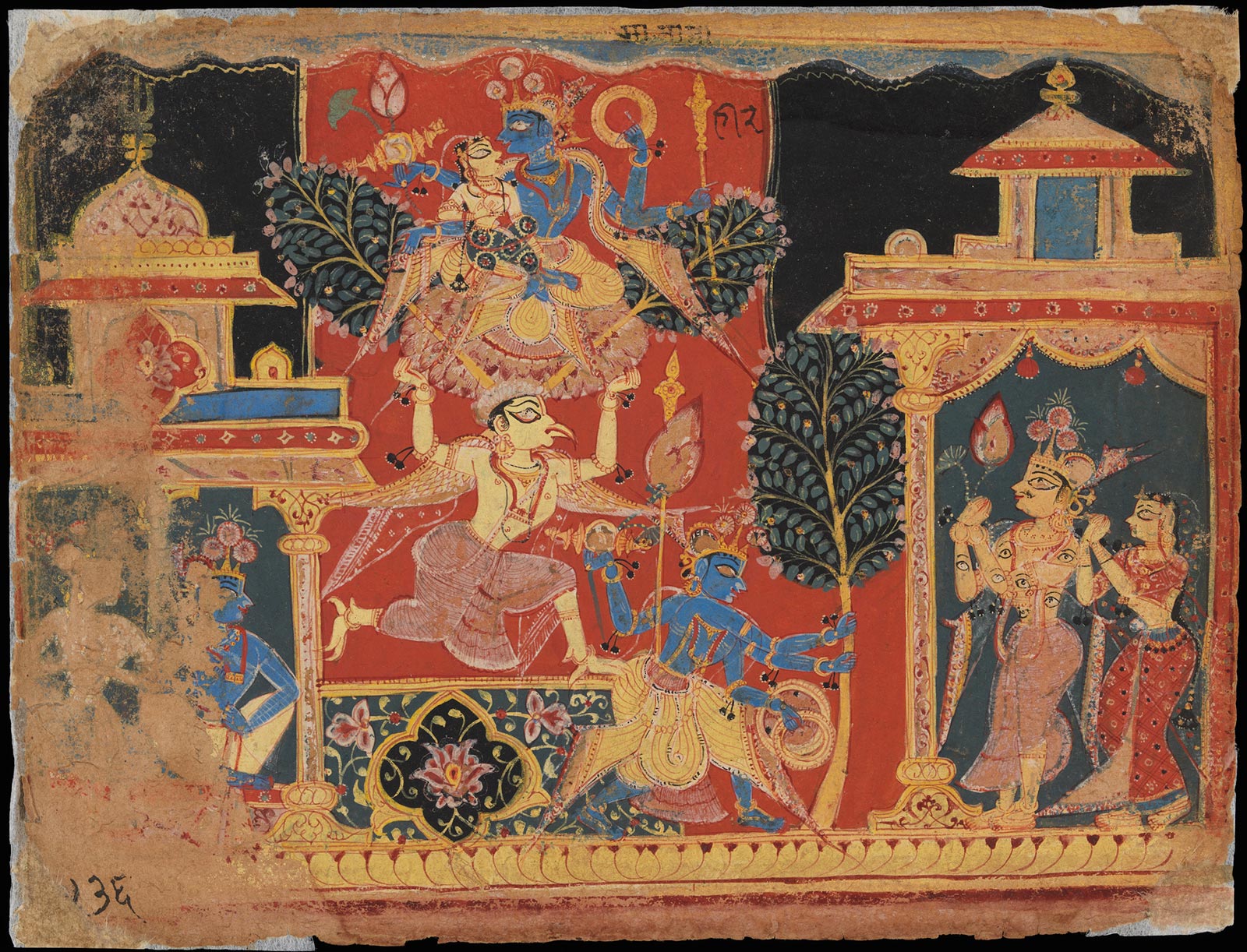
|
c. 1500 - 1600 AD |
| A Historian Recommends: Religion in Mughal India | |
| 1200-2020 | |
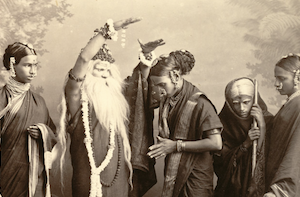
|
1200-2020 |
| Policing Untouchables and Producing Tamasha in Maharashtra | |
| 1530-1858 | |

|
1530-1858 |
| Rajputs, Mughals and the Handguns of Hindustan | |
| 1575 | |
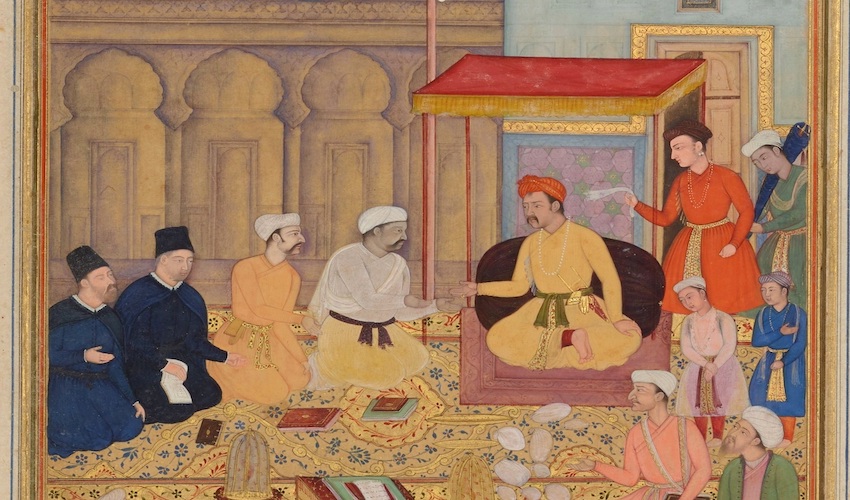
|
1575 |
| Abdul Qadir Badauni & Abul Fazl: Two Mughal Intellectuals in King Akbar‘s Court | |
| 1579 | |
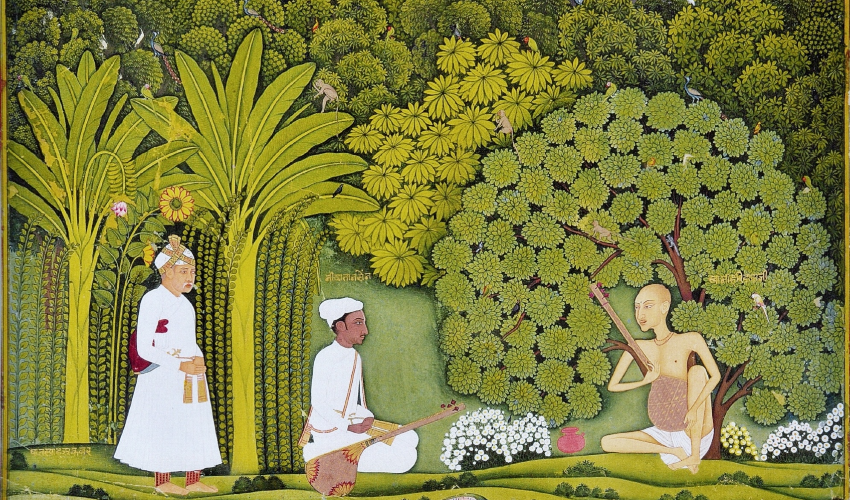
|
1579 |
| Padshah-i Islam | |
| 1550-1800 | |
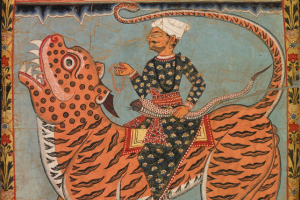
|
1550-1800 |
| Who are the Bengal Muslims? : Conversion and Islamisation in Bengal | |
| c. 1600 CE-1900 CE | |

|
c. 1600 CE-1900 CE |
| The Birth of a Community: UP’s Ghazi Miyan and Narratives of ‘Conquest’ | |
| 1553 - 1900 | |
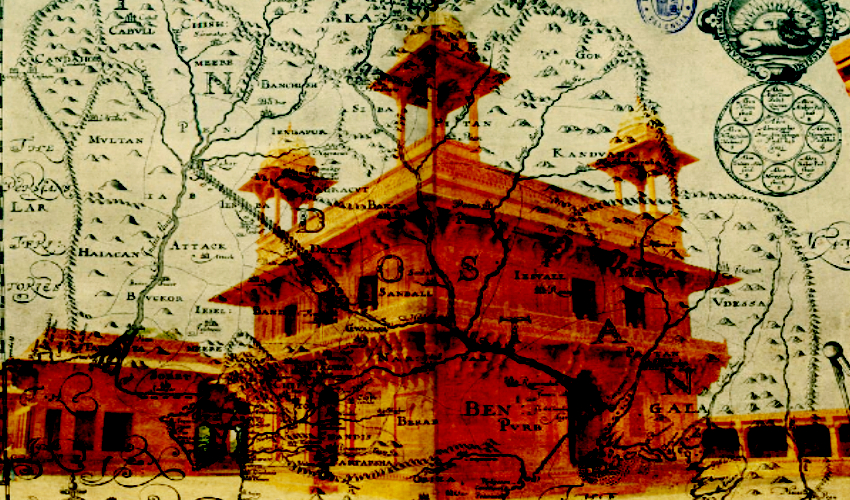
|
1553 - 1900 |
| What Happened to ‘Hindustan’? | |
| 1630-1680 | |
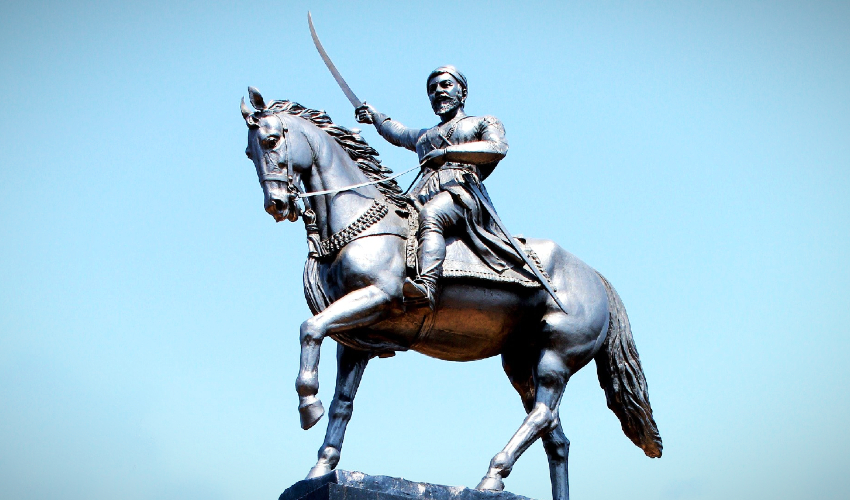
|
1630-1680 |
| Shivaji: Hindutva Icon or Secular Nationalist? | |
| 1630 -1680 | |
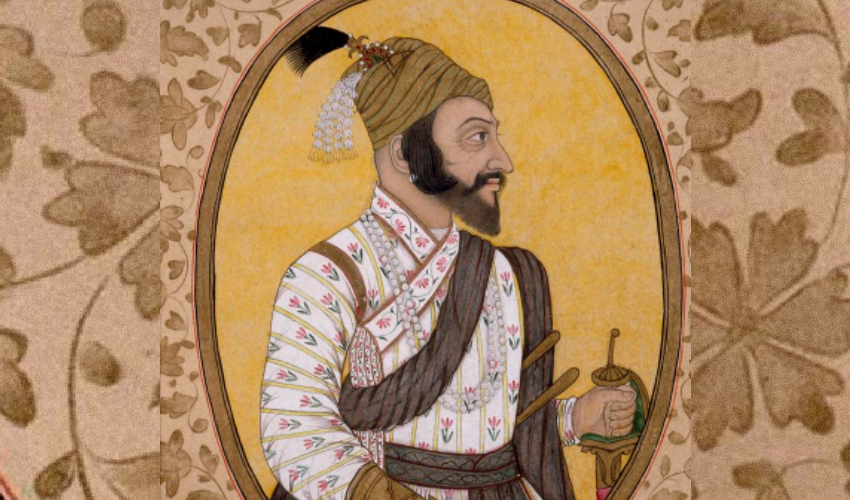
|
1630 -1680 |
| Shivaji: His Legacy & His Times | |
| c. 1724 – 1857 A.D. | |

|
c. 1724 – 1857 A.D. |
| Bahu Begum and the Gendered Struggle for Power | |
| 1818 - Present | |
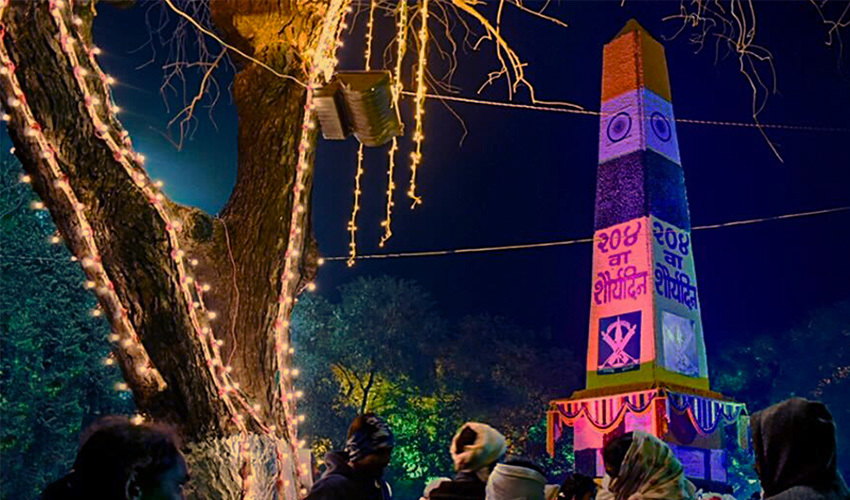
|
1818 - Present |
| The Contesting Memories of Bhima-Koregaon | |
| 1831 | |
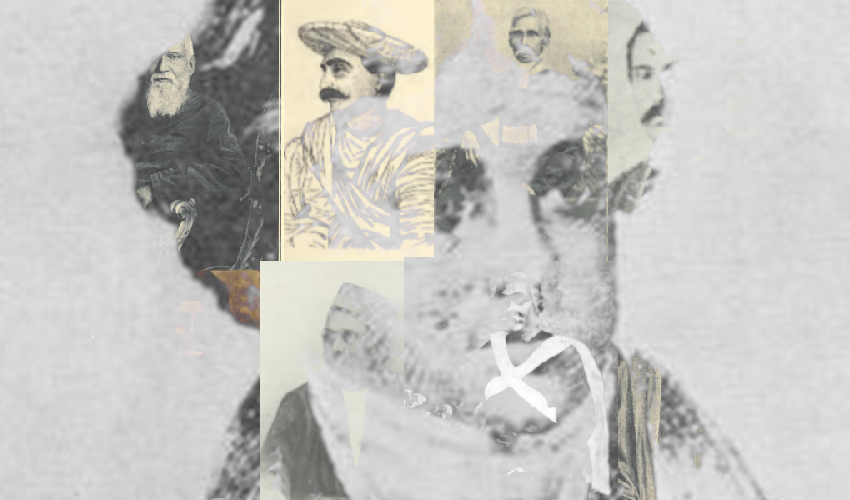
|
1831 |
| The Derozians’ India | |
| 1855 | |
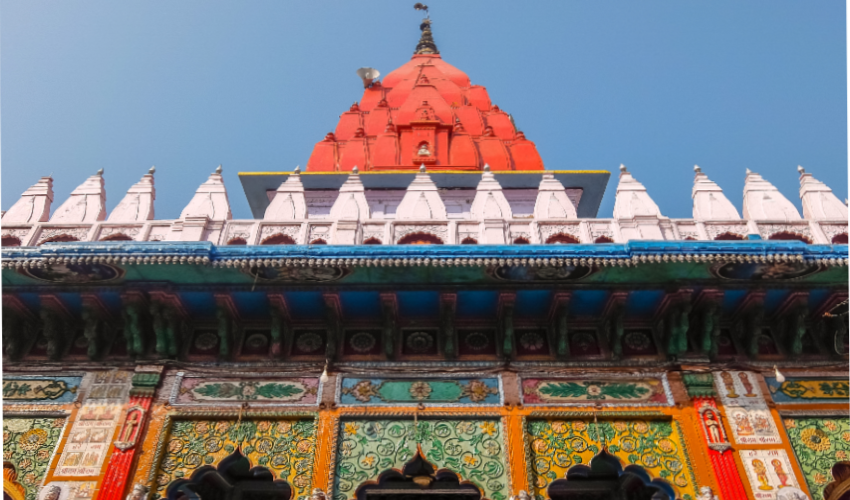
|
1855 |
| Ayodhya 1855 | |
| 1856 | |
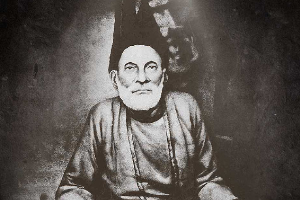
|
1856 |
| “Worshipping the dead is not an auspicious thing” — Ghalib | |
| 1857 | |
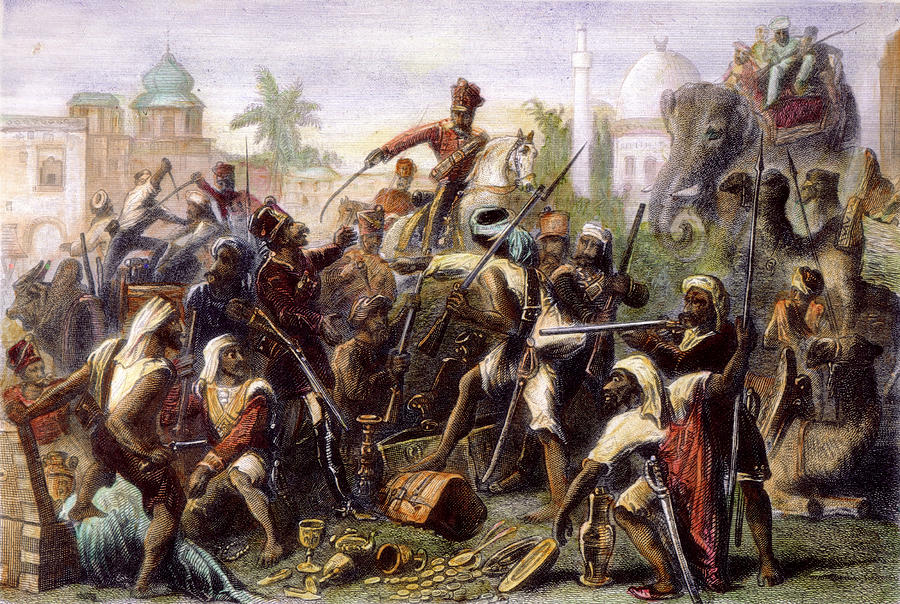
|
1857 |
| A Subaltern speaks: Dalit women’s counter-history of 1857 | |
| 1858 - 1976 | |
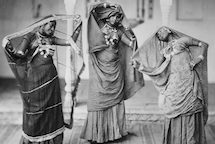
|
1858 - 1976 |
| Lifestyle as Resistance: The Curious Case of the Courtesans of Lucknow | |
| 1883 - 1894 | |
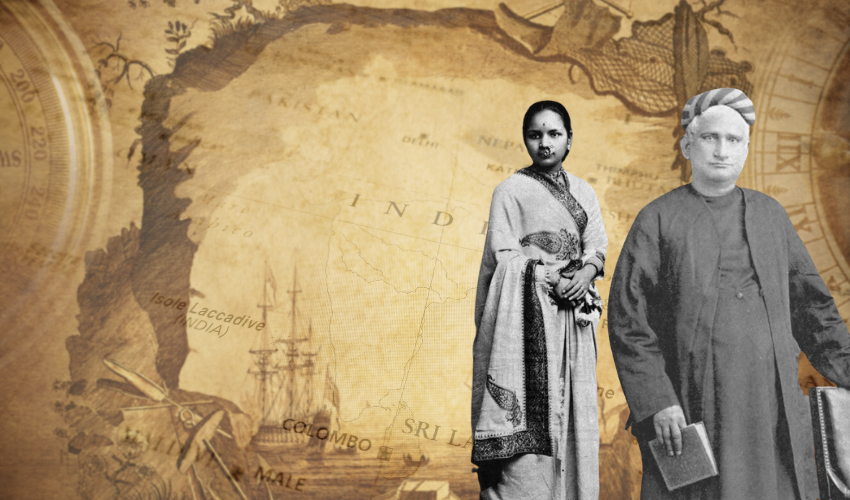
|
1883 - 1894 |
| The Sea Voyage Question: A Nineteenth century Debate | |
| 1887 | |
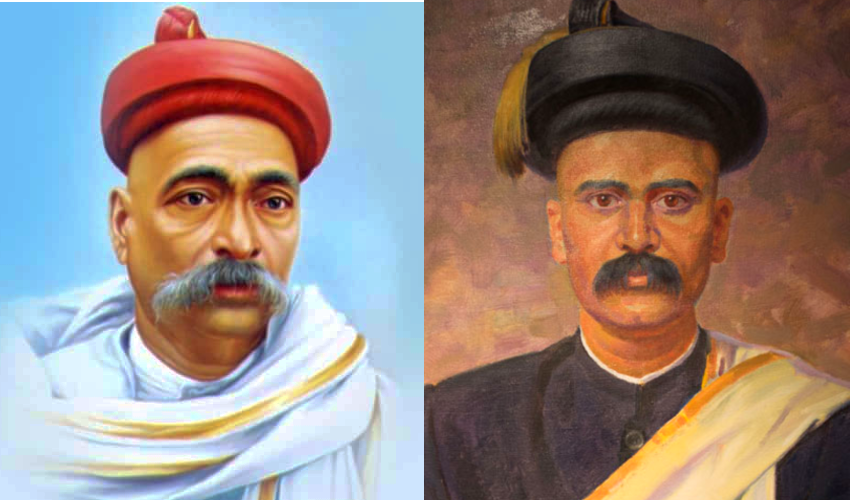
|
1887 |
| The Great Debaters: Tilak Vs. Agarkar | |
| 1893-1946 | |
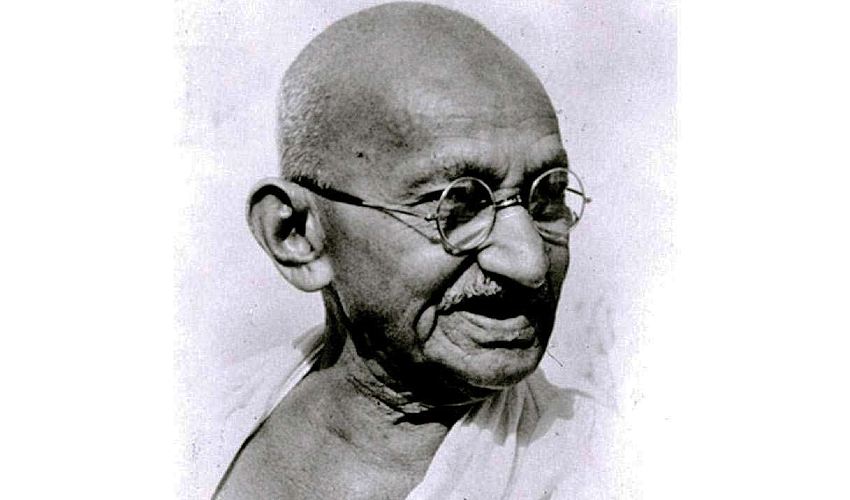
|
1893-1946 |
| A Historian Recommends: Gandhi Vs. Caste | |
| 1897 | |
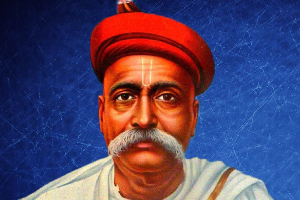
|
1897 |
| Queen Empress vs. Bal Gangadhar Tilak: An Autopsy | |
| 1913 - 1916 Modern Review | |
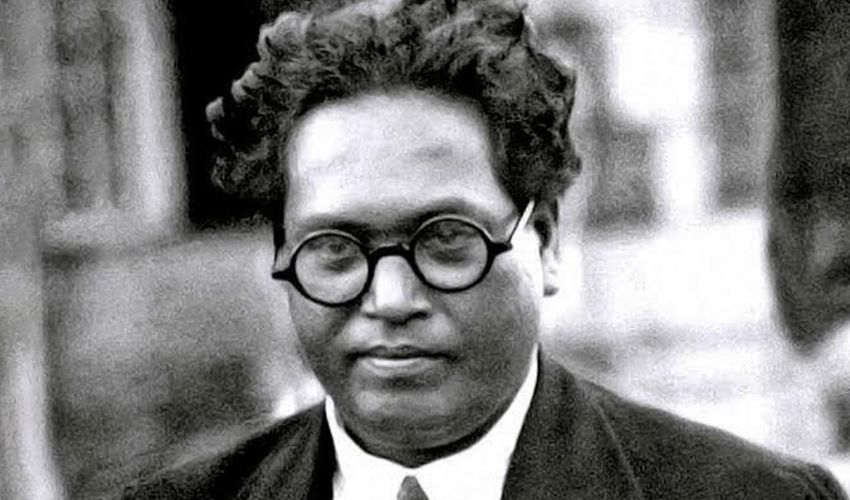
|
1913 - 1916 |
| A Young Ambedkar in New York | |
| 1916 | |
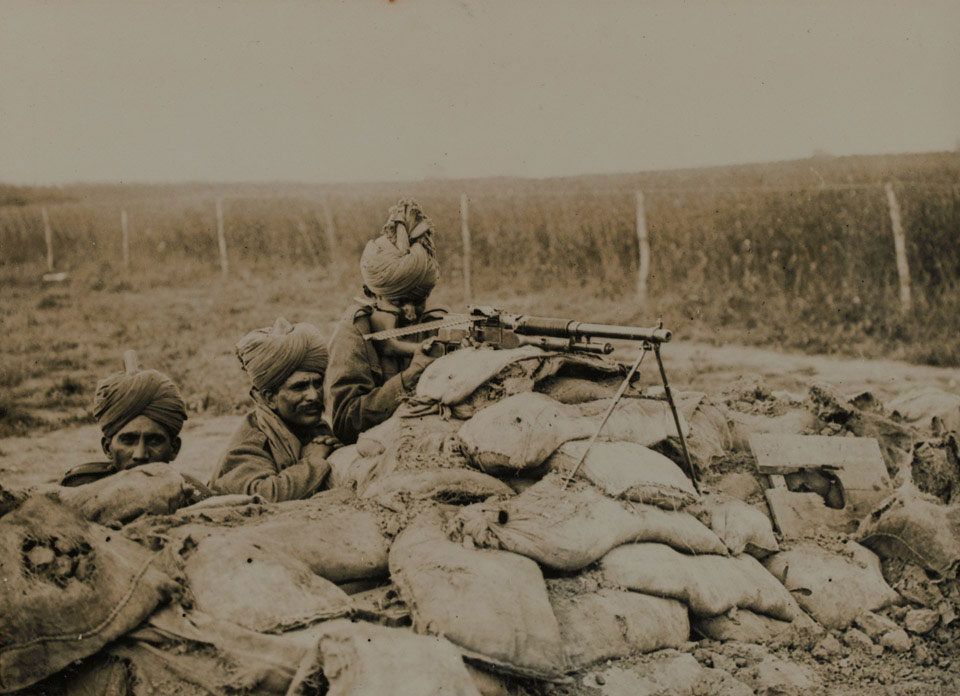
|
1916 |
| A Rare Account of World War I by an Indian Soldier | |
| 1917 | |
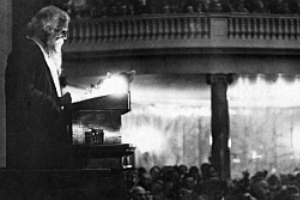
|
1917 |
| On Nationalism, by Tagore | |
| 1918 - 1919 | |

|
1918 - 1919 |
| What Happened to the Virus That Caused the World’s Deadliest Pandemic? | |
| 1920 - 1947 | |

|
1920 - 1947 |
| How One Should Celebrate Diwali, According to Gandhi | |
| 1921 | |
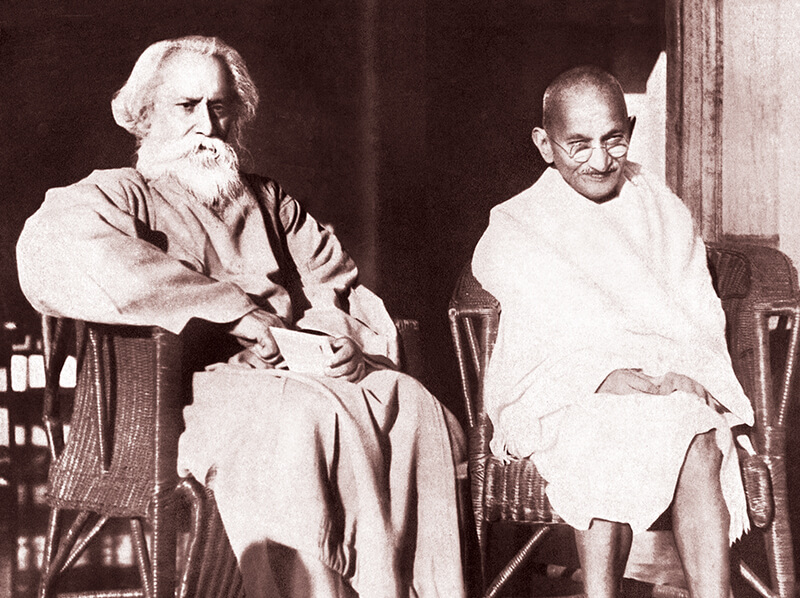
|
1921 |
| Great Debates: Tagore Vs. Gandhi (1921) | |
| 1921 - 2015 | |
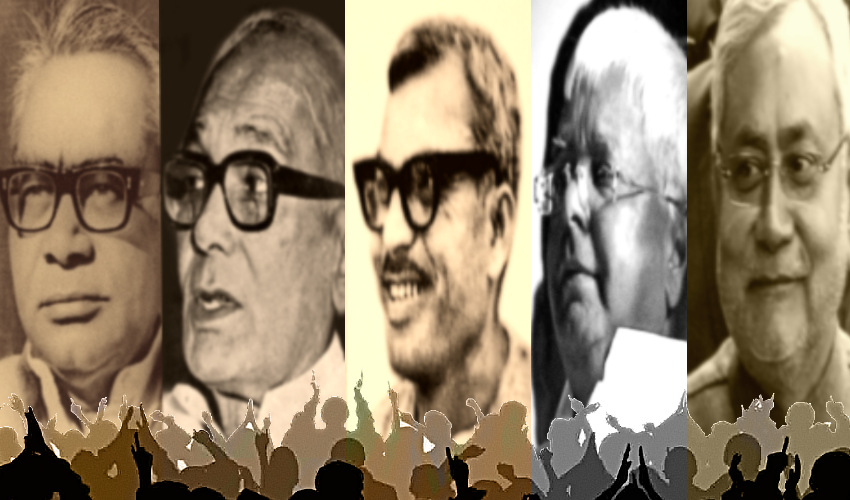
|
1921 - 2015 |
| A History of Caste Politics and Elections in Bihar | |
| 1915-1921 | |
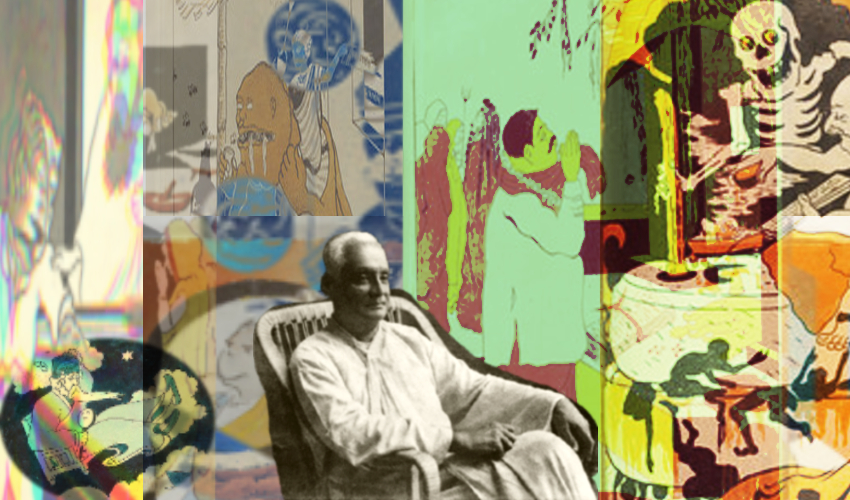
|
1915-1921 |
| The Satirical Genius of Gaganendranath Tagore | |
| 1924-1937 | |

|
1924-1937 |
| What were Gandhi’s Views on Religious Conversion? | |
| 1900-1950 | |
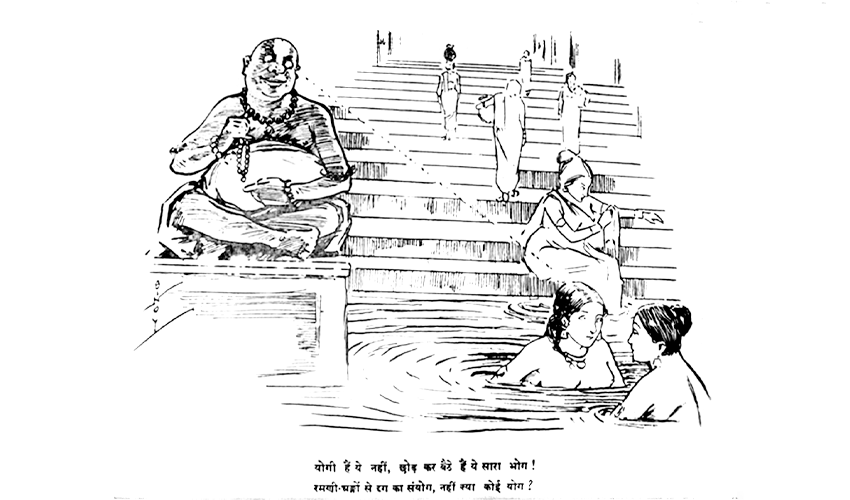
|
1900-1950 |
| Gazing at the Woman’s Body: Historicising Lust and Lechery in a Patriarchal Society | |
| 1925, 1926 | |
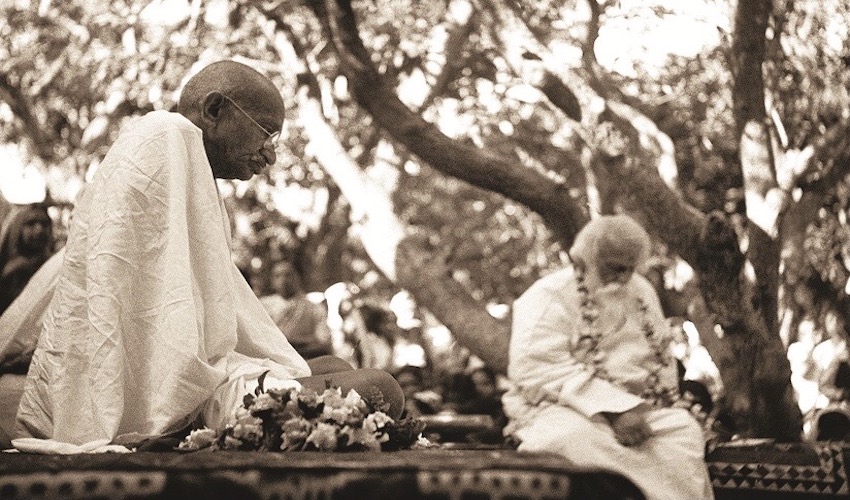
|
1925, 1926 |
| Great Debates: Tagore vs Gandhi (1925-1926) | |
| 1928 | |
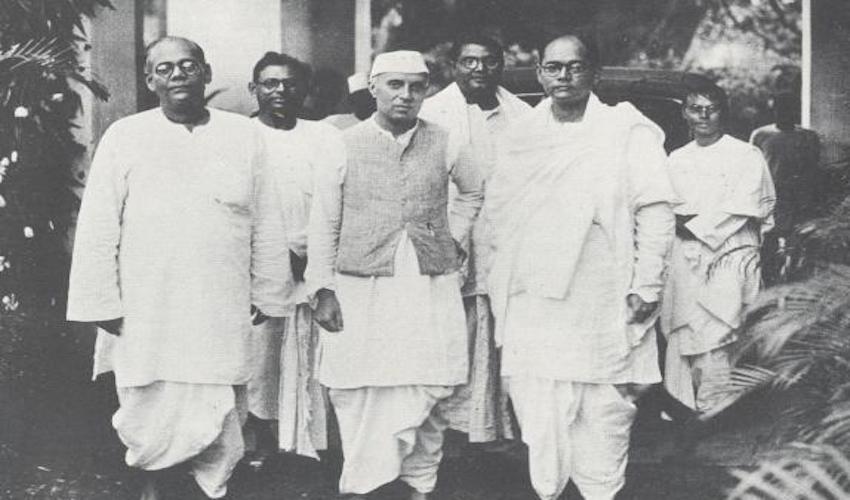
|
1928 |
| Bhagat Singh’s dilemma: Nehru or Bose? | |
| 1930 Modern Review | |
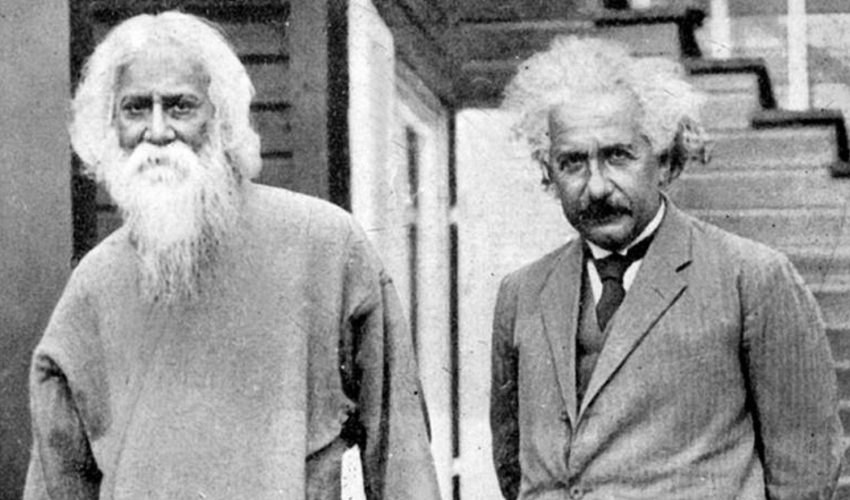
|
1930 |
| The Modern Review Special: On the Nature of Reality | |
| 1932 | |
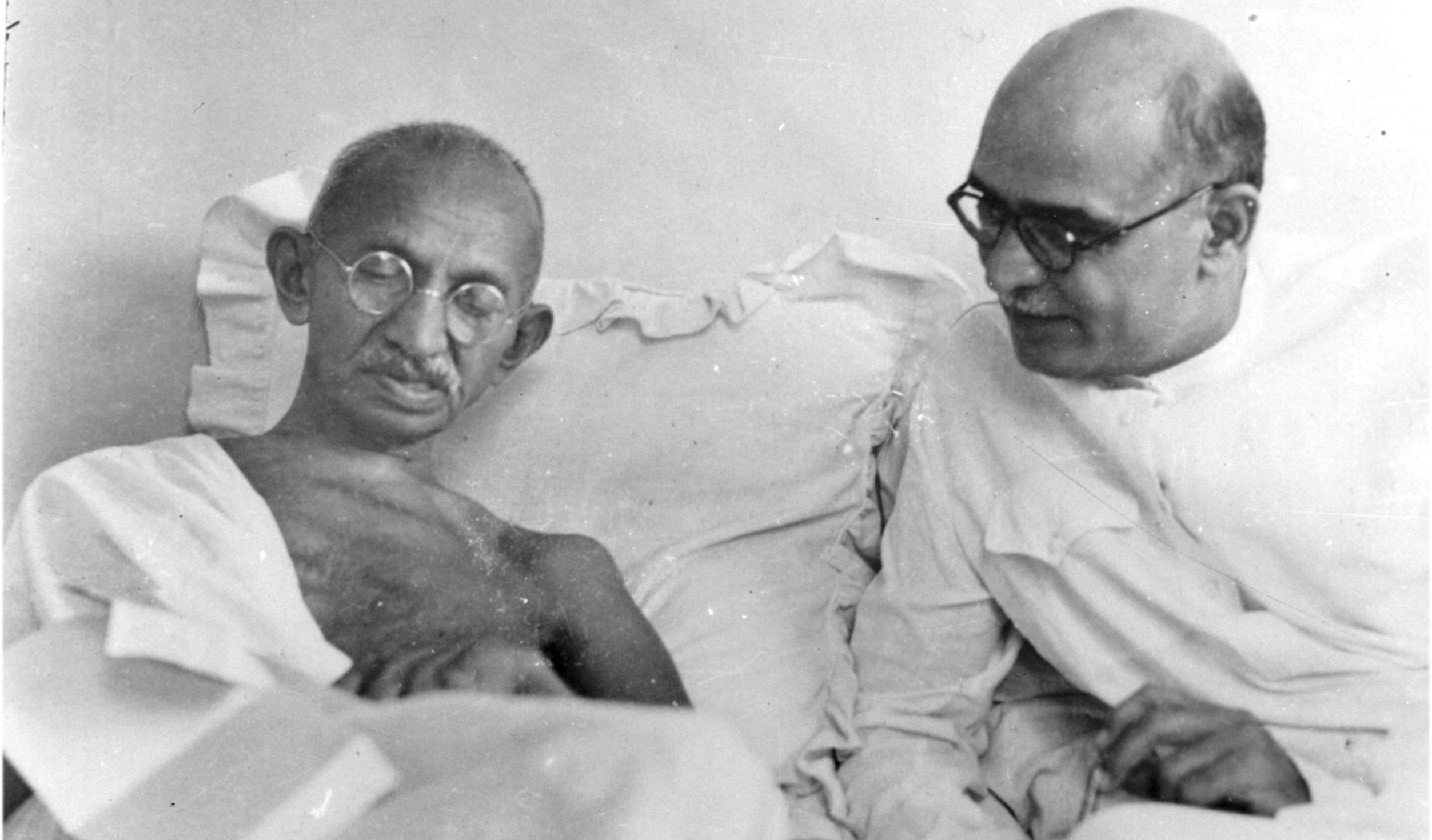
|
1932 |
| Caste, Gandhi and the Man Beside Gandhi | |
| 1933 - 1991 | |

|
1933 - 1991 |
| Raghubir Sinh: The Prince Who Would Be Historian | |
| 1935 | |

|
1935 |
| A Historian Recommends: SA Khan’s Timeless Presidential Address | |
| 1865-1928 | |
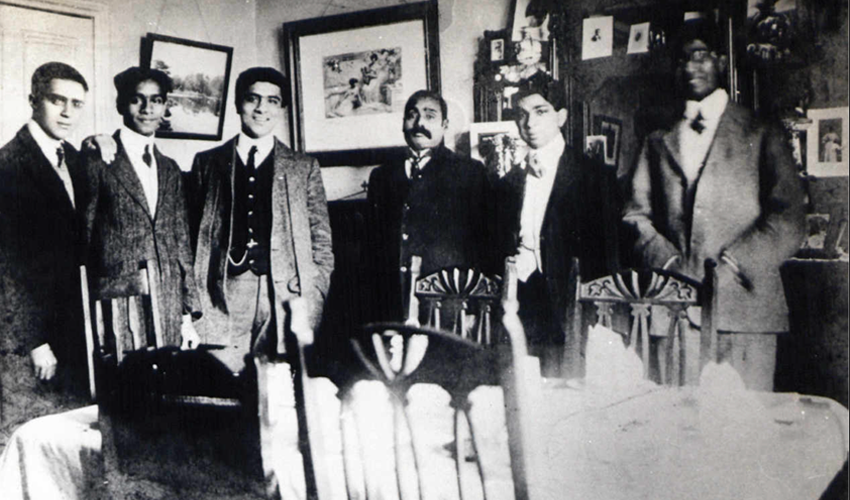
|
1865-1928 |
| Understanding Lajpat Rai’s Hindu Politics and Secularism | |
| 1935 Modern Review | |
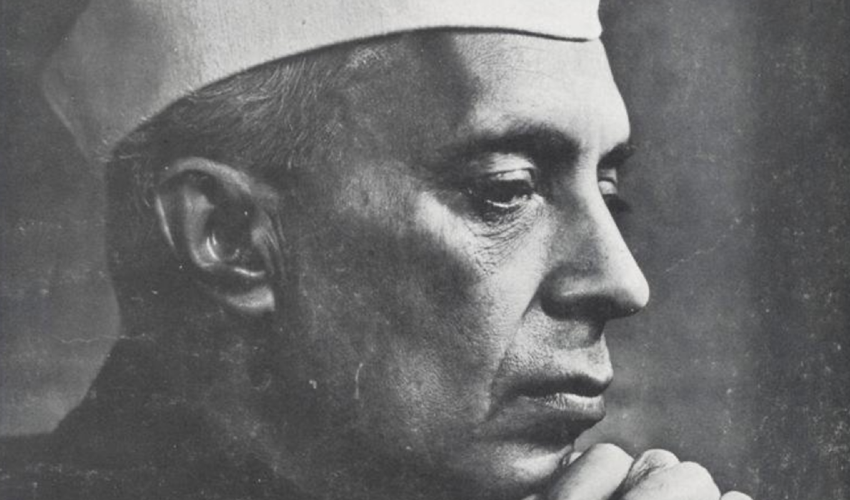
|
1935 |
| The Modern Review Special: The Mind of a Judge | |
| 1936 Modern Review | |
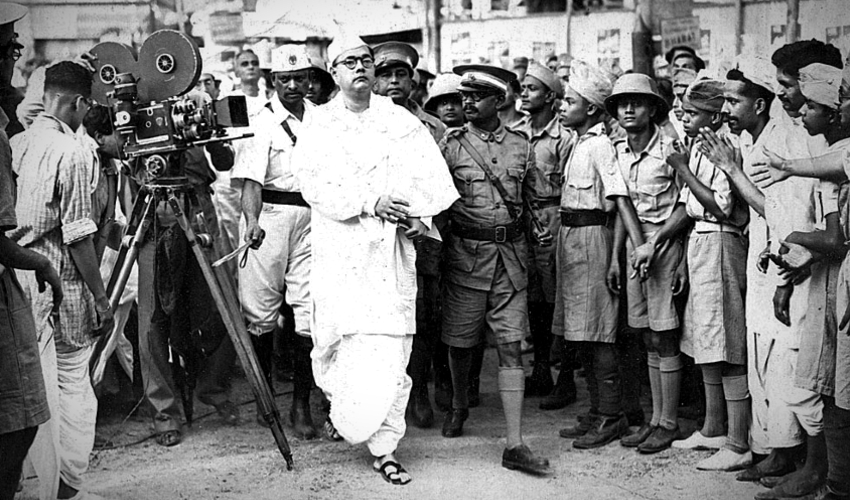
|
1936 |
| The Modern Review Special: When Netaji Subhas Bose Was Wrongfully Detained for ‘Terrorism’ | |
| 1936 | |

|
1936 |
| Annihilation of Caste: Part 1 | |
| 1936 Modern Review | |

|
1936 |
| The Modern Review Special: An Indian MP in the British Parliament | |
| 1936 | |

|
1936 |
| Annihilation of Caste: Part 2 | |
| 1936 | |

|
1936 |
| A Reflection of His Age: Munshi Premchand on the True Purpose of Literature | |
| 1936 Modern Review | |
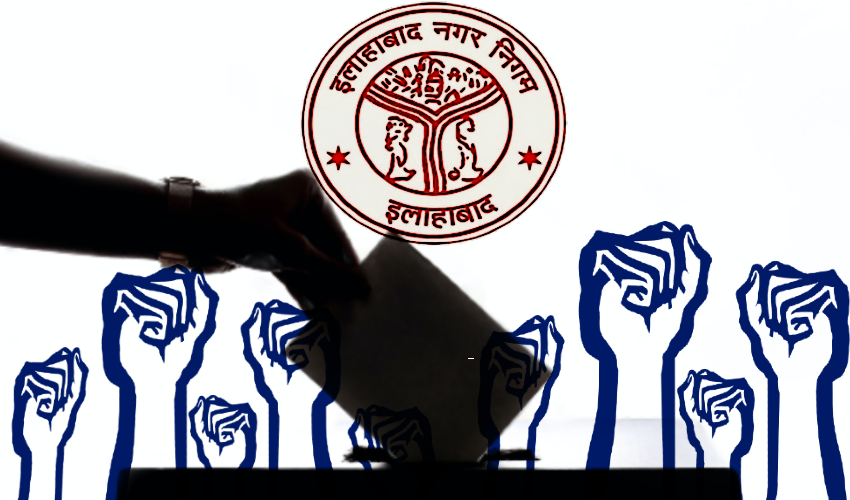
|
1936 |
| The Modern Review Special: The Defeat of a Dalit Candidate in a 1936 Municipal Election | |
| 1937 Modern Review | |
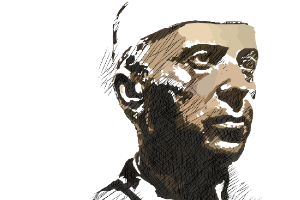
|
1937 |
| The Modern Review Special: Rashtrapati | |
| 1938 | |
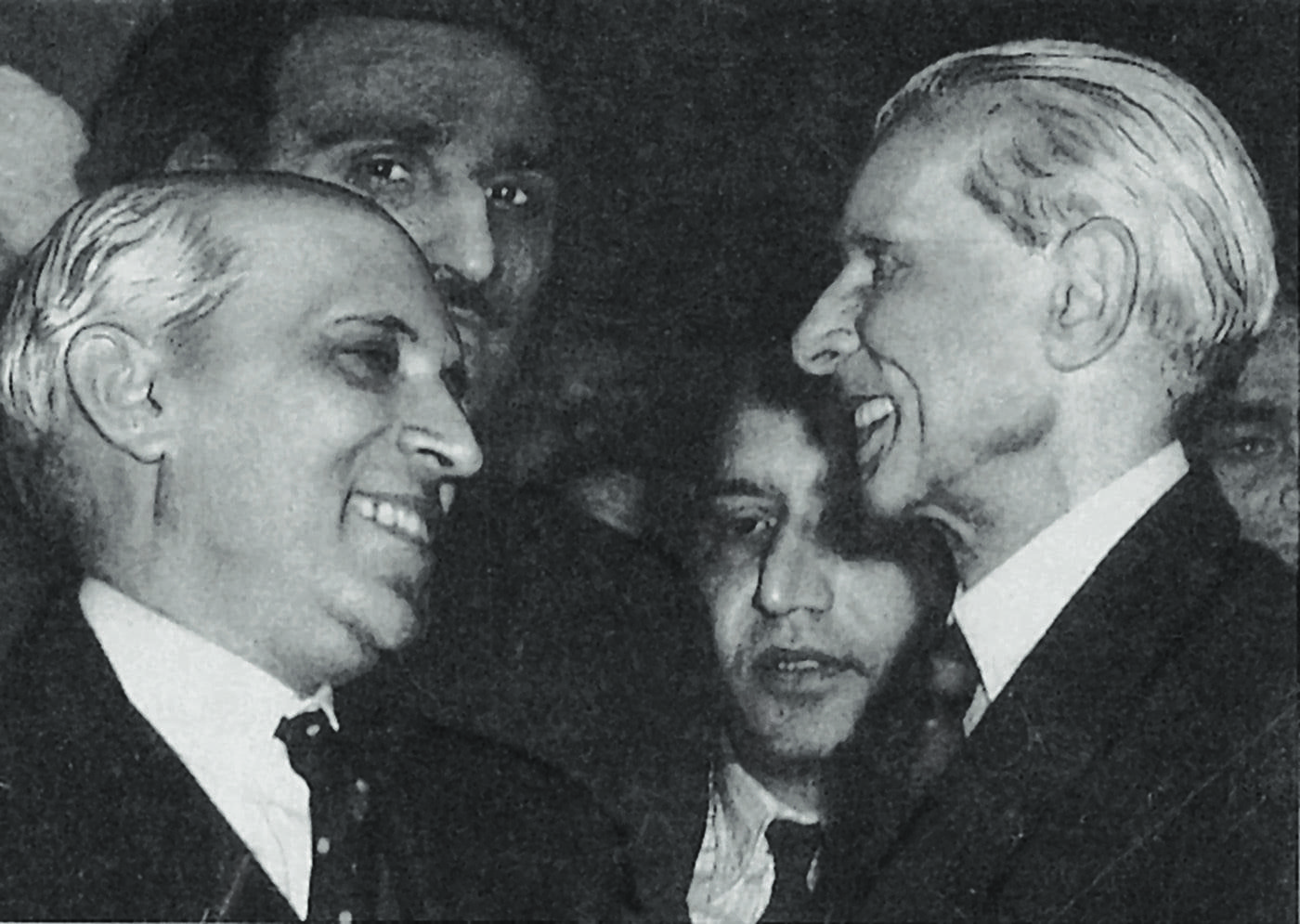
|
1938 |
| Great Debates: Nehru Vs. Jinnah (1938) | |
| 1942 Modern Review | |
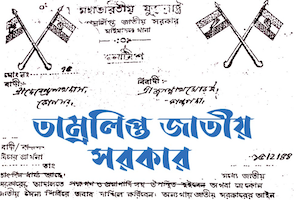
|
1942 |
| IHC Uncovers: A Parallel Government In British India (Part 1) | |
| 1943-1945 | |
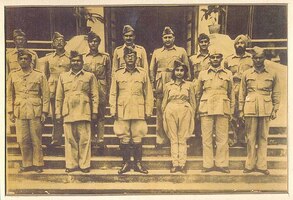
|
1943-1945 |
| Origin Of The Azad Hind Fauj | |
| 1942-1945 | |

|
1942-1945 |
| IHC Uncovers: A Parallel Government in British India (Part 2) | |
| 1946 | |
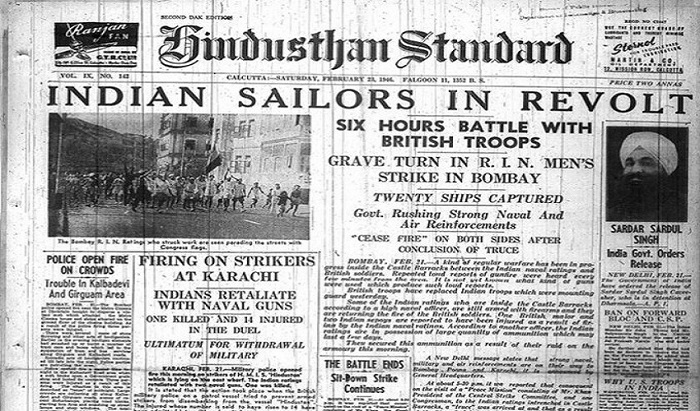
|
1946 |
| Our Last War of Independence: The Royal Indian Navy Mutiny of 1946 | |
| 1946 | |
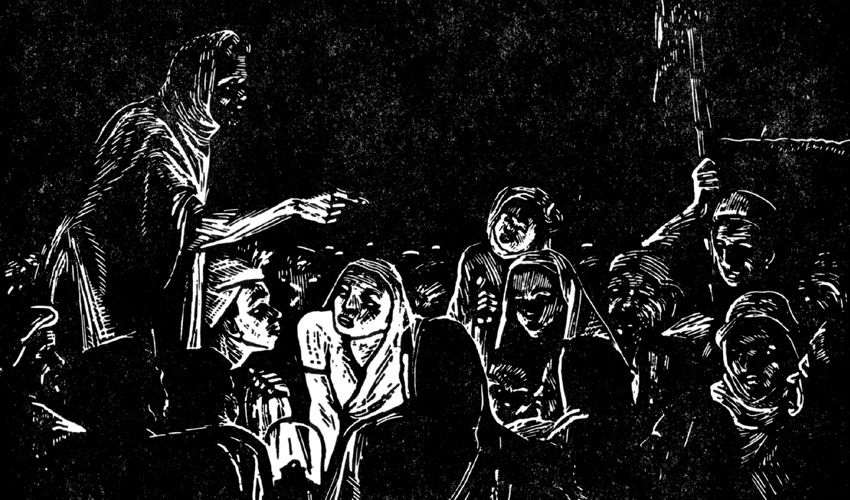
|
1946 |
| An Artist’s Account of the Tebhaga Movement in Pictures And Prose | |
| 1946 – 1947 | |
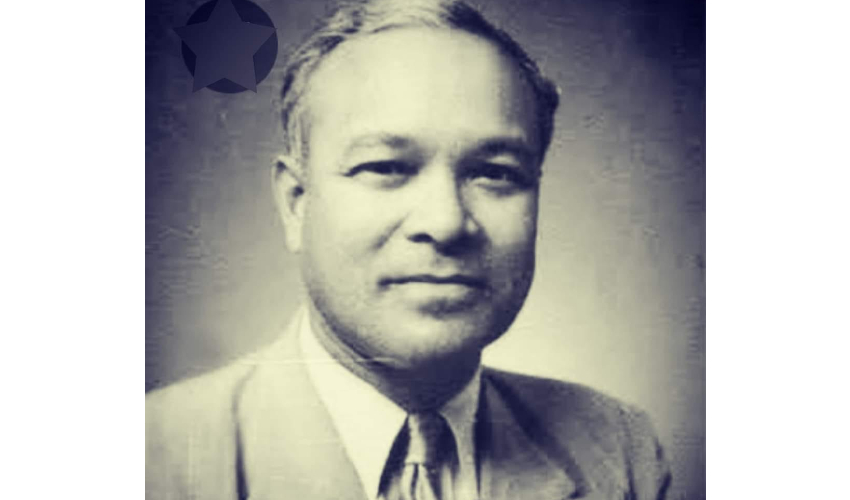
|
1946 – 1947 |
| “The Most Democratic People on Earth” : An Adivasi Voice in the Constituent Assembly | |
| 1946-1947 | |
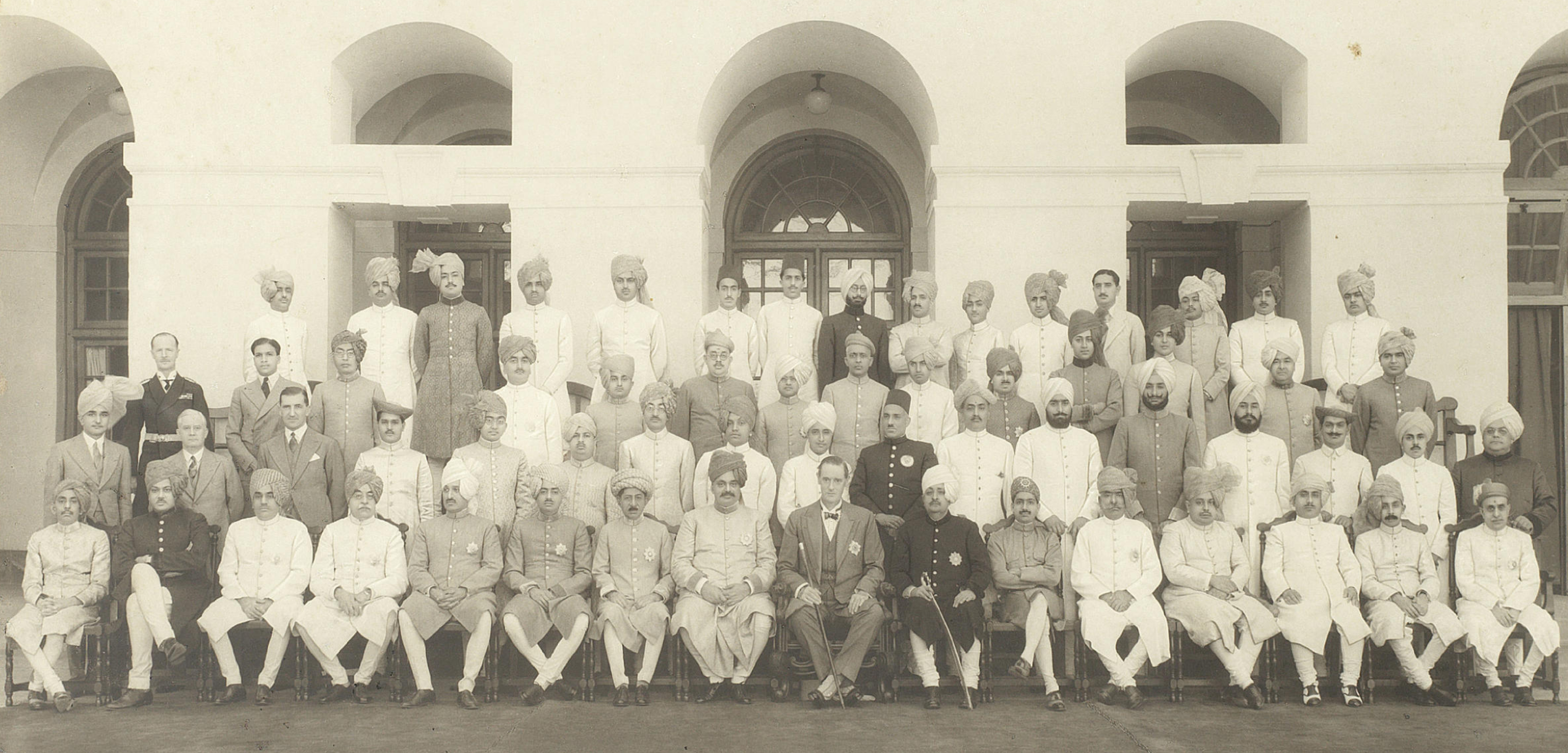
|
1946-1947 |
| VP Menon and the Birth of Independent India | |
| 1916 - 1947 | |
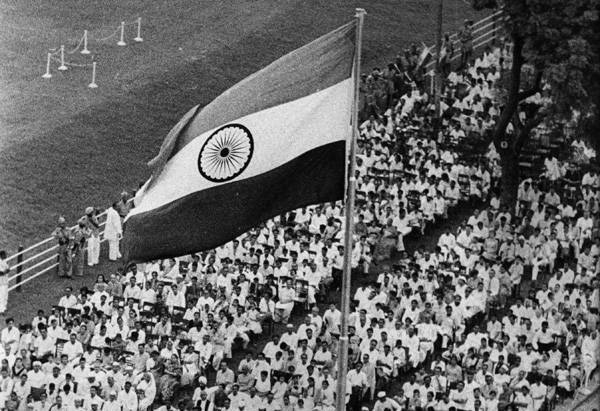
|
1916 - 1947 |
| 8 @ 75: 8 Speeches Independent Indians Must Read | |
| 1947-1951 | |
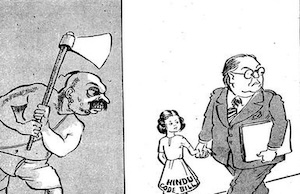
|
1947-1951 |
| Ambedkar Cartoons: The Joke’s On Us | |
| 1948 | |

|
1948 |
| “My Father, Do Not Rest” | |
| 1940-1960 | |

|
1940-1960 |
| Integration Myth: A Silenced History of Hyderabad | |
| 1948 | |
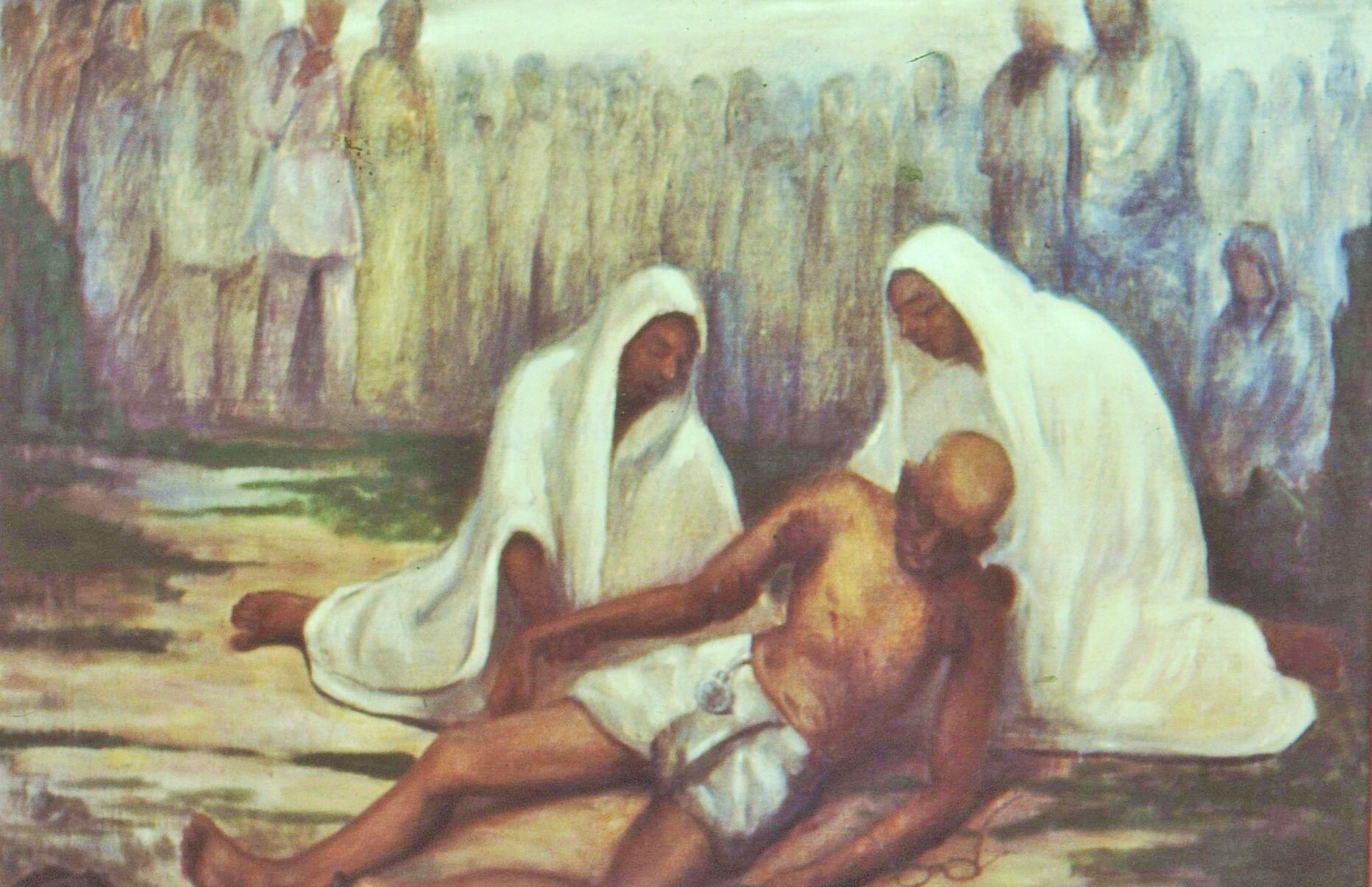
|
1948 |
| The Assassination of a Mahatma, the Princely States and the ‘Hindu’ Nation | |
| 1949 | |
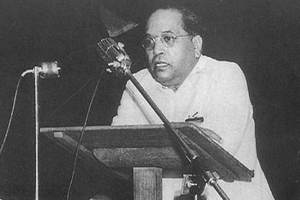
|
1949 |
| Ambedkar warns against India becoming a ‘Democracy in Form, Dictatorship in Fact’ | |
| 1950 | |
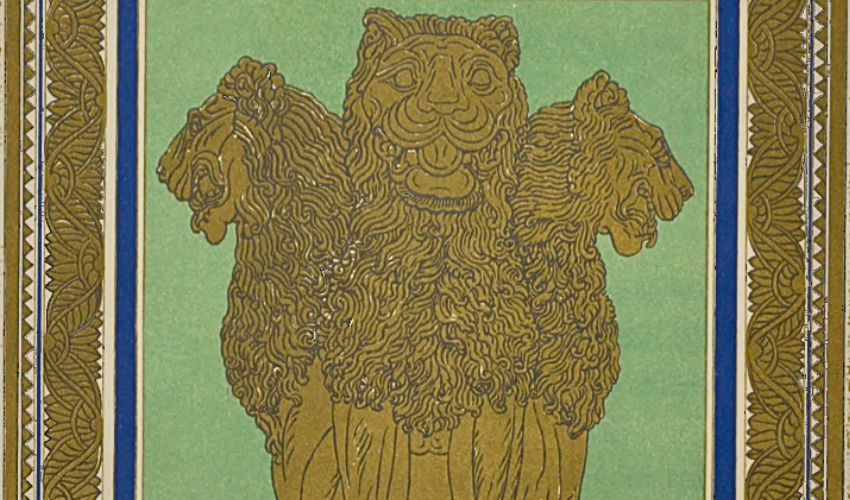
|
1950 |
| Illustrations from the constitution | |
| 1951 | |
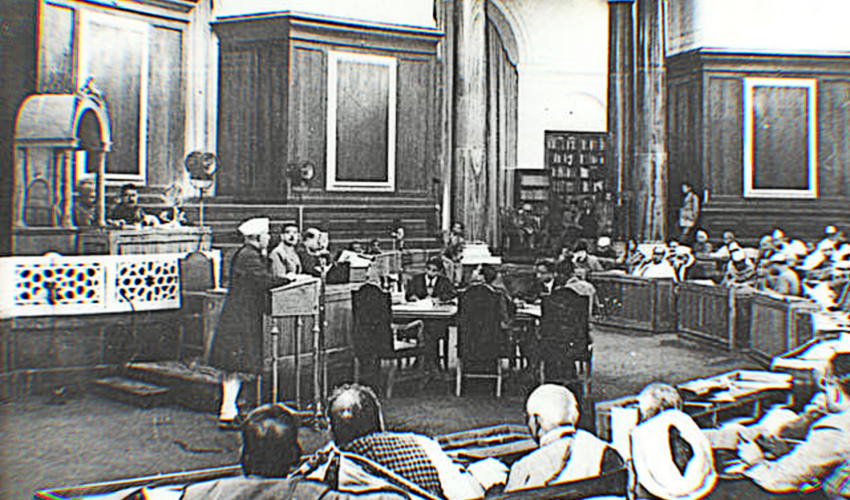
|
1951 |
| How the First Amendment to the Indian Constitution Circumscribed Our Freedoms & How it was Passed | |
| 1967 | |
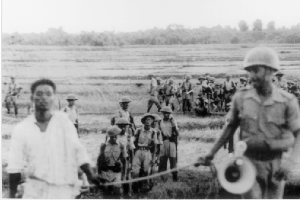
|
1967 |
| Once Upon A Time In Naxalbari | |
| 1970 | |
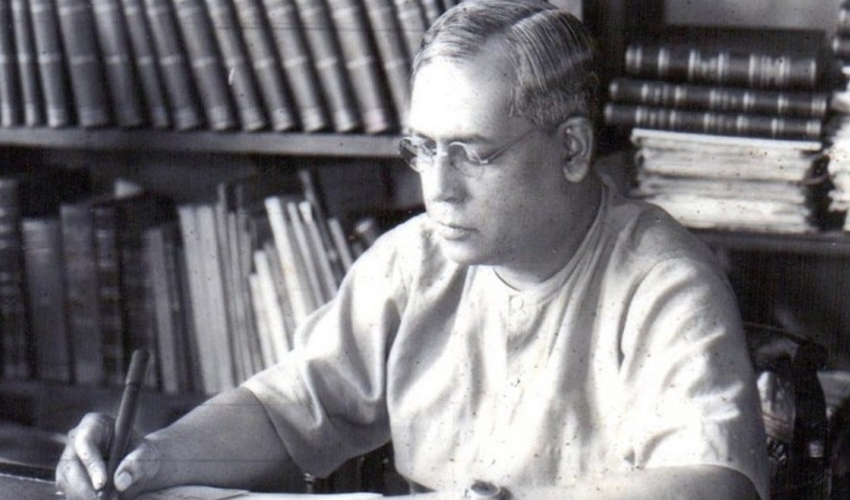
|
1970 |
| R.C. Majumdar on Shortcomings in Indian Historiography | |
| 1973 - 1993 | |
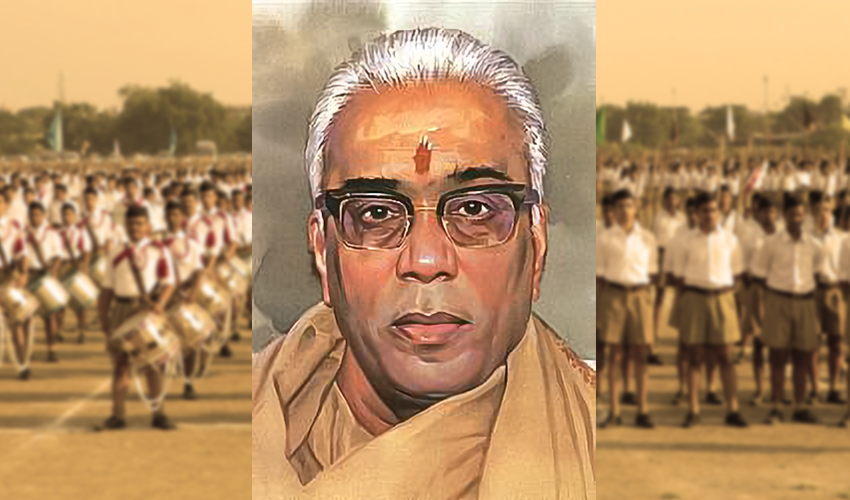
|
1973 - 1993 |
| Balasaheb Deoras: Kingmaker of the Sangh | |
| 1975 | |
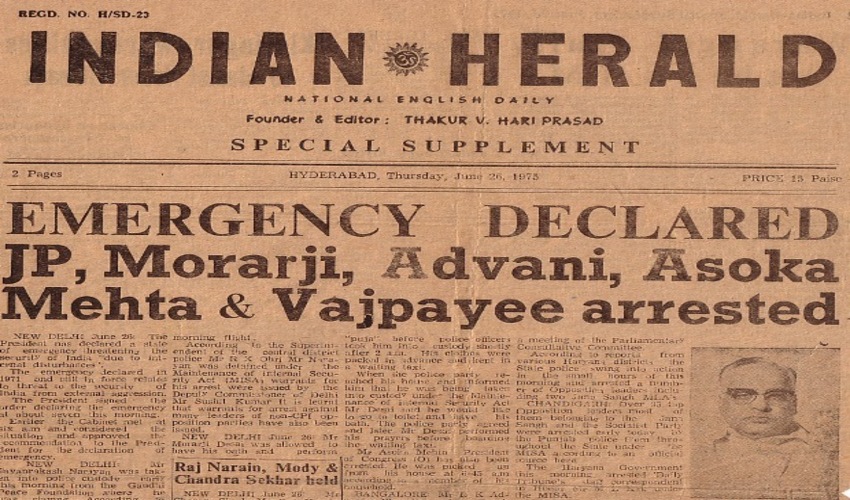
|
1975 |
| The Emergency Package: Shadow Power | |
| 1975 | |
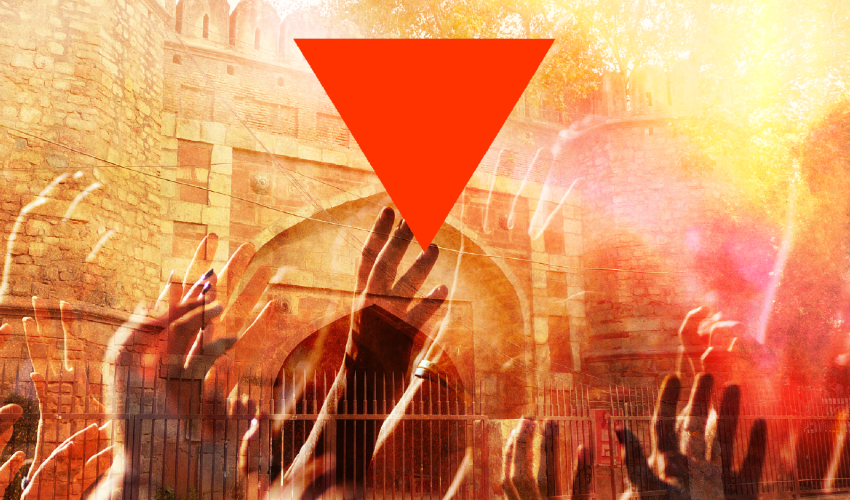
|
1975 |
| The Emergency Package: The Prehistory of Turkman Gate – Population Control | |
| 1977 – 2011 | |
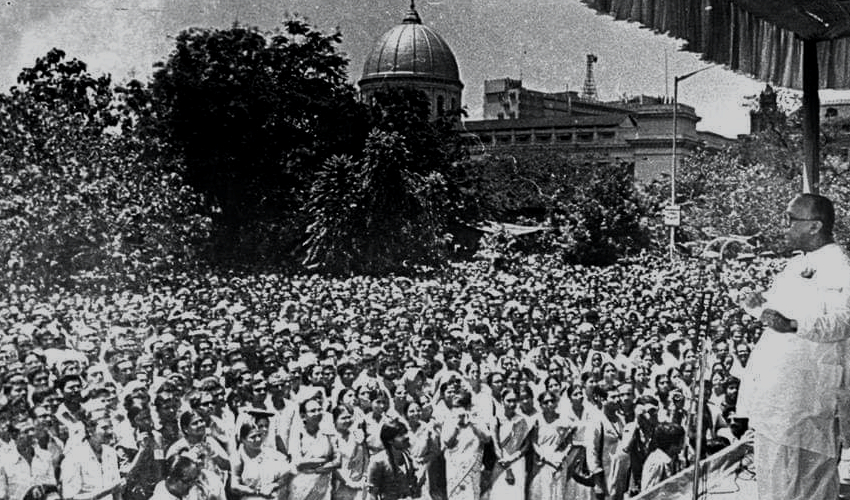
|
1977 – 2011 |
| Power is an Unforgiving Mistress: Lessons from the Decline of the Left in Bengal | |
| 1984 | |
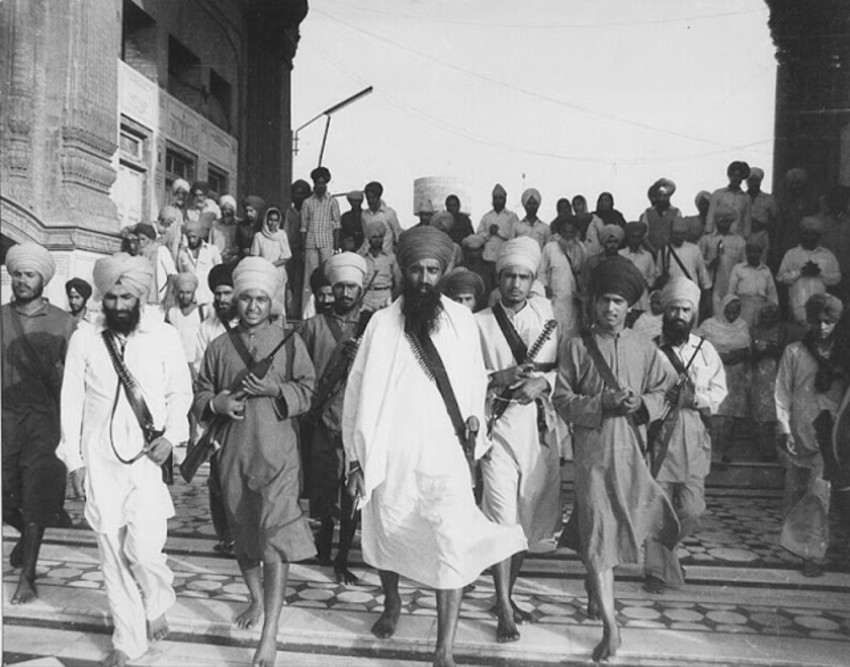
|
1984 |
| Mrs Gandhi’s Final Folly: Operation Blue Star | |
| 1916-2004 | |

|
1916-2004 |
| Amjad Ali Khan on M.S. Subbulakshmi: “A Glorious Chapter for Indian Classical Music” | |
| 2008 | |
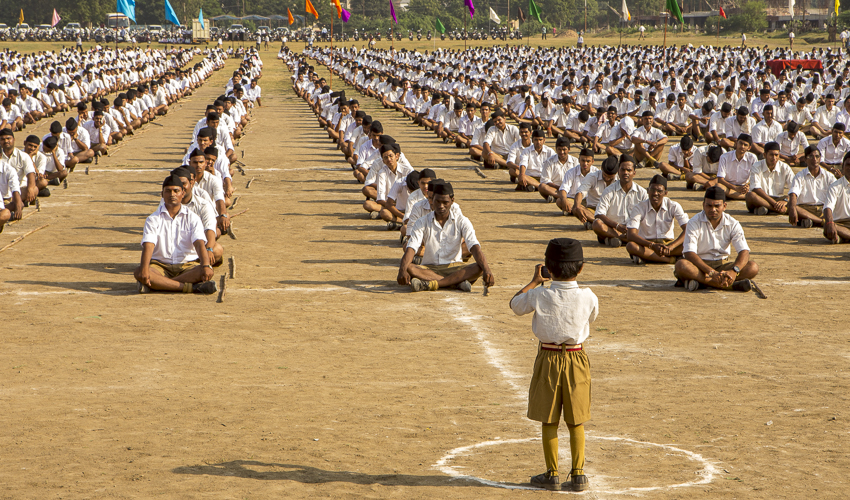
|
2008 |
| Whose History Textbook Is It Anyway? | |
| 2006 - 2009 | |

|
2006 - 2009 |
| Singur-Nandigram-Lalgarh: Movements that Remade Mamata Banerjee | |
| 2020 | |

|
2020 |
| The Indo-China Conflict: 10 Books We Need To Read | |
| 2021 | |
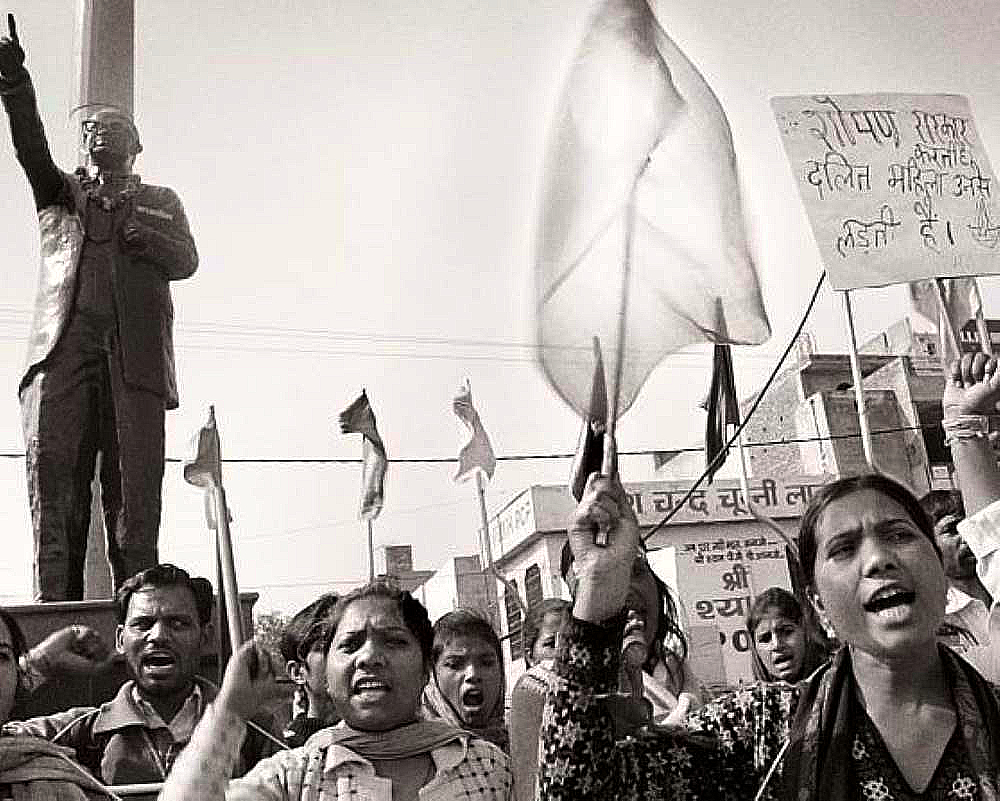
|
2021 |
| Singing/Writing Liberation: Dalit Women’s Narratives | |
The article “A Historian Recommends S.A. Khan’s Timeless Presidential Address for Historians and History Lovers” on indianhistorycollective.com is an enlightening and insightful read for anyone passionate about history. The author eloquently highlights the significance of S.A. Khan’s presidential address, which delves into various aspects of India’s history, politics, and cultural heritage. The blog offers a glimpse into the depth and richness of historical narratives, making it a captivating resource for both historians and history enthusiasts alike. The thoughtful analysis and commendation of S.A. Khan’s work inspire readers to delve deeper into the complexities and nuances of India’s past and present. A commendable piece that adds value to the study and appreciation of Indian history!
This thought-provoking article introduces readers to Sa. Khan’s impactful presidential address, offering a timeless perspective for historians and history enthusiasts. The piece highlights the significance of Khan’s insights in understanding India’s rich past, and emphasizes the intersection of history, politics, and culture. By discussing Khan’s address, the article serves as an entry point into exploring India’s complex historical narratives and the role they play in shaping the nation’s identity. A valuable resource for those passionate about history, politics, and the intricate tapestry of India’s past.